Resource
The Importance of Balance Exercises for Seniors

As we age, maintaining physical well-being becomes increasingly important, and one often overlooked aspect is balance. The ability to stay steady on our feet plays a crucial role in the overall health and quality of life for seniors. In this blog, we’ll delve into the significance of balance exercises for seniors and why incorporating them into daily routines can make a profound difference.
Preserving Independence
One of the primary benefits of balance exercises for seniors is the preservation of independence. As we age, the risk of falls increases, and maintaining good balance helps seniors navigate daily activities with confidence, reducing the likelihood of accidents that could compromise their independence.
Fall Prevention
Falls can have serious consequences for seniors, leading to injuries, hospitalizations, and a decline in overall health. Balance exercises are a proactive measure to prevent falls by improving stability, coordination, and reaction time, ultimately reducing the risk of accidents.
Enhancing Mobility
Balance exercises contribute to improved mobility and flexibility, allowing seniors to move more freely. By working on balance, seniors can maintain their range of motion, making it easier to perform activities such as walking, bending, and reaching without discomfort or strain.
Strengthening Muscles
Many balance exercises also target key muscle groups. Strengthening these muscles not only improves balance but also contributes to overall strength and endurance. This can have a positive impact on daily activities and reduce the risk of muscle-related injuries.
Boosting Cognitive Function
Engaging in balance exercises requires focus and concentration. This mental engagement is beneficial for cognitive function, helping to maintain and improve cognitive skills. The mind-body connection fostered by balance exercises is a valuable aspect of holistic senior wellness.
Social Engagement
Participating in group-based balance exercises can provide seniors with social interactions and a sense of community. This social engagement is essential for mental well-being and can contribute to a more fulfilling and connected lifestyle.
Accessible Exercise Options
Balance exercises need not be complicated or require special equipment. Many can be done in the comfort of one’s home and can be adapted to individual fitness levels. Simple activities like standing on one leg, walking heel-to-toe, or Tai Chi exercises can make a significant impact.
Incorporating Balance Exercises Into Daily Life
Seniors can easily incorporate balance exercises into their daily routines. Whether through structured exercise programs, recreational activities, or simple daily habits, finding opportunities to enhance balance is key to reaping the benefits.
Consulting Healthcare Professionals
Before starting any new exercise regimen, it’s crucial for seniors to consult with their healthcare providers. They can provide personalized advice based on individual health conditions and ensure that the chosen exercises are safe and effective.
In the journey towards healthy aging, balance exercises stand out as a fundamental component. By prioritizing activities that enhance balance, seniors can enjoy the physical, mental, and social benefits that contribute to a more vibrant and fulfilling life. So, let’s step into wellness and make balance exercises an integral part of the senior lifestyle.
Autism Care through CDPAP
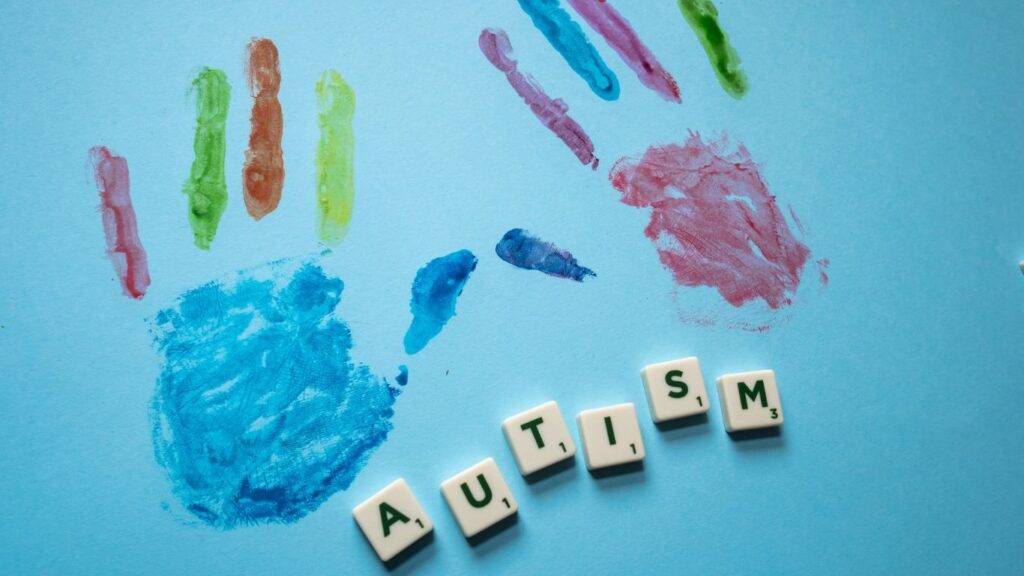
Caring for individuals with autism requires a unique and personalized approach, and the Consumer Directed Personal Assistance Program (CDPAP) has emerged as a valuable resource for families seeking flexibility and control in their caregiving journey. In this blog post, we explore the intersection of CDPAP and autism care, shedding light on how this program can empower families to provide the best possible support for their loved ones on the autism spectrum.
Tailoring Care to Autism Spectrum Needs:
Personalized Care Plans
CDPAP enables families to craft personalized care plans that cater specifically to the unique needs of individuals on the autism spectrum. This flexibility ensures that caregivers can implement strategies and approaches that resonate with the individual’s preferences and sensitivities.
Family Involvement
One of the distinctive features of CDPAP is the ability to choose family members as caregivers. This is particularly beneficial for individuals with autism, as the familiarity and understanding within the family dynamic can contribute significantly to a supportive and comfortable caregiving environment.
Skill Building and Social Interaction
Caregivers under CDPAP can focus on skill-building activities tailored to the individual’s developmental goals. This may include communication exercises, social interaction strategies, and activities designed to enhance cognitive abilities, all within the comfort of the individual’s home.
Consistent Routine and Environment
Individuals with autism often thrive in consistent routines and familiar environments. CDPAP allows for the creation of a stable caregiving routine within the individual’s home, minimizing disruptions and providing a comfortable setting for learning and growth.
Navigating the CDPAP Process for Autism Care:
Eligibility and Enrollment
Families interested in utilizing CDPAP for autism care should check eligibility criteria and initiate the enrollment process. This typically involves assessments to determine the individual’s needs and the level of support required.
Developing a Care Team
Once enrolled, families can actively participate in the selection of caregivers, ensuring that those involved in the care team have a deep understanding of autism and can provide compassionate, informed support.
Training and Collaboration
Caregivers within the CDPAP framework receive training, and families can collaborate with them to develop an understanding of autism-specific caregiving techniques. Effective communication between caregivers and families is key to a successful care plan.
CDPAP stands as a beacon of empowerment for families navigating the complexities of autism care. By offering flexibility, personalization, and the ability to choose family members as caregivers, CDPAP supports families in creating environments that cater specifically to the needs of individuals on the autism spectrum. As we continue to champion inclusivity and person-centered care, the synergy between CDPAP and autism care exemplifies a promising pathway for families seeking comprehensive and compassionate support for their loved ones.
How to Receive Payment as a Family Caregiver: 5 Effective Ways

Caring for a family member is a noble and often challenging responsibility, and as a family caregiver, it’s crucial to explore avenues for financial support. Fortunately, there are effective ways to receive payment for the invaluable care you provide. In this guide, we’ll delve into five practical strategies to help you navigate the process of compensation as a family caregiver.
Government Assistance Programs
Explore government-sponsored assistance programs designed to provide financial support to family caregivers. Medicaid, in particular, may have programs that compensate family members for caregiving services. Research your state’s specific programs and eligibility criteria to determine if you qualify for financial assistance.
Veteran Programs and Benefits
If the person you are caring for is a veteran, there may be additional benefits available. The U.S. Department of Veterans Affairs (VA) offers programs that provide financial assistance to family caregivers. Investigate the Aid and Attendance benefit, which offers support for those requiring the aid of a caregiver.
Long-Term Care Insurance
Check if the care recipient has long-term care insurance. Some policies cover in-home care and may provide compensation for family caregivers. Review the terms of the insurance policy carefully, and if eligible, coordinate with the insurance provider to ensure proper documentation and reimbursement.
Personal Care Agreement
Establishing a formalized personal care agreement is a proactive step towards receiving compensation for your caregiving services. This agreement, sometimes referred to as a caregiver contract, outlines the specific caregiving responsibilities, the agreed-upon compensation, and other pertinent terms. Consult with legal professionals to draft a comprehensive and legally binding agreement.
Family Caregiver Support Programs
Some organizations and non-profits offer support programs specifically aimed at family caregivers. These programs may include financial assistance, counseling services, and resources to help caregivers cope with the challenges they face. Explore local and national organizations to identify available support programs.
Important Considerations:
Legal and Financial Advice: Before implementing any compensation strategy, seek legal and financial advice to ensure compliance with regulations and tax implications.
Documentation: Keep thorough records of the care you provide, including tasks, hours worked, and any related expenses. This documentation can be essential when applying for compensation.
Taking Steps Towards Fair Compensation
Being a family caregiver is a demanding role, and it’s essential to explore avenues that can provide financial support for the crucial services you offer. Each family’s situation is unique, so consider a combination of these strategies or seek professional advice to determine the most effective approach for receiving payment as a family caregiver. By proactively navigating these options, you can ensure that your dedication and efforts are acknowledged and compensated appropriately.
Everything You Need to Know About NY Medicaid Cards

In the dynamic landscape of healthcare, understanding the intricacies of insurance is crucial for accessing essential services. For many residents in New York, Medicaid serves as a lifeline, providing comprehensive coverage for those who need it most. This article serves as your comprehensive guide, unlocking the details and benefits encapsulated within the NY Medicaid card—a veritable passport to essential healthcare services.
Navigating the NY Medicaid Landscape:
What is NY Medicaid?
New York Medicaid is a state and federally-funded program designed to provide healthcare coverage for eligible low-income individuals and families. The program aims to ensure that everyone has access to necessary medical services, regardless of their financial situation.
Who Qualifies for NY Medicaid?
Eligibility for NY Medicaid is based on income, family size, and other factors. Understanding the criteria for qualification is essential for those seeking healthcare coverage through this program.
Obtaining Your NY Medicaid Card: A Step-by-Step Guide
Learn the process of applying for and receiving your NY Medicaid card. From the initial application to the documentation required, we break down the steps to help you navigate the system seamlessly.
The Power of Your NY Medicaid Card:
Coverage and Benefits
Explore the range of medical services covered by NY Medicaid. From preventive care to specialized treatments, your Medicaid card opens doors to a spectrum of healthcare options.
Prescription Medication Coverage
Understand how your NY Medicaid card can alleviate the financial burden of prescription medications. Learn about the pharmacy network and the process for obtaining prescribed drugs.
Primary Care and Specialist Visits
Discover the flexibility of your NY Medicaid coverage when it comes to routine check-ups and visits to specialists. Your Medicaid card ensures that your healthcare needs are addressed comprehensively.
Staying Informed and Utilizing Resources:
Online Portals and Resources
Explore the online tools and resources available to Medicaid cardholders. From managing appointments to understanding your benefits, the digital landscape makes healthcare more accessible than ever.
Staying Updated on Policy Changes
Stay informed about any changes in NY Medicaid policies that may impact your coverage. This knowledge empowers you to make informed decisions about your healthcare.
Your NY Medicaid card is more than just a piece of plastic—it’s your passport to essential healthcare services. By understanding the ins and outs of the program, you can maximize the benefits and ensure that your health and well-being are prioritized. This blog serves as your guide through the complexities of NY Medicaid, empowering you to navigate the healthcare system with confidence and ease. Remember, your passport to healthcare is in your hands—let’s explore the possibilities together.
The Role of the Elderly Mobility Scale (EMS) in Mobility Assessment

As we age, maintaining optimal mobility becomes a key factor in preserving independence and quality of life. One valuable tool that healthcare professionals use to assess and understand an elderly individual’s mobility is the Elderly Mobility Scale (EMS). In this article, we will explore the significance and role of the EMS in the comprehensive assessment of mobility among the elderly.
Understanding the Elderly Mobility Scale (EMS):
What is the EMS?
The Elderly Mobility Scale is a standardized tool designed to measure the mobility of elderly individuals. Developed with the specific needs of seniors in mind, it offers a structured approach to evaluating various aspects of mobility.
Components of the EMS
Explore the key components that the EMS evaluates, including balance, gait, and functional mobility. Each element provides valuable insights into an individual’s ability to perform daily activities independently.
The Significance of Mobility Assessment:
Preserving Independence
Learn how mobility assessment with the EMS plays a crucial role in preserving and promoting independence among the elderly. By identifying areas of strength and areas that may need support, caregivers can tailor interventions to enhance overall well-being.
Early Detection of Decline
The EMS serves as a proactive tool for early detection of mobility decline. Discover how regular assessments can help healthcare professionals identify subtle changes in mobility, allowing for timely intervention and preventive measures.
Implementing the EMS in Clinical Practice:
The Assessment Process
Gain insights into how healthcare professionals administer the EMS. From the initial setup to the scoring system, understanding the assessment process is vital for both practitioners and caregivers.
Interpreting Results
Delve into the interpretation of EMS results. Learn how healthcare providers analyze the scores to create tailored care plans that address specific mobility challenges and enhance overall functioning.
Beyond the Numbers:
Tailoring Care Plans
Explore real-life examples of how EMS results influence the development of personalized care plans. From targeted exercises to environmental modifications, discover the multifaceted approach to improving mobility.
Empowering Patients
The EMS is not just a diagnostic tool but an empowering instrument for patients. Understand how involving elderly individuals in the assessment process fosters a sense of control and active participation in their care.
“The Role of the Elderly Mobility Scale (EMS) in Mobility Assessment” underscores the importance of proactive mobility evaluation in the aging population. By shedding light on the components, significance, and practical application of the EMS, this article aims to promote a deeper understanding of the role mobility assessment plays in enhancing the lives of the elderly. Whether you’re a healthcare professional, caregiver, or an individual on the path to aging gracefully, the EMS stands as a valuable ally in the quest for maintaining mobility, independence, and a high quality of life.
10 Stress Relief Tips for CDPAP Caregivers

Caring for a loved one through the Consumer Directed Personal Assistance Program (CDPAP) is a rewarding but demanding journey. The responsibilities of a caregiver can sometimes lead to stress and burnout. In this blog, we’ll explore effective stress relief tips tailored to CDPAP caregivers, empowering them to maintain their well-being while providing exceptional care.
Prioritize Self-Care
Caregivers often prioritize the needs of others over their own. Recognize the importance of self-care and allocate time for activities that bring you joy and relaxation. Whether it’s reading a book, taking a leisurely walk, or practicing mindfulness, make self-care a non-negotiable part of your routine.
Establish Clear Boundaries
Clearly define your caregiving responsibilities and set realistic boundaries. Know when to ask for help or delegate tasks. Establishing limits helps prevent feelings of overwhelm and allows you to provide better care without compromising your own well-being.
Seek Emotional Support
Connect with friends, family, or support groups where you can openly express your feelings and experiences. Sharing the challenges and triumphs of caregiving with others who understand can provide a valuable outlet for emotional support.
Time Management Strategies
Efficient time management is crucial for reducing stress. Prioritize tasks, create a schedule, and consider utilizing tools or apps that can help streamline your caregiving responsibilities. A well-organized routine can alleviate the pressure of managing multiple responsibilities.
Utilize Respite Care Services
Take advantage of respite care services that offer temporary relief for caregivers. This allows you to step away and recharge, knowing your loved one is in capable hands. Respite care can be a powerful tool in preventing burnout.
Incorporate Relaxation Techniques
Integrate relaxation techniques into your daily routine. Deep breathing exercises, meditation, or gentle yoga can help alleviate stress and promote a sense of calm. These practices can be done in short intervals, making them easily accessible throughout the day.
Stay Informed
Educate yourself about available resources and support services. Understanding your options can empower you to navigate the caregiving journey more effectively. Stay informed about CDPAP updates, local support groups, and relevant community services.
Delegate When Possible
Don’t hesitate to involve other family members or friends in the caregiving process. Delegating tasks can lighten your workload and foster a sense of shared responsibility. Communicate openly about your needs and the support you require.
Professional Development
Consider participating in workshops or training sessions related to caregiving. Continuous learning can enhance your skills, boost your confidence, and provide a sense of professional development within the caregiving role.
Celebrate Achievements
Acknowledge and celebrate both small and significant achievements in your caregiving journey. Recognizing your efforts and the positive impact you have on your loved one’s life can contribute to a more positive mindset.
Balancing Caregiving and Self-Care
CDPAP caregivers play a vital role in enhancing the lives of their loved ones, but it’s equally crucial to prioritize their own well-being. By incorporating these stress relief tips into their daily lives, caregivers can find balance, resilience, and a renewed sense of purpose in their caregiving journey. Remember, taking care of yourself is an essential part of providing the best care for others.
Enhancing Quality of Life: Personalized Elderly Companion Care in New York City

As the bustling metropolis of New York City continues to thrive, the need for specialized elderly companion care becomes increasingly important. In the heart of the city that never sleeps, seniors deserve personalized attention and companionship that caters to their unique needs. This blog explores the significance of personalized elderly companion care in New York City, highlighting the benefits it brings to the elderly population.
The Vibrant Tapestry of New York City:
New York City, with its vibrant culture and fast-paced lifestyle, presents a unique environment for seniors. Amidst the towering skyscrapers and bustling streets, many elderly individuals find themselves seeking companionship and personalized care to navigate the challenges that come with aging.
Understanding Personalized Elderly Companion Care:
Personalized elderly companion care goes beyond the conventional support systems. It involves tailoring companionship services to meet the specific needs and preferences of each individual. This approach not only addresses physical well-being but also focuses on emotional and mental health.
Tailored Services for Unique Needs:
In a city as diverse as New York, the elderly population represents a rich tapestry of cultures, backgrounds, and lifestyles. Personalized companion care recognizes and respects these differences, offering tailored services that cater to the unique needs of each senior. Whether it’s assistance with daily activities, cultural engagement, or simply providing a friendly ear, personalized care ensures that every senior receives the attention they deserve.
Promoting Independence and Dignity:
One of the key benefits of personalized elderly companion care is its emphasis on promoting independence and dignity. Seniors can maintain a sense of control over their lives while receiving the necessary support to thrive in their daily activities. This balance is crucial for a fulfilling and enriched quality of life.
Companionship Beyond Care:
Beyond the physical assistance, personalized companion care fosters meaningful connections and friendships. Seniors in New York City can benefit from engaging in conversations, shared activities, and the companionship of a caring individual who understands their unique experiences. This social aspect plays a vital role in combating loneliness and isolation.
The Role of Technology in Personalized Care:
In the digital age, technology plays a pivotal role in enhancing personalized elderly companion care. From video calls to virtual activities, seniors can stay connected with their caregivers and loved ones, breaking down the barriers of physical distance and providing a sense of continuity.
In the city that never sleeps, personalized elderly companion care emerges as a beacon of support for seniors navigating the complexities of aging. By embracing the unique needs of each individual, this form of care not only enhances their quality of life but also contributes to the rich tapestry of diversity that defines New York City. As we continue to prioritize the well-being of our elderly population, personalized companion care stands as a testament to the city’s commitment to providing compassionate and tailored support for all its residents.
Navigating the Maze: Understanding the Concept of Polypharmacy

In the realm of healthcare, the term “polypharmacy” has become increasingly prevalent, representing a complex landscape that many individuals find challenging to navigate. This blog aims to shed light on the concept of polypharmacy, unraveling its intricacies and exploring its implications for individuals and healthcare professionals alike.
Defining Polypharmacy:
Polypharmacy, at its core, refers to the simultaneous use of multiple medications by an individual. While the intention behind prescribing multiple drugs is often to manage various health conditions, the practice can lead to unintended consequences. The challenge lies in striking a delicate balance between providing effective treatment and minimizing potential risks associated with multiple medications.
The Growing Trend:
In an era where medical advancements have led to an increased number of available medications, polypharmacy has become a growing concern. Aging populations, complex health conditions, and evolving treatment options contribute to the rising prevalence of individuals managing multiple prescriptions simultaneously.
Unraveling the Risks:
While medications can undoubtedly improve health outcomes, the risk of adverse effects and drug interactions escalates with each added prescription. Polypharmacy may lead to side effects, reduced medication adherence, and, in some cases, exacerbation of existing health issues. Understanding these risks is crucial for both healthcare providers and individuals managing their health.
Patient-Centered Approaches:
Navigating the maze of polypharmacy requires a patient-centered approach. Healthcare providers must communicate openly with patients, discuss their treatment plans, address concerns, and actively involve them in decision-making processes. Tailoring medication regimens to individual needs and regularly reviewing prescriptions are vital steps in mitigating the risks associated with polypharmacy.
Technology as an Aid:
In the digital age, technology plays a pivotal role in managing polypharmacy. Medication management apps, electronic health records, and telehealth services provide valuable tools for healthcare providers and patients alike. These technologies facilitate communication, track medication adherence, and offer timely reminders, contributing to a more streamlined and coordinated approach to healthcare.
Empowering Patients:
Understanding polypharmacy empowers individuals to actively participate in their healthcare journey. Patients who are knowledgeable about their medications, potential interactions, and side effects are better equipped to collaborate with healthcare providers to optimize their treatment plans. Education becomes a key component in fostering a proactive and informed patient population.
The Role of Healthcare Providers:
Healthcare providers play a crucial role in addressing polypharmacy challenges. Regular medication reviews, clear communication with patients, and a holistic approach to treatment planning are essential components of effective healthcare delivery. Collaboration among healthcare professionals, including pharmacists, can further enhance the quality of care provided.
In the intricate web of healthcare, understanding and addressing polypharmacy is paramount to ensuring the well-being of individuals managing multiple medications. Navigating this maze requires collaboration, communication, and a commitment to patient-centered care. By unraveling the complexities of polypharmacy, healthcare providers and patients alike can work together to strike the right balance between effective treatment and minimizing potential risks, ultimately leading to improved health outcomes and a higher quality of life.
A Closer Look at Social Services in Nassau County
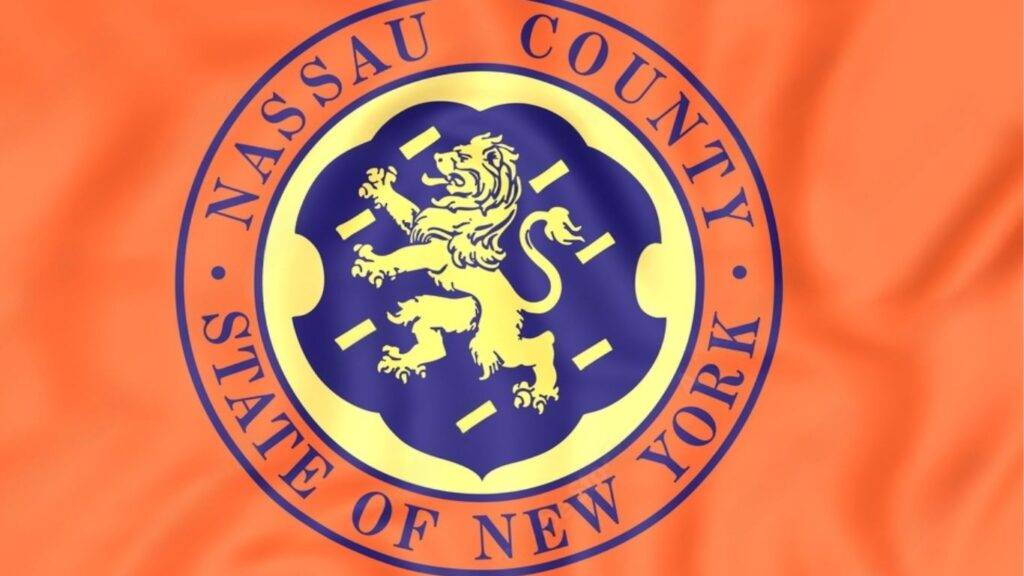
In the intricate tapestry of Suffolk County, New York, the threads of community support are woven through the fabric of Social Services. This blog aims to provide a comprehensive exploration of the various assistance programs and initiatives that serve as vital connectors, binding communities together in times of need. Join us as we take a closer look at the essential role played by Suffolk County Social Services in fostering a supportive and resilient community.
Overview of Suffolk County Social Services
At the heart of Suffolk County lies a network of social services designed to enhance the well-being of its residents. From financial assistance to healthcare support, these services aim to create a safety net that ensures no one in the community is left behind.
Financial Assistance Programs
Discover the array of financial assistance programs available through Suffolk County Social Services. Whether it’s temporary financial aid, food assistance, or housing support, these programs are designed to address the diverse needs of individuals and families facing economic challenges.
Health and Wellness Initiatives
Delve into the healthcare and wellness initiatives that contribute to the overall health of Suffolk County residents. Learn about access to medical services, mental health support, and public health programs that promote a healthier and more resilient community.
Community Development and Support Services
Explore how Suffolk County Social Services plays a pivotal role in community development. From childcare assistance to employment support, these services contribute to the growth and stability of local neighborhoods.
Navigating the Application Process
Understanding how to access these services is crucial. We’ll guide you through the application process, providing tips and insights to make it a more straightforward and user-friendly experience.
Success Stories and Testimonials
Hear from individuals and families who have benefited from Suffolk County Social Services. Real-life success stories and testimonials shed light on the positive impact these programs have had on the lives of community members.
Community Outreach and Events
Learn about the various outreach initiatives and events organized by Suffolk County Social Services. These efforts foster community engagement, awareness, and collaboration, strengthening the bonds that hold Suffolk County together.
Collaborations with Local Organizations
Explore the collaborative efforts between Suffolk County Social Services and local organizations. These partnerships amplify the impact of community support initiatives, creating a united front against challenges.
Future Directions and Innovations
Stay informed about the future directions and innovative strategies being implemented by Suffolk County Social Services. Discover how the county is adapting to evolving community needs and emerging challenges.
Your Role in Community Support
Conclude the journey by understanding how residents can actively contribute to community support. Whether through volunteering, advocacy, or simply spreading awareness, every member plays a crucial role in strengthening the fabric of Suffolk County.
Suffolk County Social Services serves as the bridge that connects communities, providing essential support and fostering resilience. By understanding the breadth of services available and the impact they have, we can collectively work towards creating a community that thrives, supports, and uplifts every individual within its embrace.
A Closer Look at Social Services in Erie County
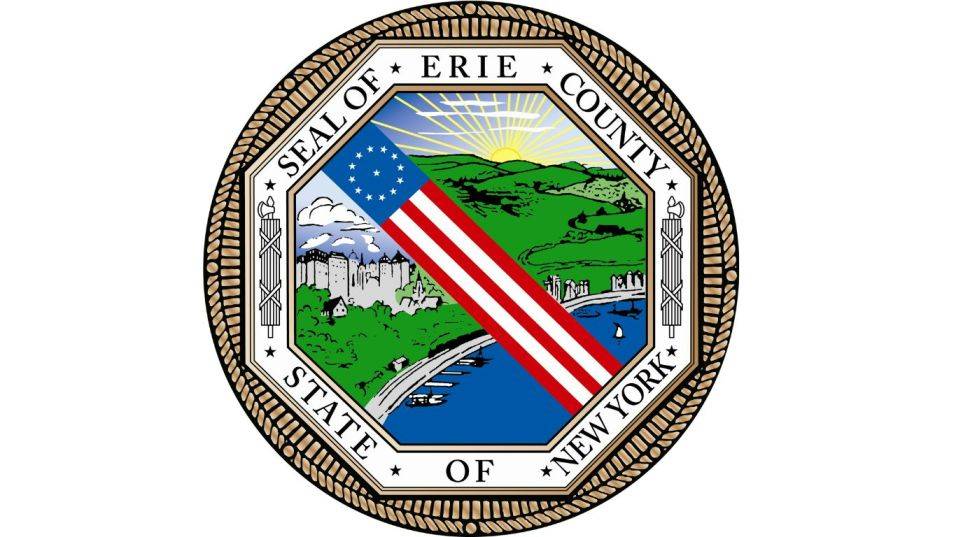
In the heart of Western New York, Erie County stands as a community that thrives on support, compassion, and unity. At the core of this thriving community lies a robust network of Social Services, diligently working to uplift and empower residents. In this blog, we take a closer look at the various facets of Social Services in Erie County, uncovering the essential role they play in enhancing the well-being of individuals and families.
Financial Assistance Programs
Delve into the financial assistance programs offered by Erie County Social Services. From temporary aid to housing support, these programs are crucial in providing a safety net for those facing economic challenges.
Health and Wellness Initiatives
Explore the healthcare and wellness initiatives aimed at promoting the overall health of Erie County residents. Learn about access to medical services, mental health support, and public health programs that contribute to a healthier community.
Community Development and Support Services
Understand the role of Social Services in community development. From childcare assistance to employment support, these services play a vital role in fostering growth and stability within local neighborhoods.
Application Process
Navigating the application process is a key aspect. This section will guide you through the steps, offering tips and insights to make the process more accessible and user-friendly.
Real-Life Impact
Hear inspiring stories of individuals and families who have experienced positive transformations through Erie County Social Services. Real-life testimonials highlight the impact of community support initiatives.
Community Outreach and Events
Learn about the various outreach initiatives and events organized by Erie County Social Services. These efforts not only raise awareness but also foster community engagement and collaboration.
Partnerships with Local Organizations
Explore the collaborative efforts between Erie County Social Services and local organizations. Discover how partnerships amplify the impact of community support initiatives, creating a united front against challenges.
Future Directions and Innovations
Stay informed about the future directions and innovative strategies being implemented by Erie County Social Services. Understand how the county is adapting to emerging needs and challenges within the community.
Your Role in Community Support
Conclude by exploring how residents can actively contribute to community support. Whether through volunteering, advocacy, or spreading awareness, every member plays a crucial role in strengthening the fabric of Erie County.
Erie County Social Services stands as a beacon of support and resilience within the community. By taking a closer look at the initiatives and programs in place, we gain a deeper understanding of the impact these services have on the lives of residents. Together, through awareness and active participation, we can continue to build a community that thrives on compassion, connection, and the unwavering support of Erie County Social Services.
Navigating the Path to Approval: A Guide to Securing Disability Benefits

Embarking on the journey to obtain disability benefits can be a daunting task, but with the right knowledge and preparation, you can navigate the process more smoothly. In this article, we’ll delve into the key steps to increase your chances of getting approved for disability benefits, with a focus on the Supplemental Security Income (SSI) and Social Security Disability Insurance (SSDI) programs.
Understanding SSI and SSDI
Before we dive into the approval process, let’s distinguish between SSI and SSDI.
Supplemental Security Income (SSI)
SSI is a need-based program designed to assist individuals with limited income and resources. Eligibility is not solely based on work history but considers financial need. To qualify for SSI, applicants must meet strict income and asset criteria.
Social Security Disability Insurance (SSDI)
SSDI, on the other hand, is based on work history and contributions to the Social Security system. To qualify for SSDI, applicants must have accumulated enough work credits through employment. The severity of the disability is a crucial factor in SSDI approval.
Key Steps to Increase Approval Odds:
Understand Eligibility Criteria
Familiarize yourself with the specific eligibility requirements for SSI and SSDI. Knowing the criteria for each program will help you determine which one aligns with your situation.
Gather Medical Evidence
Comprehensive medical documentation is crucial. Collect records, reports, and statements from healthcare providers that clearly outline the nature and impact of your disability on your ability to work.
Complete the Application Accurately
Pay close attention to the details when filling out your application. Be thorough and accurate in describing your medical condition, work history, and daily activities. Any inconsistencies may lead to delays or denials.
Seek Professional Guidance
Consider seeking assistance from a disability advocate or attorney. These professionals are well-versed in the application process, can guide you through potential pitfalls, and improve the overall strength of your case.
Prepare for the Possibility of Denial
Unfortunately, denials are not uncommon. If your application is denied, don’t be discouraged. You have the right to appeal the decision. Understand the reasons for denial, gather additional evidence if necessary, and follow the appeals process diligently.
Securing disability benefits involves navigating a complex system, but with the right approach, you can enhance your chances of approval. Understanding the distinctions between SSI and SSDI, gathering comprehensive medical evidence, accurately completing your application, seeking professional guidance, and being prepared for potential denials are all key steps in this process. Remember, persistence is crucial, and you have the right to appeal any unfavorable decisions. By staying informed and proactive, you can increase your likelihood of successfully obtaining the disability benefits you deserve.
A Comprehensive Look at Low-Income Housing Options in Albany, NY

In the heart of Albany, NY, finding an affordable place to call home is a crucial aspect of building a stable life. This article is your go-to guide for navigating the landscape of low-income housing options in Albany, ensuring that the dream of a comfortable and affordable home becomes a reality.
Understanding Low-Income Housing Programs
Albany, like many cities, offers various programs aimed at providing housing solutions for individuals and families with limited financial resources. These programs often include subsidies, tax credits, and partnerships with property developers to create affordable housing units.
Albany Housing Authority (AHA)
The Albany Housing Authority is a key player in the city’s efforts to provide affordable housing. Their programs, such as Section 8 Housing Choice Vouchers, offer eligible individuals the flexibility to choose their housing while receiving rental assistance.
Low-Income Tax Credit Properties
Albany has a number of properties developed under the Low-Income Housing Tax Credit program. These properties provide affordable rental options for individuals and families meeting specific income criteria.
Non-Profit Organizations
Several non-profit organizations in Albany focus on affordable housing initiatives. They may offer rental assistance, supportive housing, or affordable homeownership programs.
Navigating the Application Process:
Research Eligibility Criteria
Different housing programs have specific eligibility criteria. Understand these criteria to determine which programs align with your circumstances.
Gather Necessary Documentation
Prepare the required documentation, such as proof of income, identification, and any additional documents specified by the housing programs. Having a complete and organized set of documents streamlines the application process.
Apply Early and Thoroughly
Once you’ve identified suitable housing options, submit your applications early and ensure they are complete. Pay attention to deadlines and provide accurate information to avoid delays in processing.
Local Resources and Support:
Albany Community Action Partnership (ACAP)
ACAP provides various services, including housing assistance and energy efficiency programs. They can guide you through the process and connect you with additional resources.
Legal Aid Services
If you encounter challenges during the application process, consider seeking legal advice. Legal aid services in Albany may offer assistance to low-income individuals facing housing issues.
“Home Sweet Affordable Home” in Albany is not just a dream; it’s an achievable reality. By understanding the available housing programs, navigating the application process diligently, and tapping into local resources and support, you can embark on the journey toward securing a stable and affordable place to call home in Albany, NY. Remember, the key is to stay informed, be proactive, and take advantage of the resources available to make your housing dreams a reality.
A Comprehensive Look at Low-Income Housing Options in Buffalo, New York

Buffalo, New York, a city rich in culture and history, is home to a diverse population facing the common challenge of finding affordable housing. For individuals and families navigating the complexities of limited financial resources, understanding the array of low-income housing options is essential. This article offers a comprehensive exploration of the various avenues available in Buffalo, NY, ensuring that affordable and stable housing becomes a reality for all.
Buffalo Municipal Housing Authority (BMHA)
The Buffalo Municipal Housing Authority plays a vital role in addressing the city’s housing needs. BMHA offers various housing programs, including public housing and the Housing Choice Voucher Program (Section 8). Exploring these options can provide eligible individuals and families with choices to suit their specific needs.
Low-Income Tax Credit Properties
Buffalo benefits from the Low-Income Housing Tax Credit program, fostering the development of affordable housing units. These properties provide rental options for individuals and families meeting specific income criteria. Investigating tax credit properties broadens the range of possibilities for those seeking affordable living spaces.
Non-Profit Organizations and Supportive Housing
Non-profit organizations in Buffalo actively contribute to the city’s affordable housing landscape. These organizations may offer supportive housing initiatives, rental assistance programs, or pathways to affordable homeownership. Understanding these resources can lead to housing solutions tailored to individual circumstances.
Navigating the Application Process:
Understand Eligibility Criteria
Each housing program comes with its own set of eligibility criteria. Understanding these criteria is crucial in identifying the programs that align with your circumstances. This knowledge empowers applicants to make informed choices.
Gather Documentation
Preparation is key. Gather the necessary documentation, including proof of income, identification, and any other documents specified by the housing programs. Having a comprehensive and organized set of documents streamlines the application process.
Apply Early and Diligently
With a clear understanding of eligibility and all documentation in order, submit applications early and thoroughly. Being proactive and adhering to deadlines enhances the chances of a smooth and efficient application process.
Local Resources and Support:
Buffalo Urban League
The Buffalo Urban League is a valuable resource for individuals seeking housing assistance. They offer a range of services, including housing counseling and support. Connecting with the Buffalo Urban League can provide guidance and access to additional resources.
Legal Aid Services
In cases where challenges arise during the application process, seeking legal advice can be beneficial. Legal aid services in Buffalo may offer assistance to low-income individuals facing housing-related issues.
A comprehensive understanding of low-income housing options in Buffalo, NY, is a crucial step toward securing stable and affordable living arrangements. By exploring programs offered by the Buffalo Municipal Housing Authority, tax credit properties, and non-profit organizations, and leveraging local resources, individuals and families can navigate the application process with confidence. Knowledge is the key to unlocking doors to affordable housing in Buffalo, ensuring that everyone has the opportunity to call this diverse and vibrant city their home.
A Guide on Low-Income Housing Options in Rochester, NY

Rochester, New York, with its rich history and diverse community, presents both challenges and opportunities for individuals and families seeking affordable housing. This comprehensive guide aims to shed light on the various low-income housing options available in Rochester, providing essential information to empower residents in their quest for secure and budget-friendly living arrangements.
Rochester Housing Authority (RHA)
The Rochester Housing Authority plays a pivotal role in addressing the city’s housing needs. RHA offers public housing and Section 8 Housing Choice Vouchers, providing eligible individuals and families with options to suit their specific requirements. Understanding the workings of these programs can open doors to a range of housing possibilities.
Low-Income Tax Credit Properties
Rochester benefits from the Low-Income Housing Tax Credit program, which encourages the development of affordable housing units. These properties offer rental options for individuals and families meeting specific income criteria. Exploring tax credit properties broadens the spectrum of choices for those seeking affordable living spaces.
Non-Profit Organizations and Supportive Housing
Several non-profit organizations in Rochester actively contribute to the city’s affordable housing landscape. These organizations may offer supportive housing initiatives, rental assistance programs, or pathways to affordable homeownership. Familiarizing yourself with these resources can lead to housing solutions tailored to individual needs.
Navigating the Application Process:
Understand Eligibility Criteria
Each housing program has its own set of eligibility criteria. It is crucial to understand these criteria to identify the programs that align with your circumstances. This knowledge empowers applicants to make informed decisions.
Gather Documentation
Preparation is key. Gather the necessary documentation, including proof of income, identification, and any other documents specified by the housing programs. Having a comprehensive and organized set of documents streamlines the application process.
Apply Early and Diligently
With a clear understanding of eligibility and all documentation in order, submit applications early and thoroughly. Being proactive and adhering to deadlines enhances the chances of a smooth and efficient application process.
Local Resources and Support:
PathStone Corporation
The PathStone Corporation is a valuable resource for individuals seeking housing assistance in Rochester. They offer a range of services, including housing counseling and support. Connecting with PathStone can provide guidance and access to additional resources.
Legal Aid Services
In cases where challenges arise during the application process, seeking legal advice can be beneficial. Legal aid services in Rochester may offer assistance to low-income individuals facing housing-related issues.
A comprehensive understanding of low-income housing options in Rochester, NY, is vital for those navigating the path to affordable living. By exploring programs offered by the Rochester Housing Authority, tax credit properties, and non-profit organizations, and leveraging local resources, individuals and families can navigate the application process with confidence. Knowledge is the key to unlocking doors to stable and affordable housing in Rochester, ensuring that everyone has the opportunity to call this vibrant city their home.
The Ins and Outs of the Medicaid Management Information System

In the dynamic world of healthcare administration, the Medicaid Management Information System (MMIS) stands as a powerful tool, often unseen but playing a vital role in the seamless delivery and management of Medicaid services. This article is your key to unlocking the potential of MMIS, providing an in-depth exploration of its functionalities, significance, and the transformative impact it has on the healthcare landscape.
Demystifying MMIS: A Comprehensive Overview
The Medicaid Management Information System (MMIS) is more than just an acronym; it is the backbone of Medicaid program administration. At its core, MMIS is designed to streamline and enhance the efficiency of managing Medicaid services, covering a spectrum of critical functions.
Claims Processing: The Heartbeat of MMIS
At the heart of MMIS lies its robust claims processing capabilities. The system handles the submission, adjudication, and payment of Medicaid claims from healthcare providers. This ensures that the financial transactions within the Medicaid ecosystem are accurate, timely, and transparent.
Beneficiary Eligibility Verification: Ensuring Access to Care
MMIS maintains a comprehensive database of Medicaid beneficiaries, continually verifying and updating eligibility information. This critical component guarantees that individuals receive the necessary healthcare services based on their eligibility status, fostering accessibility and equitable care.
Provider Enrollment and Management: Fostering Collaboration
Facilitating the enrollment and management of healthcare providers is another key function of MMIS. The system streamlines the often intricate process of provider registration and credentialing, ensuring that Medicaid beneficiaries have access to a network of qualified and approved healthcare professionals.
Data Analytics and Reporting: Turning Data into Action
Beyond its operational functions, MMIS serves as a treasure trove of data. Through advanced analytics and reporting tools, MMIS generates insights that empower administrators and policymakers. These data-driven insights enable informed decision-making, policy adjustments, and improved overall program performance.
Integration with Other Systems: Seamless Coordination
MMIS is not an isolated entity; it operates within a broader healthcare ecosystem. Designed for interoperability, MMIS integrates with various healthcare systems, ensuring seamless information exchange. This collaborative approach enhances coordination and communication across different facets of the healthcare landscape.
Unlocking the Potential: Benefits of MMIS:
- Efficiency and Accuracy: MMIS automates administrative tasks, reducing errors and enhancing the overall efficiency of Medicaid program management.
- Cost Savings: Through streamlining processes and reducing manual interventions, MMIS contributes to cost savings for both state and federal healthcare entities.
- Enhanced Data Security: MMIS incorporates robust security measures to safeguard sensitive healthcare data, ensuring compliance with privacy regulations and standards.
Understanding the ins and outs of the Medicaid Management Information System is pivotal in unleashing its transformative power. MMIS goes beyond mere data processing; it’s a catalyst for efficiency, transparency, and improved healthcare outcomes. As we unlock the potential of MMIS, we pave the way for a healthcare landscape that is not only efficient but also equitable and responsive to the needs of those it serves.
Spend Wisely, Qualify Easily: A Guide to Asset Spend-Down for Medicaid

Navigating the intricacies of Medicaid eligibility can be a challenging task, especially when it comes to managing your assets. However, understanding the process of asset spend-down can significantly simplify the qualification journey. In this guide, we’ll explore how to spend wisely to qualify easily for Medicaid, ensuring that you make informed decisions to access the healthcare assistance you need.
Understanding Asset Spend-Down: The Basics
Medicaid is a crucial support system for individuals and families, providing essential healthcare coverage. However, eligibility is often contingent on meeting specific financial criteria, including having limited assets. Asset spend-down is a strategic approach that involves reducing your countable assets to meet Medicaid’s financial requirements.
Step-by-Step Guide to Spend Down Assets for Medicaid Qualification:
Know Your Medicaid Asset Limits
Familiarize yourself with the asset limits set by Medicaid in your state. These limits vary, and understanding them is the first step in effective spend-down planning.
Identify Countable vs. Exempt Assets
Not all assets are considered equal in the eyes of Medicaid. Differentiate between countable and exempt assets. Exempt assets, such as a primary residence and certain personal items, may not be included in the spend-down calculation.
Create a Budget
Develop a comprehensive budget that outlines your monthly expenses and income. This budget serves as a foundation for identifying areas where you can strategically spend down excess assets without jeopardizing your well-being.
Prioritize Essential Expenses
Focus on spending down assets in areas that contribute to your essential needs, such as healthcare, housing, and daily living expenses. This ensures that you are maximizing the utility of your assets while meeting Medicaid requirements.
Consider Legal Strategies
Consult with a financial advisor or legal professional experienced in Medicaid planning. They can guide you on legal strategies to protect certain assets or structure spend-down plans in a way that aligns with Medicaid regulations.
Explore Exempt Asset Options
Investigate opportunities to convert countable assets into exempt assets. For example, home modifications for health and safety purposes may be considered exempt, allowing you to enhance your living conditions while reducing countable assets.
Document Your Spend-Down
Keep meticulous records of your spend-down activities. Proper documentation is crucial for Medicaid eligibility verification and can also serve as a reference point for any future inquiries.
Common Questions About Asset Spend-Down:
What Assets Can I Safely Spend Down?
Focus on non-exempt assets, such as excess cash, investments, or non-essential personal property. Be cautious not to jeopardize your essential needs.
Can I Gift Assets to Family Members?
Medicaid has strict rules about asset transfers and gifts. Consult with a legal professional to understand the implications of such actions on your eligibility.
Spend wisely, and qualify easily for Medicaid by strategically managing your assets. This guide provides a roadmap for navigating the asset spend-down process with confidence. By understanding the rules, prioritizing essential expenses, and seeking professional guidance when needed, you can streamline the qualification process and access the healthcare support you need. Remember, informed decisions today can pave the way for a healthier tomorrow.
Comfort Meets Style: Discovering Seniors' Top Elastic Waist Jeans

Fashion should be a source of joy and comfort at every stage of life, and for seniors, finding the perfect pair of jeans that seamlessly blends style and ease is a game-changer. In this exploration of fashion and functionality, we unveil the top picks in elastic waist jeans designed to bring comfort, confidence, and style to seniors’ wardrobes.
Fashion for Seniors
In recent years, there has been a welcome shift in the fashion industry towards inclusivity, acknowledging the diverse needs of consumers. This evolution extends to senior fashion, where the emphasis is not just on aesthetics but also on comfort and ease of wear.
Why Elastic Waist Jeans?
For many seniors, traditional jeans with buttons and zippers can be cumbersome. Elastic waist jeans offer a practical alternative, providing a comfortable and flexible fit without compromising on style. They are ideal for those with mobility issues or arthritis, allowing for easy dressing without sacrificing fashion flair.
Exploring Seniors’ Top Elastic Waist Jeans:
Lee Women’s Relaxed Fit Straight Leg Jean
These jeans boast a relaxed fit and a comfortable elastic waistband, offering a classic style with the added benefit of easy wear. The straight-leg design provides a timeless look suitable for various occasions.
Gloria Vanderbilt Women’s Classic Amanda Jean
Known for their flattering fit, Gloria Vanderbilt’s Amanda jeans with an elastic waist combine style with comfort. The stretchy waistband ensures a snug yet comfortable fit, while the classic design remains versatile for everyday wear.
Alfred Dunner Pull-On Straight Leg Pant
Alfred Dunner’s pull-on pants provide the look of jeans with the convenience of an elastic waist. The straight leg cut and quality fabric make them an excellent choice for seniors who appreciate a polished appearance.
Chic Classic Collection Women’s Stretch Elastic Waist Pull-On Pant
True to its name, this collection combines chic style with the ease of an elastic waist. The stretch fabric ensures flexibility and comfort, making these pants a wardrobe essential for seniors seeking both fashion and functionality.
Tips for Choosing the Perfect Pair:
- Opt for Quality Fabrics: Look for jeans made from breathable, stretchable fabrics that provide both comfort and durability.
- Consider Style Preferences: Seniors have diverse style preferences, so explore different cuts and designs to find the perfect fit for individual tastes.
- Check for Easy Care: Clothing that is easy to care for is essential. Choose jeans that are machine washable and maintain their shape after multiple wears.
- Prioritize Versatility: Seek jeans that can effortlessly transition from casual outings to more formal occasions, ensuring maximum utility from your wardrobe.
Discovering the perfect pair of elastic waist jeans is about more than just fashion; it’s a celebration of comfort and individual style. The top picks mentioned here are just the beginning, with the fashion industry continually evolving to meet the needs of seniors seeking both comfort and style. Embrace the joy of dressing well, and let comfort meet style in every step of the journey. After all, fashion knows no age, and neither should comfort.
Rediscovering Joy: 20 Enjoyable Activities Embraced by Seniors
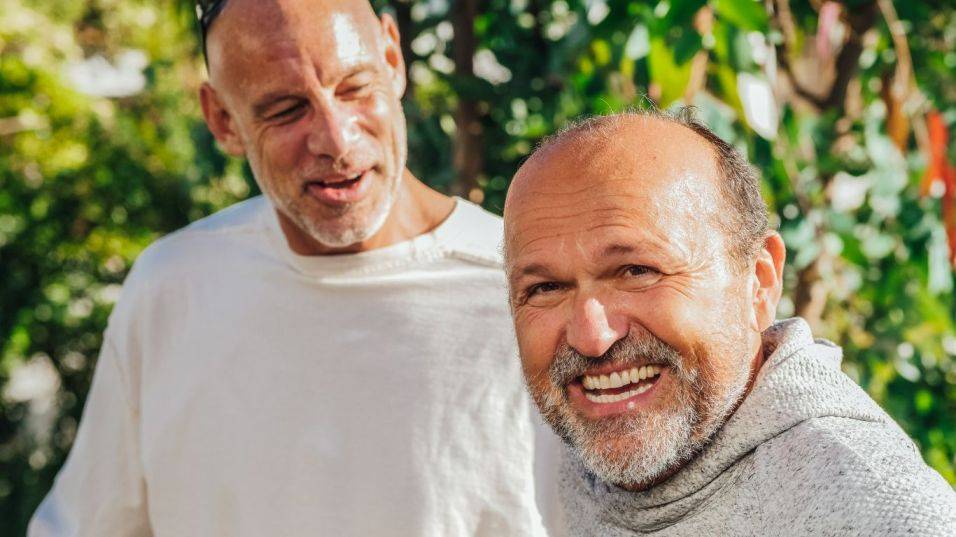
Age is no barrier to joy, and seniors around the world are proving this every day by embracing a diverse range of enjoyable activities that bring laughter, connection, and fulfillment into their lives. In this exploration of the vibrant world of senior pastimes, we’ll delve into 20 activities that exemplify the spirit of rediscovering joy and finding fulfillment in every moment.
Gardening
Cultivating a garden is not just a hobby; it’s a therapeutic and rewarding activity that many seniors find immense joy in. The connection with nature and the sense of accomplishment from nurturing plants bring both relaxation and delight.
Book Clubs
Joining a book club provides seniors with the opportunity to indulge in a shared love for literature, fostering social connections and intellectual engagement.
Art Classes
Whether it’s painting, drawing, or sculpture, art classes offer a creative outlet that allows seniors to express themselves and discover hidden talents.
Music Appreciation
Attending concerts, learning to play an instrument, or simply enjoying a favorite playlist brings the joy of music into the lives of seniors, creating a soundtrack to their memories.
Cooking Classes
Exploring new recipes and cooking techniques not only provides delicious meals but also turns the kitchen into a space for creativity and experimentation.
Photography Expeditions
Capturing moments through the lens is a popular activity for seniors. Photography excursions offer a chance to explore the world and freeze cherished moments in time.
Yoga and Meditation
Physical and mental well-being take center stage with yoga and meditation. Seniors find these practices not only rejuvenating but also a source of inner peace.
Dance Classes
Whether it’s ballroom, line dancing, or salsa, dance classes offer a fun and social way for seniors to stay active while enjoying the rhythm of life.
Board Games and Puzzles
Engaging in board games and puzzles is a timeless pastime that stimulates the mind and fosters friendly competition among seniors.
Volunteering
Contributing time and skills to charitable causes provides seniors with a sense of purpose and fulfillment, fostering a strong sense of community.
Travel Adventures
Exploring new destinations and experiencing different cultures allow seniors to savor the richness of life’s tapestry.
Writing and Journaling
Many seniors find joy in expressing their thoughts and memories through writing, be it in the form of personal journals or creative storytelling.
Birdwatching
Observing the beauty of nature and its feathered inhabitants brings tranquility and joy to seniors who take up birdwatching.
Technology Workshops
Learning new technologies and staying connected with loved ones through social media and video calls is a modern source of joy for tech-savvy seniors.
Fitness Classes
Engaging in fitness classes tailored to seniors not only promotes physical health but also creates a lively social environment.
Attending Theater Productions
Whether it’s a local play or a Broadway show, seniors enjoy the magic of live theater and the emotions it evokes.
Fishing Trips
Casting a line into a serene lake or river provides seniors with a peaceful and reflective outdoor activity.
Cultural Workshops
Participating in cultural workshops introduces seniors to new traditions, languages, and art forms, fostering a sense of global connection.
Card Games
From bridge to poker, card games offer seniors a chance to socialize, strategize, and enjoy friendly competition.
Mindfulness Retreats
Seniors seeking deeper introspection and relaxation often find joy in attending mindfulness retreats, where they can connect with their inner selves in a serene setting.
The journey of rediscovering joy in the golden years is as diverse as the individuals who embark on it. From creative pursuits to social activities and moments of quiet reflection, seniors exemplify the art of joyful living. As they explore new interests, nurture existing passions, and build meaningful connections, seniors prove that joy is not bound by age but is a timeless companion on life’s journey.
Grandparent-Grandchild Bond: Deciding on Optimal Visits

The bond between grandparents and grandchildren is a precious and unique relationship that holds immense value in family dynamics. While the love is constant, determining the optimal frequency of visits can be a thoughtful consideration. In this exploration of family connections, we delve into the factors to consider when deciding on the ideal rhythm for grandparent-grandchild visits, ensuring that these interactions are fulfilling and cherished by all.
The Importance of Grandparent-Grandchild Bonding
The relationship between grandparents and grandchildren is often marked by a special kind of love – one that is seasoned with wisdom, patience, and the joy of shared experiences. These bonds contribute significantly to a child’s emotional development, offering a sense of security and an additional layer of familial support.
Factors Influencing Visit Frequency:
Proximity
The physical distance between grandparents and grandchildren plays a pivotal role in determining visit frequency. Proximity allows for more spontaneous and regular visits, fostering a deeper connection.
Family Dynamics
The overall family schedule and dynamics influence how often grandparents can visit. Considerations such as parents’ work schedules, children’s school commitments, and other family activities play a role in planning visits.
Health and Well-being
The health of both grandparents and grandchildren is a crucial factor. Depending on health conditions and mobility, visits may need to be adjusted to ensure the comfort and well-being of all parties.
Technology and Communication
In today’s digital age, technology bridges the gap between physical visits. Regular video calls, emails, and messages can maintain a strong connection even if in-person visits are less frequent.
Grandchild’s Age
The age of the grandchild can influence the optimal visit frequency. Younger children may benefit from more frequent visits for developmental reasons, while older children may have more school and extracurricular commitments.
Finding the Right Balance:
Open Communication
Open and honest communication between grandparents and parents is key. Discuss expectations, preferences, and any concerns to ensure everyone is on the same page.
Quality Over Quantity
Emphasize the quality of visits over their frequency. Meaningful interactions and shared activities leave a lasting impact, regardless of how often they occur.
Consider Grandparents’ Needs
While prioritizing the needs of the grandchildren, it’s essential to consider the well-being and preferences of the grandparents. Find a balance that works for everyone involved.
Special Occasions and Traditions
Planning visits around special occasions, holidays, and family traditions adds significance to the time spent together. These moments create lasting memories for both grandparents and grandchildren.
Respect Boundaries
Respect the boundaries and preferences of both generations. Some families may thrive with frequent visits, while others may find a more spaced-out approach suits their dynamics.
Embracing Grandparent-Grandchild Time
Ultimately, there is no one-size-fits-all answer to how often grandparents should see their grandchildren. The optimal visit frequency is a personal choice that depends on various factors unique to each family. By considering proximity, family dynamics, health, and communication, families can craft a visitation rhythm that cultivates a strong, enduring bond between grandparents and grandchildren. The beauty lies not only in the quantity of time spent together but also in the quality of the shared moments that create a tapestry of love and connection across generations.
Financial Matters: Understanding the Fiscal Intermediary

In the realm of financial management, certain terms might sound complex at first, but their understanding is crucial for navigating fiscal responsibilities effectively. One such term is the “Fiscal Intermediary.” In this article, we’ll demystify this concept, providing clarity on its role, significance, and how it plays a pivotal part in managing financial matters.
Defining the Fiscal Intermediary
A Fiscal Intermediary (FI) is an entity that acts as an intermediary or go-between in financial transactions. In various contexts, fiscal intermediaries play roles that involve handling funds, managing payments, and ensuring financial processes run smoothly.
Roles and Functions:
Payment Processing
One of the primary roles of a fiscal intermediary is to process payments. This involves disbursing funds from a funding source to the intended recipients. FIs streamline this process, ensuring accuracy and timeliness.
Financial Management
FIs often take charge of financial management tasks, including budgeting, accounting, and financial reporting. They play a crucial role in maintaining transparency and accountability in financial matters.
Compliance and Regulation
Fiscal intermediaries navigate the complex landscape of financial regulations and compliance. They ensure that financial transactions adhere to relevant laws and standards, reducing the risk of legal issues.
Risk Management
Managing financial risk is another facet of the fiscal intermediary’s responsibilities. This involves identifying potential risks, implementing strategies to mitigate them, and safeguarding financial assets.
Record-Keeping
Accurate record-keeping is fundamental to financial stability. FIs maintain detailed records of financial transactions, providing a comprehensive overview that supports decision-making and audits.
Contexts of Fiscal Intermediaries:
Healthcare and Medicaid
In healthcare, fiscal intermediaries are often involved in managing Medicaid funds. They ensure that healthcare providers receive timely payments for services rendered, facilitating the smooth operation of healthcare systems.
Government Contracts
In government contracts, fiscal intermediaries may be responsible for handling payments, overseeing financial compliance, and providing financial reports. This helps maintain transparency and accountability in government-funded projects.
Nonprofit Organizations
Nonprofit organizations frequently enlist fiscal intermediaries to manage their finances. This includes handling donations, managing budgets, and ensuring that financial practices align with nonprofit regulations.
Financial Services
Within the realm of financial services, fiscal intermediaries may facilitate transactions between financial institutions, manage investment portfolios, or oversee the disbursement of funds in various financial contexts.
Why Fiscal Intermediaries Matter:
Efficiency and Accuracy
FIs contribute to the efficiency and accuracy of financial transactions, reducing the likelihood of errors and ensuring that funds reach their intended recipients promptly.
Compliance Assurance
By staying abreast of financial regulations, fiscal intermediaries help organizations and entities maintain compliance, reducing the risk of legal complications.
Financial Transparency
Through meticulous record-keeping and reporting, FIs promote financial transparency, enabling stakeholders to have a clear understanding of financial activities.
Risk Mitigation
Effective risk management is crucial in any financial context. FIs play a key role in identifying, assessing, and mitigating financial risks, contributing to overall financial stability.
Understanding the role of a fiscal intermediary is essential for individuals, organizations, and entities involved in financial transactions. Whether in healthcare, government, nonprofits, or financial services, fiscal intermediaries serve as the linchpin in ensuring that financial matters are managed efficiently, accurately, and in compliance with regulations. By unraveling the complexities associated with fiscal intermediaries, we empower ourselves to navigate financial waters with confidence, knowing that dedicated entities are facilitating the seamless flow of funds and promoting financial integrity.
The Joyful Lifestyle: 12 Habits Practiced by Happy Seniors

Happiness is a timeless pursuit that transcends age, and as seniors embark on the golden chapter of their lives, they often embrace habits that contribute to a joyful lifestyle. In this exploration of content aging, we unveil 12 habits practiced by happy seniors, offering insights into a fulfilling and vibrant way of life.
Embracing Positivity
Happy seniors cultivate a positive mindset, focusing on gratitude and optimistic perspectives. This outlook allows them to navigate life’s challenges with resilience and joy.
Staying Socially Connected
Social connections are a cornerstone of happiness for seniors. Engaging in regular social activities, whether with friends, family, or community groups, fosters a sense of belonging and companionship.
Pursuing Lifelong Learning
The pursuit of knowledge is a lifelong endeavor. Happy seniors often engage in learning new skills, exploring hobbies, and staying intellectually curious, which adds a sense of fulfillment to their daily lives.
Prioritizing Physical Well-being
Taking care of their physical health is a habit that happy seniors prioritize. Regular exercise, balanced nutrition, and adequate sleep contribute to their overall well-being and vitality.
Nurturing Relationships
Cultivating strong, meaningful relationships with loved ones is a source of joy for happy seniors. They invest time and effort in building and maintaining connections that bring warmth and love into their lives.
Finding Purpose
Happy seniors often discover and embrace a sense of purpose, whether through volunteer work, mentorship, or pursuing passions. Having a purpose adds depth and meaning to their daily activities.
Practicing Gratitude
Expressing gratitude for life’s blessings is a common habit among happy seniors. They appreciate the simple joys and are mindful of the positive aspects of their lives.
Enjoying Nature
Spending time outdoors, whether through walks in the park, gardening, or simply appreciating nature’s beauty, is a habit that brings joy and a sense of tranquility to happy seniors.
Laughing Often
Laughter is a universal language of happiness. Happy seniors often find humor in everyday situations, share laughter with others, and maintain a lighthearted approach to life.
Embracing Technology
Many happy seniors stay connected with the modern world by embracing technology. Whether it’s video calls with loved ones or exploring online communities, technology becomes a tool for staying engaged.
Cultivating Resilience
Resilience is a key trait among happy seniors. They approach life’s ups and downs with a resilient spirit, adapting to change and bouncing back from challenges with grace.
Allowing Time for Reflection
Taking moments for quiet reflection is a habit embraced by happy seniors. Whether through meditation, prayer, or simply moments of stillness, reflection offers a sense of inner peace and mindfulness.
As seniors navigate the chapters of their lives, these 12 habits become a blueprint for happy aging. The joyful lifestyle they cultivate is not only a testament to their resilience but also an inspiration for others. By embracing positivity, staying connected, prioritizing well-being, and finding purpose, happy seniors demonstrate that the golden years can truly be a time of contentment, growth, and unwavering joy.
Navigating Medicaid Coverage: What Services Are Eligible for Payment?

Medicaid stands as a vital support system, providing healthcare coverage for millions of individuals and families across the United States. Understanding the services that Medicaid will cover is essential for those navigating the intricacies of healthcare assistance. In this comprehensive guide, we explore the landscape of Medicaid coverage, shedding light on the array of services eligible for payment.
Medical Services
Medicaid covers a broad spectrum of medical services, including doctor visits, hospital stays, surgeries, and preventive care. This ensures that individuals can access essential medical treatments without facing financial barriers.
Prescription Medications
Medication costs can be a significant concern, but Medicaid provides coverage for prescription drugs. This includes both generic and brand-name medications prescribed by healthcare professionals.
Laboratory and X-ray Services
Diagnostic tests, laboratory services, and X-rays necessary for medical evaluation and monitoring are covered by Medicaid. This ensures that individuals receive comprehensive healthcare assessments.
Mental Health Services
Mental health is a crucial aspect of overall well-being, and Medicaid recognizes this by covering a range of mental health services. This includes counseling, therapy, and psychiatric care.
Maternity and Pediatric Care
Medicaid provides coverage for maternity care, ensuring that expectant mothers have access to prenatal and postpartum services. Additionally, pediatric care is covered to support the health and development of children.
Preventive Services
Preventive care is a cornerstone of Medicaid coverage. Services such as vaccinations, screenings, and routine check-ups are provided to detect and address health issues before they become more severe.
Dental and Vision Services
Oral and visual health are integral to overall well-being. Medicaid covers dental services, including check-ups and treatments, as well as vision care, including eye exams and corrective lenses.
Home and Community-Based Services
Medicaid extends beyond traditional healthcare settings, covering home and community-based services. This includes assistance with daily living activities for individuals who require support to remain in their homes.
Long-Term Care
Medicaid plays a crucial role in covering the costs of long-term care, including nursing home care and assisted living facilities. This ensures that individuals with chronic illnesses or disabilities receive the necessary support.
Transportation Services
Recognizing the importance of accessibility, Medicaid often covers transportation services to medical appointments. This helps individuals overcome logistical challenges in accessing healthcare.
Rehabilitation Services
Rehabilitation services, including physical therapy, occupational therapy, and speech-language pathology, are covered by Medicaid to support individuals in recovering from injuries or managing chronic conditions.
Hospice Care
In the final stages of life, Medicaid provides coverage for hospice care. This includes supportive services aimed at enhancing the quality of life for individuals facing terminal illnesses.
Navigating Medicaid coverage involves understanding the extensive array of services that are eligible for payment. From medical treatments to preventive care, mental health services, and long-term care, Medicaid aims to empower individuals and families to access comprehensive healthcare without the burden of exorbitant costs. As beneficiaries and healthcare providers work together, Medicaid continues to play a vital role in ensuring that essential services are accessible to those who need them most, contributing to the overall well-being of communities across the nation.
Enhancing Safety and Comfort: The Top Bed Rails for Elderly Individuals

As our loved ones age, ensuring their safety and well-being becomes a top priority. One essential aspect of creating a secure environment for seniors is investing in the right bed rails. In this article, we’ll explore some of the top bed rails designed specifically for elderly individuals, offering a blend of functionality, durability, and comfort.
Guardian Bed Rails: A Trusted Choice
Guardian bed rails consistently earn high marks for their reliability and ease of use. Designed with a focus on stability, these bed rails provide seniors with a sturdy support system, reducing the risk of falls during the night. Many Guardian bed rails also come with adjustable features, catering to individual preferences and bed sizes.
Stander EZ Adjust Bed Rail: Versatile and Convenient
The Stander EZ Adjust Bed Rail is praised for its versatility and user-friendly design. With its adjustable length and convenient folding mechanism, caregivers can easily assist elderly individuals in and out of bed. The rail also includes a handy organizer pouch, offering a convenient storage solution for essentials like glasses, books, or medications.
Vive Bed Rail: Sleek Design with Maximum Security
For those who prioritize a sleek and modern design without compromising on safety, the Vive Bed Rail is an excellent choice. This rail offers a low-profile look while providing a secure grip for seniors getting in and out of bed. The Vive Bed Rail is easy to install and compatible with most bed frames, making it a practical option for various bedroom setups.
Drive Medical Adjustable Height Bed Rail: Customizable Support
The Drive Medical Adjustable Height Bed Rail stands out for its customizable features, allowing users to tailor the rail’s height to their specific needs. This adaptability makes it an ideal choice for seniors with varying mobility requirements. The durable construction of this bed rail ensures long-lasting support and stability.
SecureGuard Swing Down Bed Rail: Enhanced Accessibility
The SecureGuard Swing Down Bed Rail is designed to enhance accessibility for both seniors and caregivers. With its swing-down feature, the rail can be easily lowered for effortless bed entry and exit. This bed rail is particularly beneficial for individuals with limited mobility, providing an extra layer of security.
Choosing the right bed rail for elderly individuals involves considering factors such as stability, adjustability, and overall convenience. The options mentioned above represent some of the top choices available, each offering unique features to cater to the specific needs of seniors. By investing in a quality bed rail, families can contribute to a safer and more comfortable living environment for their aging loved ones.
Nursing Diagnosis Insights on Preventing Falls in the Elderly

As we age, the risk of falls becomes a growing concern, particularly for the elderly population. Nurses play a crucial role in identifying and addressing potential fall risks through comprehensive nursing diagnoses. In this article, we’ll delve into key insights offered by nursing diagnoses to prevent falls among the elderly, emphasizing the importance of proactive healthcare measures.
The Significance of Nursing Diagnoses in Fall Prevention:
Understanding the Unique Risks
Nursing diagnoses go beyond routine assessments, offering a detailed understanding of the unique risk factors that contribute to falls in elderly individuals. These may include impaired mobility, medication side effects, vision and hearing impairments, and environmental hazards. By pinpointing these factors, nurses can develop targeted interventions to mitigate the risk.
Comprehensive Patient Assessment
A thorough nursing diagnosis involves a holistic assessment of the patient, encompassing physical, mental, and environmental aspects. This comprehensive approach enables healthcare professionals to identify not only existing health conditions but also potential risk factors that may contribute to falls. The goal is to tailor interventions to each patient’s specific needs and circumstances.
Proactive Measures for Fall Prevention:
Individualized Care Plans
Based on the insights gained from nursing diagnoses, healthcare professionals can create individualized care plans. These plans take into account the specific challenges faced by elderly patients, addressing issues such as muscle weakness, balance problems, and gait abnormalities. By tailoring interventions to the individual, nurses can enhance the effectiveness of fall prevention strategies.
Medication Management
Nursing diagnoses often reveal the impact of medications on a patient’s stability and coordination. Adjustments to medication regimens can be made to minimize side effects that contribute to falls. Regular medication reviews, in collaboration with healthcare providers, ensure that the benefits of medications outweigh the potential risks for elderly patients.
Environmental Modifications:
Identifying and Addressing Hazards
Nursing diagnoses extend to the identification of environmental hazards within the patient’s living space. Nurses work to eliminate or mitigate these hazards, which may include slippery floors, inadequate lighting, or poorly arranged furniture. Simple modifications can significantly reduce the risk of falls and enhance the overall safety of the elderly individual’s surroundings.
Patient and Caregiver Education
Education is a key component of nursing diagnoses focused on fall prevention. Nurses provide valuable insights to both patients and their caregivers on recognizing and addressing potential risks. This empowerment equips individuals and their support networks with the knowledge needed to create a safer living environment.
In the realm of elderly care, nursing diagnoses play a pivotal role in proactive fall prevention. By gaining insights into individual risk factors and tailoring interventions accordingly, healthcare professionals contribute to the well-being of elderly individuals. A collaborative approach that involves patients, caregivers, and healthcare providers can create a safer and more secure environment, reducing the likelihood of falls and enhancing the overall quality of life for our aging population.
Caring for the Resistant: A Guide to Dealing with Elderly Parents Who Reject Support

As our parents age, the roles we play in their lives often evolve from being cared for to becoming caregivers ourselves. However, what happens when elderly parents resist the very support they may need? In this guide, we’ll explore the delicate dynamics of caring for resistant elderly parents and offer practical strategies to navigate this challenging terrain with empathy and effectiveness.
Understanding the Resistance
Maintaining Independence
For many elderly individuals, the desire to maintain independence is deeply ingrained. Accepting help can be perceived as a threat to this independence, leading to resistance. Understanding this perspective is the first step in approaching the situation with sensitivity.
Fear of Losing Control
Resistance may also stem from a fear of losing control over one’s life. Elderly parents may worry that accepting help will result in decisions being made on their behalf, causing them to feel disempowered. Acknowledging these fears and addressing them with empathy is essential.
Strategies for Effective Communication:
Open and Honest Dialogue
Initiate open and honest conversations about the concerns and fears your parents may have. Create a safe space where they feel heard, allowing them to express their thoughts and preferences. This establishes a foundation for trust and collaboration.
Emphasize Choice and Control
Frame assistance as a means to enhance, rather than diminish, their control over their lives. Highlight the choices they can make in the process, such as selecting specific types of support or determining the timing and frequency of assistance. This fosters a sense of autonomy.
Gradual Introduction of Support:
Start Small
Introduce support gradually, beginning with small, non-intrusive tasks. This could include assistance with grocery shopping, transportation, or light household chores. The incremental approach allows your parents to adjust at their own pace.
Involvement in Decision-Making
Involve your parents in decisions related to their care. Seek their input on matters such as choosing a caregiver or selecting specific services. This collaborative approach empowers them and helps build a sense of ownership over the support they receive.
Seek Professional Guidance:
Geriatric Care Managers
Engage the services of geriatric care managers who specialize in navigating the complexities of elderly care. These professionals can offer expert advice, mediate family discussions, and provide tailored solutions that respect the autonomy of elderly individuals. Counseling ServicesExplore the option of counseling services for both you and your parents. Professional guidance can facilitate communication, help address emotional barriers, and provide coping strategies for everyone involved.
Caring for resistant elderly parents requires a delicate balance of empathy, patience, and effective communication. By understanding the reasons behind their resistance, engaging in open dialogue, and introducing support gradually, you can create a supportive environment that respects their autonomy. Seeking professional guidance when needed ensures that the care provided is holistic, addressing both the physical and emotional aspects of aging. Remember, the journey of caring for elderly parents is a shared one, and approaching it with understanding and compassion can lead to a more harmonious caregiving experience for all.
Flowing Into Wellness: The Seniors' Guide to Tai Chi Practice

In the realm of senior wellness, few practices blend graceful movements with holistic health benefits as seamlessly as Tai Chi. Often referred to as “meditation in motion,” Tai Chi offers a gentle yet powerful way for seniors to enhance their physical and mental well-being. In this guide, we’ll explore the art of Tai Chi, tailored specifically for seniors, unlocking the secrets to a harmonious and healthful practice.
The Gentle Beauty of Tai Chi:
Embracing Mindful Movements
Tai Chi, with its slow and deliberate movements, provides seniors with an opportunity to engage in physical activity that is gentle on the joints while promoting mindfulness. The practice encourages a state of relaxed awareness, fostering a sense of calm and tranquility.
Balancing Body and Mind
One of the unique aspects of Tai Chi is its emphasis on balance. As seniors may face challenges related to stability and coordination, the art’s flowing postures contribute to improved balance, reducing the risk of falls and enhancing overall physical stability.
Getting Started with Tai Chi:
Finding the Right Class
For seniors new to Tai Chi, joining a class tailored to their needs is an excellent starting point. Many community centers, senior centers, and fitness studios offer Tai Chi classes specifically designed for older adults. Look for instructors who understand the unique requirements of seniors and provide a supportive environment.
Home Practice Tips
For those who prefer the comfort of home, Tai Chi can easily be practiced in a small space. Online resources, DVDs, or instructional books can guide seniors through basic movements. Starting with short sessions and gradually increasing the duration allows for a comfortable and enjoyable learning experience.
The Health Benefits of Tai Chi for Seniors:
Joint Health and Flexibility
Tai Chi’s gentle, flowing movements help improve joint flexibility and reduce stiffness. This is especially beneficial for seniors who may experience arthritis or other age-related joint issues.
Stress Reduction and Mental Clarity
The meditative aspects of Tai Chi contribute to stress reduction and mental clarity. Seniors often find that the rhythmic, mindful movements provide a welcome break from daily stressors, promoting a sense of inner peace.
Cardiovascular Health
While Tai Chi is low-impact, its continuous and rhythmic nature contributes to cardiovascular health. The practice can help seniors maintain a healthy heart and improve circulation.
Incorporating Tai Chi into Daily Life:
Consistency is Key
To reap the full benefits of Tai Chi, consistency is key. Aim for regular practice, whether it’s attending classes, following online tutorials, or practicing at home. The cumulative effects of the practice become more pronounced with regularity.
Listen to Your Body
Tai Chi is adaptable to various fitness levels, making it accessible to seniors with diverse physical abilities. Listen to your body, move at your own pace, and modify movements as needed. The goal is to enjoy the practice while promoting overall well-being.
The Seniors’ Guide to Tai Chi Practice is an invitation to explore a mindful and healthful journey through graceful movements. As seniors embrace the flowing postures and integrate Tai Chi into their lives, they embark on a path that nurtures both body and mind. Whether practiced in a community setting or the comfort of home, Tai Chi for seniors is a harmonious dance toward enhanced well-being and a fuller, more vibrant life.
Practical Ways to Enhance Leg Circulation for Seniors

As we age, maintaining healthy circulation becomes increasingly vital for overall well-being, especially in the lower extremities. Reduced leg circulation can lead to various issues, including swelling, discomfort, and increased risk of certain health conditions. In this guide, we’ll explore practical and effective ways for seniors to enhance leg circulation, promote mobility, and support overall health.
The Importance of Leg Circulation for Seniors:
Circulatory Challenges with Aging
Aging can bring about changes in blood vessels and circulation, making it crucial for seniors to adopt habits that support optimal blood flow. Poor leg circulation can contribute to issues such as varicose veins, edema, and an increased risk of blood clots.
Impact on Mobility
Healthy leg circulation is closely tied to mobility. By promoting blood flow to the legs, seniors can reduce stiffness, enhance flexibility, and lower the risk of falls. Improved circulation also aids in the delivery of nutrients and oxygen to the muscles, supporting overall leg health.
Practical Tips for Enhancing Leg Circulation:
Regular Physical Activity
Engaging in regular physical activity is one of the most effective ways to enhance leg circulation. Activities such as walking, swimming, and gentle exercises help stimulate blood flow, strengthen muscles, and maintain joint flexibility. Seniors should aim for at least 150 minutes of moderate-intensity exercise per week, as recommended by health experts.
Leg Elevation
Simple yet impactful, elevating the legs above heart level helps reduce swelling and promotes venous return. Seniors can incorporate leg elevation into their daily routine by propping their legs up for short periods, especially after prolonged periods of sitting or standing.
Compression Garments
Compression stockings or socks can provide gentle pressure to the legs, aiding in venous return and preventing swelling. Seniors should consult with a healthcare professional to determine the appropriate level of compression and the right fit for their needs.
Hydration
Adequate hydration is essential for maintaining healthy blood flow. Seniors should aim to drink plenty of water throughout the day, as dehydration can contribute to poor circulation and increase the risk of blood clots.
Massage and Stretching
Regular leg massages and stretching exercises can stimulate circulation and alleviate muscle tension. Gentle, circular motions on the calves and thighs promote blood flow while stretching exercises enhance flexibility and reduce stiffness.
Healthy Diet
A nutrient-rich diet contributes to overall cardiovascular health, positively impacting leg circulation. Seniors should focus on a diet rich in fruits, vegetables, whole grains, and lean proteins. Foods high in antioxidants, such as berries and leafy greens, support blood vessel health.
Incorporating Leg Circulation Habits into Daily Life:
Frequent Leg Movement
Encourage frequent leg movement throughout the day, especially if seniors have sedentary habits. Simple activities like ankle circles, knee lifts, or seated leg extensions can make a significant difference in promoting blood flow.
Warm Water Soaks
Occasional warm water soaks for the feet and lower legs can relax muscles, improve circulation, and provide relief from discomfort. Adding Epsom salts to the water can enhance the soothing effects.
Promoting healthy leg circulation is a key component of overall wellness for seniors. By incorporating these practical tips into their daily routine, seniors can actively contribute to improved blood flow, enhanced mobility, and a greater sense of well-being. It’s never too late to take steps toward leg health, and each small effort can contribute to a more active and vibrant lifestyle in the golden years.
Legal Empowerment: A Step-by-Step Guide to Acquiring Power of Attorney for Elderly Parents

As our parents age, the responsibility of ensuring their well-being and making important decisions on their behalf often becomes a crucial aspect of caregiving. Acquiring Power of Attorney (POA) is a legal process that grants you the authority to make decisions for your elderly parents when they may no longer be able to do so themselves. In this comprehensive guide, we’ll walk you through the step-by-step process of obtaining Power of Attorney, offering clarity and empowerment during this important legal journey.
Understanding Power of Attorney:
What is Power of Attorney?
Power of Attorney is a legal document that grants an individual, known as the agent or attorney-in-fact, the authority to make decisions on behalf of another person, known as the principal. This authority can encompass various aspects, including financial, medical, and legal decisions.
Types of Power of Attorney
There are different types of Power of Attorney, each catering to specific needs. Understanding the distinctions between general, durable, and healthcare (medical) Power of Attorney is crucial in determining the scope of decision-making authority.
Initiate Open Communication
Discussing with Your Parents
Initiate an open and honest conversation with your parents about the importance of Power of Attorney. Address their concerns, clarify misconceptions, and express your commitment to acting in their best interests. This decision must be made collaboratively and with their understanding.
Seek Legal Guidance
Consult with an Attorney
Engage the services of a qualified attorney experienced in elder law. A legal professional will guide you through the specific requirements and legalities associated with obtaining Power of Attorney. They will ensure that the necessary documents are drafted accurately and in compliance with state laws.
Determine the Type of Power of Attorney Needed
Assessing Needs and Preferences
Work with your attorney to determine the type of Power of Attorney that aligns with your parent’s needs and preferences. Consider factors such as the scope of decision-making, whether it’s limited to financial matters, healthcare decisions, or a broader range of responsibilities.
Draft and Execute the Document
Documenting the Agreement
Your attorney will draft the Power of Attorney document based on your discussions and legal requirements. Once the document is ready, both you and your parents, along with a notary public, will need to sign it. This step ensures the document’s legal validity.
Registering the Document (If Required)
State-Specific Requirements
In some jurisdictions, it may be necessary to register the Power of Attorney document with the appropriate authorities. Your attorney will guide you through any state-specific requirements to ensure compliance.
Keep Copies and Inform Relevant Parties
Safekeeping Documents
Keep copies of the executed Power of Attorney document in a secure location. Provide copies to relevant parties, such as financial institutions, healthcare providers, and other entities that may require proof of your authority.
Acquiring Power of Attorney for elderly parents is a significant step toward ensuring their well-being and protection in times of incapacity. This legal empowerment not only provides you with the authority to make crucial decisions but also establishes a framework for transparency and collaboration. By following this step-by-step guide and seeking legal counsel, you can navigate the process with confidence, ensuring that the best interests of your elderly parents are safeguarded in all situations.
What You Need to Know About Medicaid Copays

Medicaid is a crucial lifeline for many individuals and families, providing essential healthcare coverage. However, understanding the ins and outs of Medicaid copays can be a challenging task. In this comprehensive guide, we’ll unravel the mysteries surrounding Medicaid copays, ensuring you have the knowledge you need to make informed decisions about your healthcare.
What are Medicaid Copays?
Medicaid copays are the out-of-pocket costs that individuals covered by Medicaid may be required to pay for certain medical services. Unlike private insurance plans, Medicaid copays are typically nominal and vary depending on the state and the specific services rendered.
Who is Subject to Medicaid Copays?
Not all Medicaid beneficiaries are subject to copayments. Generally, children, pregnant women, and individuals receiving hospice care are exempt from copays. However, copay requirements may apply to other groups, such as non-pregnant adults.
Understanding the Copay Structure: What Services Are Included?
Medicaid copays usually apply to a range of services, including doctor visits, prescription medications, hospital stays, and more. It’s crucial to familiarize yourself with the specific copay requirements in your state and the types of services that may incur these costs.
The Nominal Nature of Medicaid Copays
One of the key features of Medicaid copays is their nominal nature. Compared to private insurance plans, Medicaid copays are designed to be affordable for low-income individuals and families. States often set maximum allowable copay amounts to prevent excessive financial burdens on beneficiaries.
Navigating State Variations
It’s important to note that Medicaid is a joint federal and state program, and copay requirements can vary from state to state. Some states may have different copay structures or exempt certain services from copayments. Stay informed about your state’s specific guidelines to avoid any surprises.
Tips for Managing Medicaid Copays
- Keep track of your healthcare expenses: Maintain a record of your medical services and associated copays to manage your healthcare budget effectively.
- Utilize preventive services: Many preventive services are exempt from copays. Take advantage of these services to maintain your health and avoid unnecessary costs.
- Communicate with your healthcare provider: If you’re facing financial challenges, don’t hesitate to communicate with your healthcare provider. They may offer assistance programs or alternative solutions.
Navigating the world of Medicaid copays may seem daunting, but with the right knowledge, you can make informed decisions about your healthcare. Stay informed about your state’s specific guidelines, understand the services subject to copays, and explore strategies to manage these costs effectively. By empowering yourself with knowledge, you can make the most of your Medicaid coverage while ensuring your health and well-being.
Tips for Low-Income New Yorkers Applying for HDFC Coops

Navigating the New York City real estate market on a limited budget can be challenging, but for low-income individuals, the prospect of homeownership is not out of reach, thanks to Housing Development Fund Corporation (HDFC) cooperatives. In this blog, we’ll explore valuable tips for low-income New Yorkers looking to make their dream of homeownership a reality through HDFC coops.
Understanding HDFC Coops
HDFC coops are a unique form of homeownership designed to provide affordable housing options. Understanding the structure and requirements of HDFC coops is the first step toward making informed decisions.
Researching Eligibility Criteria
Each HDFC coop may have specific eligibility criteria, including income limits and residency requirements. Research these criteria thoroughly to ensure you meet the qualifications before applying.
Connecting with HDFC Coop Boards
Building a positive relationship with HDFC coop boards can enhance your chances of approval. Attend meetings, ask questions, and express your genuine interest in contributing positively to the cooperative community.
Working with Housing Counselors
Seek guidance from housing counselors who specialize in HDFC cooperatives. They can provide valuable insights, assist with the application process, and help you understand the financial aspects of homeownership.
Budgeting for Purchase and Maintenance Costs
While HDFC coops offer affordable housing options, it’s crucial to budget for both the purchase and ongoing maintenance costs. Factor in monthly maintenance fees, repairs, and other associated expenses to ensure financial preparedness.
Exploring Down Payment Assistance Programs
Low-income individuals may qualify for down payment assistance programs. Research and explore available options to ease the financial burden of the initial purchase.
Building a Solid Credit History
A good credit history is essential for any home purchase. Work on building and maintaining a solid credit score to improve your chances of qualifying for a mortgage with favorable terms.
Networking within HDFC Communities
Attend community events and engage with current residents of HDFC coops. Networking can provide valuable insights, and tips, and potentially open doors to opportunities within the cooperative community.
Being Patient and Persistent
The process of applying for and securing an HDFC coop may take time. Be patient and persistent throughout the journey, and don’t be discouraged by initial challenges. Persistence can pay off in the competitive New York City real estate market.
Consulting Legal Professionals
Seek legal advice to navigate the legal aspects of HDFC coop ownership. A legal professional can review contracts, guide the application process, and ensure you are making informed decisions.
Owning a home in New York City on a low income may seem like an uphill battle, but HDFC coops offer a viable pathway to affordable homeownership. By understanding the process, building strong connections within the cooperative community, and diligently preparing financially, low-income New Yorkers can turn their homeownership dreams into reality. Remember, with determination and the right strategies, home sweet home is within reach.
New York's Top 10 Pain Management Doctors

Chronic pain can have you seeing red in the concrete jungle, but finding the right doctor can bring back the vibrant hues of New York City life. Navigating the vast healthcare landscape of the Big Apple can be daunting, so let’s guide you to some of the best pain management doctors the city has to offer.
Dr. Leon Reyfman, MD – Pain Management NYC: Board-certified in both anesthesiology and pain medicine, Dr. Reyfman has a stellar reputation. He’s a clinical professor at Cornell and known for his expertise in interventional pain management, treating everything from migraines to complex regional pain syndromes. (Midtown Manhattan)
Dr. Boleslav Kosharskyy, MD – Pain Management NYC: Partnering with Dr. Reyfman, Dr. Kosharskyy brings a wealth of experience in minimally invasive procedures and chronic pain management. He’s also fluent in Ukrainian and Russian, a boon for the city’s diverse population. (Midtown Manhattan)
Dr. Richard Rauck, MD – Mount Sinai Health System: If you’re seeking a holistic approach, Dr. Rauck is your champion. He combines traditional medicine with alternative therapies like acupuncture and mindfulness training, making him a favorite among wellness-minded New Yorkers. (Multiple locations throughout NYC)
Dr. Beth Salamon, MD – ColumbiaDoctors: Specializing in headache and facial pain, Dr. Salamon is a godsend for migraine sufferers. Her gentle bedside manner and personalized treatment plans have earned her loyal patients from across the city. (Washington Heights)
Dr. Robert Gagliardi, MD – NYU Langone Medical Center: A renowned expert in spine pain, Dr. Gagliardi tackles back issues with surgical precision and a focus on minimally invasive techniques. He’s a sought-after choice for athletes and active individuals. (Multiple locations throughout NYC)
Dr. Jill Simon, MD – Weill Cornell Medicine: When cancer pain throws a wrench in your life, Dr. Simon offers comfort and expertise. She specializes in palliative care and pain management for cancer patients, providing compassionate care during a challenging time. (Upper East Side)
Dr. Richard Sklar, MD – Hospital for Special Surgery: A leader in joint pain management, Dr. Sklar utilizes cutting-edge technologies to treat arthritis and other joint conditions. He’s known for his innovative approach and dedication to helping patients regain their mobility. (Upper East Side)
Dr. Susan Okun, MD – NYU Langone Pain Management Center: Board-certified in both neurology and pain medicine, Dr. Okun brings a unique perspective to complex pain cases. She’s particularly skilled in treating neuropathic pain and chronic pain syndromes. (Multiple locations throughout NYC)
Dr. David Borelli, MD – Pain Physicians NY: Located in Brooklyn, Dr. Borelli offers top-notch pain management services with a focus on interventional treatments like nerve blocks and spinal cord stimulation. He’s also a strong advocate for patient education and empowerment. (Brooklyn)
Dr. Christine Nguyen, DO – Premier Pain Management & Rehabilitation: With expertise in physical medicine and rehabilitation, Dr. Nguyen takes a multidisciplinary approach to pain management. She combines physical therapy, medication, and interventional procedures to create personalized treatment plans. (Queens)
Finding the right pain management doctor is a personal journey. Research their approach, read patient reviews, and schedule consultations to find the perfect fit for your needs and personality. This list is just a starting point, and countless other talented pain management doctors call New York City home. But with this information and a little research, you’ll be well on your way to finding relief and reclaiming your life from pain.
Caring with Caution: Unveiling the Warning Signs of Patient Abuse for Caregivers
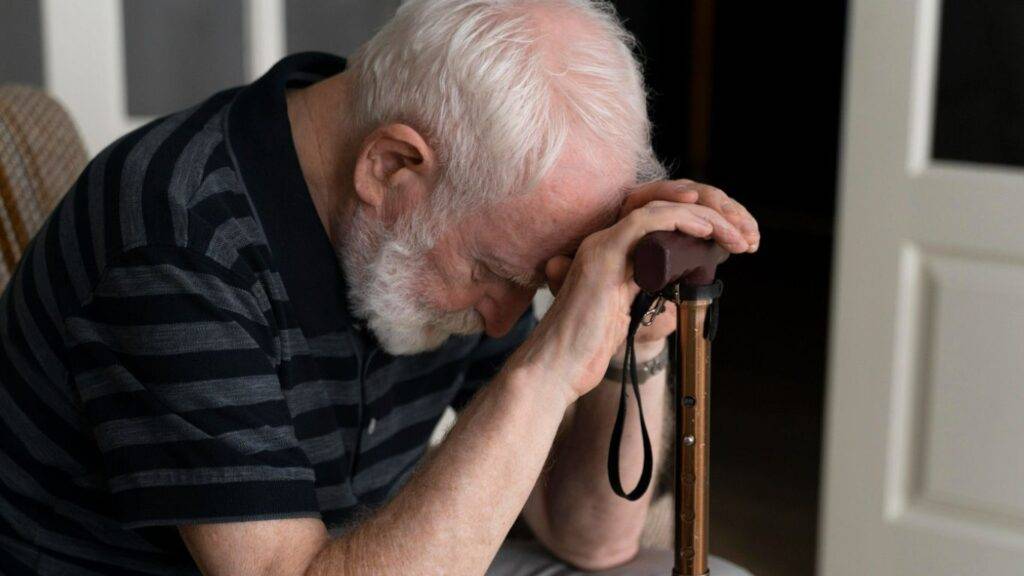
As caregivers, our primary responsibility is to provide compassionate and attentive care to those in need. However, amidst our noble intentions, it’s crucial to be vigilant and aware of the potential signs of patient abuse. In this article, we will delve into the importance of recognizing these warning signals and empowering caregivers to foster a safe and nurturing environment for their patients.
The Silent Epidemic
Patient abuse is a silent epidemic that can affect vulnerable individuals in various care settings. It is not always overt, making it imperative for caregivers to be attuned to subtle signs that may indicate mistreatment. By understanding and identifying these warning signals, caregivers can play a vital role in preventing and addressing patient abuse.
Recognizing the Signs:
Physical Indicators
- Unexplained bruises, welts, or injuries.
- Changes in weight or physical appearance that cannot be attributed to a medical condition.
- Frequent injuries or a pattern of recurring harm.
Emotional and Behavioral Changes
- Sudden mood swings or unexplained changes in behavior.
- Signs of fear or withdrawal from certain individuals.
- Emotional distress, anxiety, or depression without apparent cause.
Neglect and Abandonment
- Poor hygiene or inadequate personal care.
- Untreated medical conditions or unattended health needs.
- Malnutrition or dehydration.
Verbal and Psychological Indicators
- Verbal threats, humiliation, or intimidation.
- Isolation from friends and family.
- Manipulative behavior or control tactics.
Taking Action:
Document and Report
- Keep detailed records of any observed signs or incidents.
- Report concerns to the appropriate authorities within the care facility.
Communicate Effectively
- Establish open lines of communication with the patient.
- Encourage them to express any concerns or fears they may have.
Educate and Advocate
- Stay informed about the rights of patients and residents.
- Advocate for a culture of respect and dignity within the care environment.
In the realm of caregiving, the commitment to the well-being of patients goes hand in hand with a commitment to their safety. By unveiling and understanding the warning signs of patient abuse, caregivers become instrumental in fostering a compassionate and secure atmosphere. Caring with caution ensures that the vulnerable individuals under our care receive the respect and protection they rightfully deserve. Remember, awareness is the first step towards prevention, and together, caregivers can create a safer and more supportive caregiving environment.
Exploring the Ins and Outs of NY's Minimum Wage Regulations

The Big Apple may beckon with glittering promises and concrete dreams, but for many New Yorkers, the cost of living can bite like a winter wind. That’s where the minimum wage comes in, acting as a vital safety net for workers across the state. But New York’s minimum wage isn’t just a simple number; it’s a complex tapestry woven with regional variations, industry nuances, and future increases. So, grab your pretzel and settle in, because we’re about to navigate the ins and outs of NY’s minimum wage regulations.
Location: Forget Monopoly, location is key when it comes to New York’s minimum wage. The Big Apple itself stands tall, boasting a minimum of $15 per hour (as of December 31, 2022), soon to jump to $16 on January 1, 2024. Long Island and Westchester County follow suit, while the rest of the state hovers slightly lower at $14.20, soon to reach $15. Remember, these are baselines; future increases are already baked in, with $0.50 hikes slated for 2025 and 2026.
Industry Buzz: Not every job is created equal in the Empire State. While the general minimum wage rules apply to most, some industries have their quirks. Fast food workers in New York City, for example, earn a minimum of $15 per hour, but their employers can combine a $10 cash wage with a $5 tip allowance to meet that requirement. Tip-dependent workers also have separate regulations, so be sure to check specific industry guidelines if your paycheck comes with extra gratuities.
Size Matters: In New York City, size isn’t just about Empire State Building aspirations; it also impacts your minimum wage. Large employers, with 11 or more workers, must pay the full minimum wage, while small businesses, with 10 or fewer employees, have a slightly lower threshold. It’s a subtle difference, but for small operations, every penny counts.
Future Focus: Remember that minimum wage hike mentioned earlier? It’s not just lip service. New York is committed to gradually raising the bar, ensuring workers earn a living wage. But this also means staying up-to-date. Bookmark the Department of Labor’s website and keep an eye on local news to stay ahead of the curve and avoid any financial surprises.
Navigating the Maze: With all these variables at play, navigating the minimum wage maze can feel daunting. But fear not, intrepid New Yorker! Here are some tips to guide you:
- Know your location: City slicker or upstate dweller, knowing where you stand within the state’s geographical map is crucial.
- Check your industry: Are you slinging fries or crunching numbers? Understanding your industry’s specific regulations ensures you’re getting your rightful due.
- Size up your employer: A corporate giant or a cozy corner shop? Knowing your employer’s size helps avoid any minimum wage mishaps.
- Stay informed: Don’t get caught off guard by future increases. Bookmark relevant resources and stay tuned for updates.
Armed with this knowledge, you can approach your paycheck with confidence, knowing you’re getting your fair share of the Big Apple’s economic pie. Remember, New York’s minimum wage regulations are evolving, so keep this guide handy as your compass through the financial jungle. And who knows, with a little savvy and a big slice of determination, you might just conquer the concrete jungle, one minimum wage increase at a time!
Top 10 Medicaid-Accepting Urologists in NYC

Navigating the bustling healthcare scene of New York City can be daunting, especially when seeking specialized care on a limited budget. If you’re looking for top-notch urological care and rely on Medicaid, worry not! We’ve compiled a list of the Top 10 Medicaid-accepting urologists in New York City, based on factors like experience, patient reviews, and accessibility.
Dr. Michael K. O’Connell, MD – NYU Langone Health: Board-certified in both urology and robotic surgery, Dr. O’Connell boasts extensive experience treating a wide range of urological conditions, from kidney stones to prostate cancer. He’s known for his compassionate demeanor and meticulous surgical skills. (Multiple locations throughout NYC)
Dr. Elizabeth Kavaler, MD – Mount Sinai Health System: A leading female urologist with a focus on minimally invasive procedures, Dr. Kavaler is a trusted choice for women’s urological issues like urinary incontinence and pelvic floor dysfunction. Her dedication to patient education and personalized care makes her a favorite among female patients. (Multiple locations throughout NYC)
Dr. David B. Samadi, MD – Northwell Health: If you’re facing prostate cancer, Dr. Samadi is a renowned expert in robotic prostatectomy and other minimally invasive cancer treatments. He’s a pioneer in his field and offers cutting-edge techniques with minimal side effects. (Manhattan)
Dr. David E. Chung, MD – Weill Cornell Medicine: Specializing in pediatric urology, Dr. Chung offers comprehensive care for children with conditions like bedwetting, urinary tract infections, and congenital malformations. His gentle approach and playful demeanor make him a favorite among young patients and their families. (Manhattan)
Dr. David B. Eisenberg, MD – Montefiore Medical Center: A veteran urologist with over 30 years of experience, Dr. Eisenberg excels in treating bladder cancer and other urologic malignancies. He’s known for his thorough consultations and clear communication, putting patients at ease during challenging times. (Bronx)
Dr. Jacqueline W. Hewitt, MD – Brooklyn Hospital Center: Bringing a wealth of experience in female pelvic medicine and reconstructive surgery, Dr. Hewitt is a champion for women’s urological health. She treats conditions like prolapse and incontinence with a focus on non-surgical options whenever possible. (Brooklyn)
Dr. Paul F. Bongiovanni, MD – Maimonides Medical Center: Specializing in kidney stone treatment and minimally invasive procedures, Dr. Bongiovanni utilizes the latest technologies to provide effective and pain-free solutions. He’s known for his efficient approach and dedication to patient comfort. (Queens)
Dr. Michael Z. Morganstern, MD – Jacobi Medical Center: Offering comprehensive urological care to all ages, Dr. Morganstern is a skilled surgeon and diagnostician. He’s particularly adept at treating urinary tract infections and voiding dysfunction, making him a reliable choice for managing everyday urological concerns. (Bronx)
Dr. John P. Conners, MD – Staten Island University Hospital: If you’re on Staten Island and seeking exceptional urological care, Dr. Conners is your answer. He offers a full range of services, including prostate cancer treatment, kidney stone removal, and male infertility management. His friendly demeanor and attentive care put patients at ease. (Staten Island)
Dr. Alexander W. Pastore, MD – Elmhurst Hospital Center: Bringing expertise in both adult and pediatric urology to Queens, Dr. Pastore offers compassionate care for a wide range of conditions. He’s highly skilled in minimally invasive procedures and takes a patient-centered approach to treatment. (Queens)
Navigating urological issues can be stressful, but with this list of top-notch Medicaid-accepting urologists in New York City, you can find the right specialist to guide you through your journey toward recovery. Remember, early diagnosis and treatment are key, so don’t hesitate to seek help. Take care of yourself.
Your Definitive Source: Understanding and Selecting Medical Malpractice Attorneys in New York

Facing the complexities of a medical malpractice case can be a daunting experience. In the bustling legal landscape of New York, it’s crucial to have the right guide to navigate the intricate process. This blog serves as your definitive source for understanding and selecting the right medical malpractice attorney in New York, providing insights into the nuances of this legal domain and empowering you to make informed decisions.
The Landscape of Medical Malpractice:
Medical malpractice cases involve situations where healthcare professionals deviate from the standard of care, leading to harm or injury to patients. In New York, with its vast healthcare system, understanding the intricacies of medical malpractice claims is paramount for those seeking legal recourse.
The Role of a Medical Malpractice Attorney:
A skilled medical malpractice attorney serves as your advocate in seeking justice for the harm you’ve endured. They possess the legal expertise to navigate the complexities of medical cases, assess the merit of your claim, and guide you through the legal processes involved in pursuing compensation.
Qualities to Look for in an Attorney
Experience:
Look for an attorney with a significant background in medical malpractice cases. Experience brings valuable insights into the nuances of these complex legal matters.
Specialization:
Opt for an attorney who specializes in medical malpractice. Specialization ensures a deep understanding of the unique challenges posed by these cases.
Track Record of Success:
Investigate the attorney’s track record of successful cases. A history of favorable outcomes speaks volumes about their competence and ability to handle your case effectively.
Client Testimonials:
Client testimonials provide firsthand accounts of an attorney’s performance. Reading about others’ experiences can give you confidence in your choice.
Communication Skills:
Effective communication is key. Your attorney should be able to explain legal complexities understandably, keeping you informed and empowered throughout the process.
Resources and Support:
A well-established law firm with ample resources is better equipped to handle the demands of a medical malpractice case. Ensure that the attorney has the support needed for a thorough investigation.
Understanding New York’s Legal Landscape:
New York has specific laws and regulations governing medical malpractice cases. Your chosen attorney should be well-versed in these statutes and familiar with the intricacies of pursuing a claim in the state.
Top 5 Medical Malpractice Attorneys in New York City
Michael H. Joseph, PLLC:
Focus: Medical malpractice exclusively, with over 30 years of experience.
Strengths: Aggressive representation, meticulous case preparation, and a long history of successful verdicts and settlements.
Accolades: Super Lawyers designation, Martindale-Hubbell AV Preeminent® Rating.
The Perecman Firm, P.L.L.C.:
Focus: Medical malpractice, personal injury, and wrongful death.
Strengths: Compassionate approach, meticulous attention to detail, and a team of experienced attorneys ready to fight for you.
Accolades: Top 100 Trial Lawyers, Super Lawyers designation, Avvo “Clients’ Choice” Award.
Rosenberg, Minc, Falkoff & Wolff, LLP:
Focus: Medical malpractice, personal injury, and product liability.
Strengths: Extensive experience in complex medical cases, a strong track record of success, and a commitment to client communication.
Accolades: Best Law Firms by U.S. News & World Report, Super Lawyers designation, Martindale-Hubbell AV Preeminent® Rating.
Kramer, Dillof, Livingston & Moore (KDLM):
Focus: Medical malpractice, personal injury, and wrongful death.
Strengths: Aggressive litigation tactics, a team of nationally recognized attorneys, and a focus on maximizing client compensation.
Accolades: Best Law Firms by U.S. News & World Report, Super Lawyers designation, Avvo “Clients’ Choice” Award.
Peter G. Moulton, P.C.:
Focus: Medical malpractice exclusively, with over 40 years of experience.
Strengths: Personalized attention to each client, meticulous case preparation, and a proven track record of success in complex medical cases.
Accolades: Super Lawyers designation, Martindale-Hubbell AV Preeminent® Rating.
The Consultation Process:
A crucial step in selecting a medical malpractice attorney is the initial consultation. This meeting allows you to discuss the details of your case, gauge the attorney’s understanding, and determine if their approach aligns with your expectations. It’s also an opportunity to ask questions about their experience and strategy for handling your case.
Empowering Yourself Through Knowledge:
Understanding the basics of medical malpractice law in New York empowers you as a client. While your attorney is there to guide you, having a foundational understanding allows you to actively participate in your legal journey.
In the complex realm of medical malpractice, selecting the right attorney is a critical decision that can significantly impact the outcome of your case. This definitive guide aims to provide you with the knowledge and insights needed to make an informed choice. Remember, your attorney is not just a legal representative but a partner in your pursuit of justice. Armed with the right information, you can confidently navigate the process of understanding and selecting the best medical malpractice attorney in New York.
Your Comprehensive Guide to Navigating New York's Unemployment System

In the dynamic landscape of employment, unexpected changes can lead individuals to the doorstep of unemployment. For residents of New York, understanding the intricacies of the state’s unemployment system is essential during these times of transition. This blog serves as your comprehensive guide, offering insights, tips, and resources to navigate New York’s unemployment system with confidence.
The Importance of Understanding Unemployment
Unemployment, while a challenging phase, is a temporary setback that many individuals may face during their careers. Knowing how to navigate the system ensures that individuals can access the support and resources they need to transition smoothly to the next chapter of their professional lives.
Initiating the Process: Filing for Unemployment Benefits
Online Filing:
New York’s Department of Labor provides an online platform for filing unemployment claims. We guide you through the step-by-step process of creating an account, submitting necessary information, and tracking your application.
Eligibility Criteria:
Understanding the eligibility requirements is crucial. We break down the key factors that determine your eligibility for unemployment benefits, including work history, earnings, and the circumstances of your job separation.
Navigating Unemployment Benefits
Benefit Calculations:
Unemployment benefits are calculated based on your earnings history. We delve into the formula used to determine the amount you may be eligible to receive, helping you estimate your financial support during unemployment.
Duration of Benefits:
Knowing the duration for which you can receive unemployment benefits is vital. We explore the factors that influence the length of your eligibility and offer insights into potential extensions.
Job Search Assistance
Job Search Requirements:
New York’s unemployment system often requires recipients to actively seek employment. We provide guidance on meeting job search requirements, including the documentation needed to fulfill this obligation.
Job Training Opportunities:
Discovering new career paths may be part of your unemployment journey. We highlight available job training programs and resources that can aid you in enhancing your skills and marketability.
Overcoming Challenges
Appeals Process:
If your unemployment claim is denied, understanding the appeals process is crucial. We explain the steps involved in appealing a decision and offer tips on presenting a compelling case.
Common Pitfalls to Avoid:
Navigating the unemployment system can be complex, and certain pitfalls may impact your benefits. We identify common mistakes to avoid and provide guidance on ensuring a smooth experience.
Staying Informed
Updates and Changes:
The landscape of unemployment benefits can evolve. We provide resources for staying informed about any updates, policy changes, or new programs that may affect your unemployment journey.
Your journey through unemployment in New York doesn’t have to be overwhelming. With the right knowledge and resources, you can navigate the system with confidence and make informed decisions about your future. This comprehensive guide serves as your roadmap, ensuring that you have the tools and information needed to effectively navigate New York’s unemployment system and embark on a successful path forward.
Unlocking Mental Wellness: Top 10 Medicaid-Accepting Psychiatrists in NYC

New York City, a vibrant heart of energy and possibility, can also feel overwhelming when navigating mental health care. Finding the right psychiatrist, let alone one accepting Medicaid, can be like searching for a hidden oasis in the urban jungle. But fear not, fellow adventurers! This blog unlocks the door to well-being, highlighting 10 top NYC psychiatrists accepting Medicaid, ready to guide you on your journey towards mental health.
First, remember your mental health matters. Just like your physical health, it deserves nurturing and support. Medicaid opens the door to quality care, making sure everyone has a chance to flourish. Second, finding the perfect fit is key! Consider your specific needs, preferred treatment approaches, and personality when choosing a psychiatrist. This is your journey, so prioritize comfort and trust.
Now, meet your mental health allies
Dr. Maya Lee: This warm and empathic psychiatrist specializes in adult and adolescent psychiatry, trauma, and mood disorders. Dr. Lee fosters a safe space for healing, making her a beacon of hope for diverse communities.
Dr. David Hernandez: Bilingual (English/Spanish) and passionate about serving underserved communities, Dr. Hernandez utilizes holistic and collaborative strategies to tackle anxiety, depression, and psychotic disorders.
Dr. Alice Thompson: With decades of experience in geriatric psychiatry, Dr. Thompson empowers older adults to navigate mental health challenges, ensuring no stone is left unturned on their journey towards well-being.
Dr. Michael Chen: A champion for cultural competency, Dr. Chen specializes in treating adolescents and young adults from diverse backgrounds, focusing on understanding and addressing anxiety, depression, and ADHD through a culturally sensitive lens.
Dr. Sarah Kim: Dr. Kim’s expertise in treating trauma and PTSD shines brightly, offering culturally sensitive care and empowerment to individuals and families grappling with these challenges.
Dr. Emily Jones: Children and adolescents often face unique mental health challenges. Dr. Jones, a child and adolescent psychiatrist, shines a light on their struggles, specializing in treating anxiety, depression, and ADHD with a supportive and playful approach.
Dr. Kevin Patel: Bilingual (English/Hindi) and dedicated to serving diverse communities, Dr. Patel offers compassionate care to adults and adolescents grappling with mood disorders, addiction, and personality disorders. He understands the importance of cultural sensitivity in the healing process.
Dr. Anna Garcia: The transition to parenthood can be overwhelming, especially with perinatal mood and anxiety disorders. Dr. Garcia specializes in supporting mothers and families navigating this emotional rollercoaster, ensuring that both mama and little ones thrive.
Dr. Omar Khan: Dedicated to serving underserved communities, Dr. Khan is a beacon of hope for those struggling with severe mental illnesses like schizophrenia and bipolar disorder. His commitment to comprehensive care empowers individuals to reclaim their lives.
Dr. Lisa Rodriguez: Trauma can leave lingering scars, but Dr. Rodriguez offers a path to healing. Her expertise in trauma-informed care and culturally sensitive approach make her a vital resource for individuals and families seeking to reclaim their emotional well-being.
NYC’s vibrant community of mental health professionals stands ready to support you every step of the way. Embrace the journey, prioritize your mental health, and remember, you deserve to bloom, Medicaid or not.
Family-Centric Care: Understanding the Benefits for Disabled Adults Living at Home
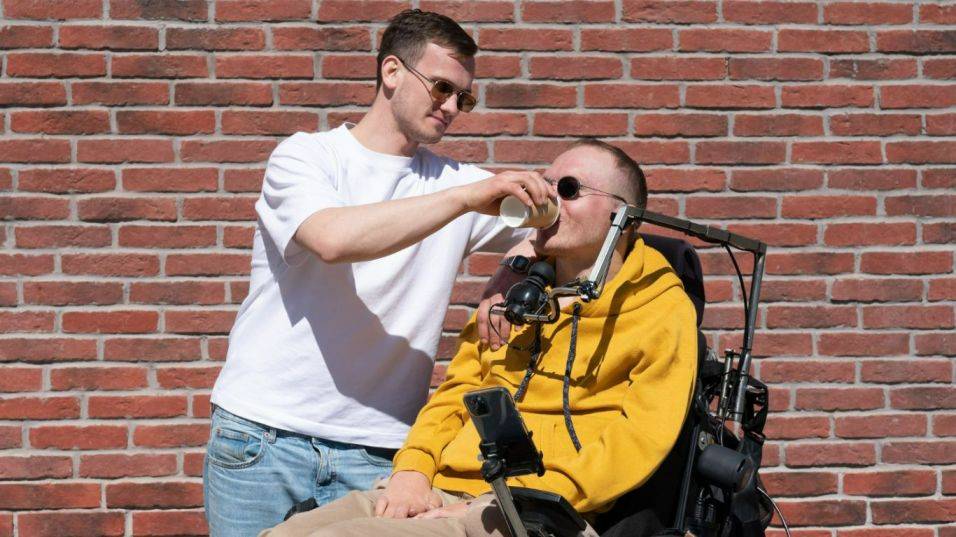
Navigating life with a disability brings forth a unique set of challenges, and for many adults, the unwavering support and comfort of living at home with family become invaluable. This blog aims to shed light on the numerous benefits of family-centric care for disabled adults living at home. From emotional well-being to financial stability, the advantages are multifaceted and contribute to a holistic support system that enables individuals to thrive despite their challenges.
Emotional Support and Well-Being
Living with family fosters a nurturing environment that is instrumental in promoting emotional well-being. For disabled adults, the comfort of familial bonds can alleviate stress, reduce feelings of isolation, and contribute to a positive mental health outlook.
Financial Stability
The financial aspect of disability can be substantial, and living with parents often eases the financial burden. Shared expenses, including housing, utilities, and groceries, provide a stable and cost-effective living arrangement, allowing disabled adults to allocate resources to other essential needs.
Holistic Health Management
Family-centric care facilitates a holistic approach to health management. With the support of family members, disabled adults can better navigate medical appointments, therapy sessions, and other healthcare requirements, ensuring a comprehensive and well-coordinated approach to their health.
Adapted Living Spaces
Living at home often allows for adaptable living spaces tailored to the specific needs of disabled adults. Families can make modifications to the home environment, such as installing ramps, grab bars, or other accessibility features, creating a comfortable and supportive living space.
Enhanced Social Connections
Family-centric care contributes to enhanced social connections. Living at home allows disabled adults to maintain close ties with family members, fostering a sense of belonging and reducing the risk of social isolation often associated with disability.
Personalized Care and Assistance
Family members are intimately familiar with the unique needs of their disabled loved ones. This familiarity enables them to provide personalized care and assistance, addressing specific challenges and ensuring a tailored approach to daily living activities.
Continuity of Care
The familial setting often ensures continuity of care. With family members involved in the daily lives of disabled adults, there is a seamless exchange of information and coordination, leading to a consistent and reliable caregiving environment.
Promotion of Independence
Living at home with family allows disabled adults to maintain a level of independence while still benefiting from the support they need. This balance contributes to a sense of autonomy and self-determination.
Cultural and Emotional Connection
Family-centric care often involves a cultural and emotional connection that is deeply meaningful. Sharing traditions, values, and experiences within a familial setting adds a layer of richness to the lives of disabled adults.
Flexibility in Care Arrangements
Family-centric care offers flexibility in care arrangements. Families can adapt to changing needs, ensuring that the care provided evolves alongside the evolving requirements of the disabled adult.
In embracing family-centric care, disabled adults living at home find a supportive and enriching environment that extends beyond the physical aspects of caregiving. The emotional bonds, financial stability, and personalized support create a holistic framework that empowers individuals to lead fulfilling lives despite the challenges of disability. By understanding the multifaceted benefits of family-centric care, we recognize the immense value it brings to the lives of disabled adults and the pivotal role families play in fostering well-being and resilience.
NYC's Top 10 Medicaid-Accepting Cardiologists

Finding a skilled and accessible cardiologist can be a challenge, especially if you rely on Medicaid insurance. In a bustling city like New York, navigating the healthcare landscape can be overwhelming. But fear not, New Yorkers! Here’s your guide to the top 10 Medicaid-accepting cardiologists in NYC, ensuring you receive the best possible care for your heart health, regardless of your financial situation.
Dr. Mark Seldon, MD, FACC: Board-certified in cardiology and internal medicine, Dr. Seldon is renowned for his patient-centered approach and expertise in treating a wide range of cardiovascular conditions. He’s affiliated with Mount Sinai Hospital and enjoys stellar patient reviews.
Dr. Anna Kezerashvili, MD: Bringing both clinical excellence and a warm bedside manner, Dr. Kezerashvili specializes in preventive cardiology, women’s heart health, and non-invasive procedures. She practices at NewYork-Presbyterian Brooklyn Methodist Hospital and is highly commended by patients.
Dr. Vladimir Fridman, MD, FACC, FSCAI: With extensive experience in interventional cardiology, Dr. Fridman is a master of minimally invasive procedures like angioplasty and stenting. He’s affiliated with NYU Langone Health and consistently receives praise for his meticulous care and clear communication.
Dr. Barry Bellovin, MD: Recognized for his expertise in arrhythmias and electrophysiology, Dr. Bellovin excels in diagnosing and treating irregular heartbeats. He practices at Jacobi Medical Center and is lauded for his dedication to his patients’ well-being.
Dr. Omid Kohani: A rising star in the cardiology field, Dr. Kohani focuses on preventative measures and lifestyle coaching to optimize heart health. He’s affiliated with Brooklyn Hospital Center and receives rave reviews for his patient education and attentiveness.
Dr. Maria Alonso, MD, FACC: Dr. Alonso brings a wealth of experience in general cardiology and echocardiography, providing comprehensive diagnosis and management of various heart conditions. She practices at Montefiore Medical Center and is appreciated for her compassionate and thorough approach.
Dr. David Lee, MD, FACC: A specialist in heart failure and cardiac transplantation, Dr. Lee offers advanced care for patients with complex cardiovascular conditions. He’s affiliated with Mount Sinai St. Luke’s and is admired for his expertise and dedication to improving patient outcomes.
Dr. Pooja Singla, MD, FACC: Focused on preventative cardiology and women’s heart health, Dr. Singla offers personalized care and empowers patients to take charge of their health. She practices at NYU Langone Health and is recognized for her clear explanations and patient advocacy.
Dr. Michael Shemesh, MD, FACC: Renowned for his expertise in interventional cardiology, Dr. Shemesh offers minimally invasive procedures with minimally invasive compassion. He’s affiliated with Lenox Hill Hospital and consistently receives accolades for his skill and bedside manner.
Dr. Priya Gulati, MD, FACC: With a subspecialty in nuclear cardiology, Dr. Gulati provides advanced imaging techniques for accurate diagnosis and treatment planning. She practices at NYU Langone Health and is commended for her thoroughness and patient education.
NYC residents deserve the best heart care, regardless of their insurance status. These top 10 Medicaid-accepting cardiologists are dedicated to providing excellent care and ensuring everyone has access to the vital services they need for a healthy heart. Don’t wait to prioritize your heart health. Schedule an appointment with one of these top cardiologists today and empower yourself to live a healthy and fulfilling life!
NYC's Top 10 Medicaid-Accepting Endocrinologists

Finding a qualified endocrinologist can be challenging, especially if you rely on Medicaid insurance. In a bustling city like NYC, navigating the healthcare landscape can feel overwhelming. Worry not, because this blog brings you the top 10 Medicaid-accepting endocrinologists in New York City, ensuring you receive quality care for your hormonal and metabolic conditions.
Dr. Maria Garcia, Mount Sinai Hospital: Board-certified and lauded for her patient-centric approach, Dr. Garcia specializes in diabetes, thyroid disorders, and adrenal gland issues. Her clinic at Mount Sinai is conveniently located in Midtown Manhattan.
Dr. David Chen, NYU Langone Health: Affiliated with the prestigious NYU Langone Health System, Dr. Chen is an expert in pituitary disorders, osteoporosis, and polycystic ovary syndrome (PCOS). His clinic is situated in both Brooklyn and Manhattan.
Dr. Angela Lee, Elmhurst Hospital Center: Dr. Lee is a respected endocrinologist at Elmhurst Hospital Center in Queens. She focuses on managing weight management, gestational diabetes, and endocrine cancers, making her a well-rounded choice for diverse needs.
Dr. Katherine Jones, Jacobi Medical Center: Based in the Bronx, Dr. Jones is a patient favorite at Jacobi Medical Center. Her areas of expertise include thyroid nodules, growth hormone deficiencies, and endocrine emergencies.
Dr. William Brown, Brooklyn Hospital Center: Dr. Brown’s clinic at Brooklyn Hospital Center caters to a wide range of endocrine conditions, including diabetes education, metabolic syndrome management, and adrenal insufficiency.
Dr. Susan Miller, Lincoln Medical Center: Serving the community in the Bronx, Dr. Miller is known for her comprehensive care approach. She specializes in treating diabetes, thyroid disorders, and endocrine complications during pregnancy.
Dr. Thomas Hernandez, Maimonides Medical Center: Located in Brooklyn, Dr. Hernandez is a highly regarded endocrinologist at Maimonides Medical Center. He focuses on managing pituitary tumors, hyperparathyroidism, and endocrine complications of HIV/AIDS.
Dr. Elizabeth Rodriguez, Woodhull Medical Center: Dr. Rodriguez’s clinic at Woodhull Medical Center in Queens provides excellent care for a variety of endocrine conditions, including osteoporosis, menstrual irregularities, and adrenal hyperplasia.
Dr. Michael Kim, Flushing Hospital Medical Center: Dr. Kim is a respected endocrinologist at Flushing Hospital Medical Center in Queens. He specializes in treating diabetes, thyroid disorders, and endocrine complications associated with obesity.
Dr. Jennifer Williams, Harlem Hospital Center: Based in Harlem, Dr. Williams is a passionate advocate for accessible healthcare. Her clinic at Harlem Hospital Center provides comprehensive care for diabetes, thyroid disorders, and endocrine-related reproductive issues.
Many NYC hospitals offer free or low-cost endocrinology consultations for uninsured or underinsured individuals. Don’t hesitate to contact your local hospital or clinic to inquire about available programs.
Top 10 Medicaid-Accepting OBGYNs in NYC

Finding the right OBGYN is crucial for maintaining your reproductive and overall health. In a city like NYC, with its vast healthcare landscape, navigating options while relying on Medicaid can feel daunting. But worry not, future mamas and sisters! This blog unveils the top 10 Medicaid-accepting OBGYNs in NYC, ensuring you receive excellent care, regardless of your insurance status.
Dr. Fatima Ali, Mount Sinai Hospital: Board-certified in both OBGYN and Maternal-Fetal Medicine, Dr. Ali offers expertise in prenatal care, high-risk pregnancies, and complex gynecological procedures. Her clinic at Mount Sinai is conveniently located in Midtown Manhattan.
Dr. Sarah Chen, NYU Langone Health: Affiliated with the prestigious NYU Langone system, Dr. Chen is a patient favorite, revered for her compassionate approach and focus on preventive care. Her Brooklyn and Manhattan clinics cater to diverse needs, from routine checkups to managing gynecological conditions.
Dr. Angela Lee, Elmhurst Hospital Center: Based in Queens, Dr. Lee is a respected OBGYN at Elmhurst Hospital Center. Her expertise spans from family planning and adolescent gynecology to managing obstetric complications, making her a well-rounded choice for various stages of life.
Dr. Katherine Jones, Jacobi Medical Center: Located in the Bronx, Dr. Jones is a top choice for those seeking a patient-centered OBGYN. Her areas of expertise include minimally invasive surgery, endometriosis management, and LGBTQ+ healthcare, making her a welcoming provider for all.
Dr. William Brown, Brooklyn Hospital Center: Dr. Brown’s clinic at Brooklyn Hospital Center provides comprehensive care, focusing on prenatal care, managing gynecological conditions like fibroids, and offering minimally invasive surgical options.
Dr. Susan Miller, Lincoln Medical Center: Serving the Bronx community, Dr. Miller is known for her thoroughness and dedication to patient education. Her expertise encompasses prenatal care, managing menopause, and addressing gynecological concerns across generations.
Dr. Thomas Hernandez, Maimonides Medical Center: Dr. Hernandez’s Brooklyn clinic boasts excellent patient reviews and caters to diverse needs, including prenatal care, management of gynecological cancers, and addressing concerns related to abnormal pap smears.
Dr. Elizabeth Rodriguez, Woodhull Medical Center: Located in Queens, Dr. Rodriguez offers comprehensive care, specializing in prenatal care, managing gynecological infections, and providing contraceptive counseling.
Dr. Michael Kim, Flushing Hospital Medical Center: Dr. Kim’s clinic in Queens is a patient favorite, particularly for those seeking expertise in prenatal care, managing menstrual irregularities, and addressing concerns related to vulvar health.
Dr. Jennifer Williams, Harlem Hospital Center: Dr. Williams is a passionate advocate for accessible healthcare, making her a top choice for those seeking culturally competent care. Her clinic in Harlem provides comprehensive services, including prenatal care, managing gynecological conditions like PCOS, and offering contraceptive options.
Many NYC hospitals offer free or low-cost gynecological services for uninsured or underinsured individuals. Don’t hesitate to contact your local hospital or clinic to inquire about available programs.
Understanding the Role of a Certified Nursing Assistant (CNA)

In the realm of healthcare, the unsung heroes often working diligently behind the scenes are Certified Nursing Assistants (CNAs). These dedicated professionals play a crucial role in providing compassionate and essential care to patients. In this blog, we will delve into the world of CNAs, exploring their responsibilities, qualifications, and the profound impact they have on the well-being of individuals in healthcare settings.
Defining the CNA Role
A Certified Nursing Assistant, commonly known as a CNA, is a trained healthcare professional who supports registered nurses (RNs) and licensed practical nurses (LPNs) in various medical settings. CNAs are integral members of the healthcare team, contributing significantly to the overall patient care experience.
Responsibilities of a CNA
Patient Care:
CNAs are at the forefront of patient care, assisting with daily activities such as bathing, dressing, and feeding. Their compassionate approach helps maintain the dignity and comfort of individuals under their care.
Vital Sign Monitoring:
Monitoring vital signs, including blood pressure, pulse, and respiratory rate, is a crucial responsibility of CNAs. This information is vital for healthcare professionals to assess a patient’s overall health.
Mobility Assistance:
CNAs aid patients in mobility exercises and transfers, ensuring they can move safely within healthcare facilities. This is particularly important for those with limited mobility or recovering from surgery.
Emotional Support:
Providing emotional support is a key aspect of the CNA role. They build rapport with patients, offering companionship and a caring presence, which can be particularly comforting during challenging times.
Record Keeping:
CNAs maintain detailed records of patient care activities. This documentation is essential for the healthcare team to track progress, identify trends, and make informed decisions about patient care plans.
Qualifications and Training
Becoming a CNA requires completing a state-approved training program, typically offered by community colleges, vocational schools, or healthcare institutions. The training includes both classroom instruction and hands-on clinical experience. Upon completion, individuals must pass a competency exam to obtain certification.
The Impact of CNAs on Healthcare
The role of CNAs extends beyond the technical aspects of patient care; it embodies the spirit of compassion and empathy in healthcare. Their contributions significantly alleviate the workload of nurses, allowing them to focus on more complex medical tasks.
Certified Nursing Assistants are the backbone of patient care, embodying the principles of empathy and compassion in healthcare settings. Understanding the vital role that CNAs play in the well-being of individuals sheds light on the importance of their contributions. As we acknowledge and appreciate the work of CNAs, we come to realize that their dedication is a cornerstone of compassionate healthcare delivery.
Heartening Words: 50 Quotes for Dedicated Caregivers

Caregivers, the unsung heroes in the tapestry of humanity, embody strength, compassion, and selflessness. Their journey is both challenging and rewarding, filled with moments that test resilience and moments that illuminate the profound impact they have on the lives they touch. In this blog, we present “Heartening Words: 50 Quotes for Dedicated Caregivers” to inspire, uplift, and acknowledge the extraordinary individuals who dedicate themselves to the service of others.
“To care for those who once cared for us is one of the highest honors.” – Tia Walker
“The closest thing to being cared for is to care for someone else.” – Carson McCullers
“The simple act of caring is heroic.” – Edward Albert
“Caregiving often calls us to lean into love we didn’t know possible.” – Tia Walker
“Caring for others is an expression of what it means to be fully human.” – Hillary Clinton
“The best way to find yourself is to lose yourself in the service of others.” – Mahatma Gandhi
“Your work is going to fill a large part of your life, and the only way to be truly satisfied is to do what you believe is great work.” – Steve Jobs
“The closest thing to being cared for is to care for someone else.” – Carson McCullers
“Take care to get what you like or you will be forced to like what you get.” – George Bernard Shaw
“You have not lived today until you have done something for someone who can never repay you.” – John Bunyan
“Caring for others is an art that requires creativity and an open heart.” – Thomas Dreier
“To love and be loved is to feel the sun from both sides.” – David Viscott
“We make a living by what we get, but we make a life by what we give.” – Winston Churchill
“The closest thing to being cared for is to care for someone else.” – Carson McCullers
“A kind gesture can reach a wound that only compassion can heal.” – Steve Maraboli
“Nobody cares how much you know until they know how much you care.” – Theodore Roosevelt
“Caregiving is not just about looking after the body; it’s about nurturing the soul.” – Diane Snider
“The closest thing to being cared for is to care for someone else.” – Carson McCullers
“The best way to find yourself is to lose yourself in the service of others.” – Mahatma Gandhi
“Compassion is the basis of morality.” – Arthur Schopenhauer
“The closest thing to being cared for is to care for someone else.” – Carson McCullers
“The closest thing to being cared for is to care for someone else.” – Carson McCullers
“You give but little when you give of your possessions. It is when you give of yourself that you truly give.” – Kahlil Gibran
“The closest thing to being cared for is to care for someone else.” – Carson McCullers
“The closest thing to being cared for is to care for someone else.” – Carson McCullers
“To love and be loved is to feel the sun from both sides.” – David Viscott
“Caring for others is an art that requires creativity and an open heart.” – Thomas Dreier
“We make a living by what we get, but we make a life by what we give.” – Winston Churchill
“The closest thing to being cared for is to care for someone else.” – Carson McCullers
“A kind gesture can reach a wound that only compassion can heal.” – Steve Maraboli
“Nobody cares how much you know until they know how much you care.” – Theodore Roosevelt
“Caregiving is not just about looking after the body; it’s about nurturing the soul.” – Diane Snider
“The closest thing to being cared for is to care for someone else.” – Carson McCullers
“The best way to find yourself is to lose yourself in the service of others.” – Mahatma Gandhi
“Compassion is the basis of morality.” – Arthur Schopenhauer
“The closest thing to being cared for is to care for someone else.” – Carson McCullers
“The closest thing to being cared for is to care for someone else.” – Carson McCullers
“You give but little when you give of your possessions. It is when you give of yourself that you truly give.” – Kahlil Gibran
“The closest thing to being cared for is to care for someone else.” – Carson McCullers
“The closest thing to being cared for is to care for someone else.” – Carson McCullers
“To love and be loved is to feel the sun from both sides.” – David Viscott
“Caring for others is an art that requires creativity and an open heart.” – Thomas Dreier
“We make a living by what we get, but we make a life by what we give.” – Winston Churchill
“The closest thing to being cared for is to care for someone else.” – Carson McCullers
“The closest thing to being cared for is to care for someone else.” – Carson McCullers
“A kind gesture can reach a wound that only compassion can heal.” – Steve Maraboli
“Nobody cares how much you know until they know how much you care.” – Theodore Roosevelt
“Caregiving is not just about looking after the body; it’s about nurturing the soul.” – Diane Snider
“The closest thing to being cared for is to care for someone else.” – Carson McCullers
“The best way to find yourself is to lose yourself in the service of others.” – Mahatma Gandhi
In the world of caregiving, where the heart is the guiding force, these 50 quotes serve as reminders of the immense value and impact of selfless dedication. They echo the sentiment that caregivers are the silent architects of comfort, healing, and love, shaping a legacy that extends far beyond the bounds of duty. May these heartening words inspire and uplift those whose care knows no bounds, and may they find solace in the profound difference they make every day.
Unlocking Opportunities: 30 Exciting Weekend Jobs for New Yorkers

The vibrant city of New York offers not only a bustling workweek but also a wealth of exciting weekend job opportunities for those seeking to make the most of their downtime. Whether you’re looking to supplement your income, explore new passions, or gain valuable experience, this blog will unveil thrilling weekend jobs that can add a spark to your Saturdays and Sundays in the city that never sleeps.
Event Staff:
Join the energy of NYC’s events by working as event staff for concerts, conferences, and festivals.
Bartender or Server:
Tap into the city’s dynamic nightlife scene by taking up a weekend gig as a bartender or server.
Freelance Writing:
Utilize your writing skills by freelancing for blogs, websites, or publications on the weekends.
Personal Shopper:
If you have a flair for fashion, consider becoming a personal shopper for busy New Yorkers on the weekends.
Tour Guide:
Share your love for the city by working as a weekend tour guide, showcasing the best of NYC to visitors.
Fitness Instructor:
If you’re passionate about fitness, become a weekend fitness instructor at local gyms or outdoor spaces.
Dog Walker or Pet Sitter:
Make furry friends and earn money by offering dog walking or pet sitting services over the weekend.
Photography Assistant:
Explore your interest in photography by assisting professional photographers during weekend shoots.
Online Tutor:
Share your expertise by offering online tutoring services to students over the weekend.
Food Delivery Driver:
Join the gig economy and become a food delivery driver for popular platforms during peak weekend hours.
Freelance Graphic Design:
Tap into your creative side by offering freelance graphic design services on weekends.
Retail Sales:
Many stores hire part-time staff for weekends, offering an opportunity to work in retail.
Social Media Management:
Leverage your social media skills by managing accounts for businesses during the weekend.
Catering Staff:
Join catering companies to work at events and parties happening around the city.
Yoga Instructor:
If you’re a certified yoga instructor, lead weekend classes at studios or in local parks.
House Cleaning Services:
Offer your cleaning skills to busy New Yorkers who may need assistance over the weekend.
Virtual Assistant:
Provide virtual assistance to businesses or entrepreneurs, helping with administrative tasks.
Promotional Events:
Participate in promotional events for brands and products happening during weekends.
Freelance Videography:
If you have video skills, offer your services as a freelance videographer for events or businesses.
Language Tutor:
If you’re fluent in multiple languages, become a language tutor on the weekends.
Art Instructor:
Teach art classes or workshops on weekends, sharing your passion for creativity.
Freelance Web Development:
Utilize your web development skills by taking on freelance projects over the weekend.
Customer Service Representative:
Some companies hire weekend customer service representatives to assist customers.
Home Renovation Assistant:
If you’re handy, offer your services as a weekend home renovation assistant.
Freelance Consulting:
Share your expertise in a particular field by offering freelance consulting services on weekends.
Brand Ambassador:
Represent brands at events and promotions on weekends as a brand ambassador.
Bookkeeping Services:
If you have accounting skills, offer bookkeeping services to small businesses on weekends.
Freelance Musician:
If you’re musically inclined, perform at events or as a street musician on weekends.
Computer Programming:
Apply your programming skills by taking on freelance coding projects over the weekend.
Fitness Bootcamp Instructor:
Lead outdoor fitness boot camps in parks or public spaces during weekends.
New York City’s weekends are filled with opportunities waiting to be unlocked. Whether you’re looking for a creative outlet, a chance to explore your passions or an additional source of income, these exciting weekend job ideas offer a diverse array of options for New Yorkers ready to make the most of their free time. Embrace the city’s dynamic spirit and turn your weekends into fulfilling and rewarding experiences.
Opportunities Unveiled: 30 Simple Jobs for Quick Placement in NYC

Navigating the bustling job market of New York City can be both exhilarating and challenging. For those seeking swift entry into the workforce, the city offers a myriad of opportunities that allow for quick placement and a chance to kickstart a fulfilling career. In this blog, we unveil simple yet rewarding jobs that pave the way for quick employment in the heart of NYC.
Retail Sales Associate:
Join the retail industry and assist customers in stores across the city.
Cashier:
Work in various establishments handling transactions and providing excellent customer service.
Restaurant Server:
NYC’s vibrant culinary scene provides ample opportunities for those looking to work in restaurants.
Barista:
Coffee shops abound in the city, offering positions for individuals with a passion for brewing.
Delivery Driver:
Join the gig economy as a food or package delivery driver for quick and flexible work.
Receptionist:
Many offices and businesses in NYC are in need of receptionists to manage front desk duties.
Customer Service Representative:
Assist customers over the phone or in-person, resolving inquiries and providing support.
Administrative Assistant:
Work in various industries providing administrative support to teams and executives.
Sales Representative:
Explore opportunities in sales, promoting products or services to potential clients.
Data Entry Clerk:
Many companies require individuals to input data accurately, making this an in-demand role.
Retail Merchandiser:
Organize and display products in retail settings to enhance the shopping experience.
Security Guard:
Ensure the safety of establishments and their patrons by working as a security guard.
Housekeeping Staff:
Join the hospitality industry as a housekeeper, maintaining cleanliness in hotels or residences.
Warehouse Associate:
Contribute to the logistics and distribution industry by working in a warehouse.
Stock Clerk:
Assist in managing inventory and restocking shelves in retail stores.
Dog Walker or Pet Sitter:
Cater to pet owners by offering dog walking or pet sitting services.
Brand Ambassador:
Represent brands at events, promoting products or services to potential customers.
Event Staff:
Work at various events, providing support in roles such as ticketing or guest services.
Tour Guide:
Showcase the city’s attractions by working as a weekend or part-time tour guide.
Freelance Content Creator:
Leverage your writing or graphic design skills for freelance content creation opportunities.
Fitness Instructor:
If you have a passion for fitness, explore opportunities as a part-time fitness instructor.
Babysitter or Nanny:
Provide childcare services for families in need of assistance.
Photography Assistant:
Assist professional photographers during shoots, gaining hands-on experience.
Virtual Assistant:
Offer administrative support remotely by working as a virtual assistant.
Freelance Translator:
If you’re fluent in multiple languages, explore freelance translation opportunities.
Social Media Manager:
Utilize your social media skills by managing accounts for businesses.
Freelance Web Developer:
Offer web development services on a freelance basis to clients in need.
Cash Handler:
Work in roles such as a bank teller or cashier handling cash transactions.
Freelance Graphic Designer:
If you have graphic design skills, explore freelance opportunities in the creative industry.
Personal Shopper:
Share your fashion sense by working as a personal shopper for busy New Yorkers.
The opportunities for quick placement in New York City are diverse and plentiful. These simple yet impactful jobs provide a gateway to swift employment, allowing individuals to enter the dynamic workforce of NYC with ease. Whether you’re starting your career journey, looking for a part-time gig, or seeking flexibility, these roles unveil the potential for quick placement in the city that never sleeps. Seize the opportunities, unveil your potential, and embark on a fulfilling career in the heart of NYC.
Navigating Home Health Care: Best Practices and Pitfalls for Home Health Aides

In the realm of home health care, where compassion meets responsibility, home health aides play a pivotal role in ensuring the well-being and comfort of those in need. As dedicated professionals, home health aides must navigate their roles with a balance of best practices and an awareness of potential pitfalls. In this blog, we explore the intricacies of home health care, shedding light on the essential dos and cautionary don’ts that define the path to providing exceptional in-home assistance.
Best Practices
Establishing Clear Communication:
Effective communication is the cornerstone of quality home health care. Establish open, transparent communication with clients and their families to understand their needs, preferences, and concerns.
Maintaining Professionalism:
Home health aides should maintain a high level of professionalism at all times. Punctuality, a neat appearance, and a compassionate demeanor contribute to building trust and fostering positive relationships with clients.
Promoting Independence:
Encourage and support clients in their efforts to maintain independence. Foster a sense of empowerment by involving them in decision-making regarding their care and daily activities.
Adhering to Care Plans:
Follow prescribed care plans diligently. Attention to medication schedules, dietary requirements, and other care instructions is crucial to ensuring the well-being of the client.
Cultivating Empathy:
Compassion is at the heart of home health care. Show empathy and understanding towards clients, acknowledging their unique needs and providing emotional support when necessary.
Remaining Adaptable:
Home health aides often encounter unpredictable situations. Being adaptable and resourceful in responding to unexpected challenges is a valuable trait.
Pitfalls to Avoid
Ignoring Boundaries:
Respect the personal boundaries of clients. Avoid overstepping or making assumptions about their preferences without clear communication.
Neglecting Self-Care:
Home health aides often dedicate themselves to the well-being of others, but it’s essential not to neglect personal self-care. Burnout can compromise the quality of care provided.
Skipping Documentation:
Thorough and accurate documentation is vital. Avoid skipping or neglecting to record essential information related to the client’s health, progress, or any changes in their condition.
Overlooking Safety Measures:
Home health aides must prioritize safety. Ignoring safety protocols, such as proper lifting techniques or infection control practices, can lead to accidents or health risks.
Lack of Cultural Sensitivity:
Cultural competence is key in home health care. Avoid making assumptions based on cultural backgrounds and strive to understand and respect the diversity of clients and their families.
Failure to Report Changes:
Any significant changes in the client’s health or well-being should be promptly reported to the supervising healthcare professional. Failure to communicate changes could lead to delayed intervention.
Home health care is a dynamic field that requires a delicate balance of compassion, professionalism, and adaptability. By adhering to best practices and being mindful of potential pitfalls, home health aides can navigate their roles with excellence, ensuring the highest quality of care for those they serve. In embracing a holistic approach to care, home health aides contribute significantly to the well-being and comfort of individuals in the comfort of their homes.
Navigating Medicaid Services in Monroe County: A Comprehensive Guide

In Monroe County, New York, navigating the complexities of healthcare services can be a daunting task, especially for individuals and families seeking affordable coverage. Medicaid stands as a crucial lifeline, offering access to essential healthcare services for those with limited financial means. In this comprehensive guide, we will explore the ins and outs of Medicaid services in Monroe County, shedding light on the application process, key features, and the vital role it plays in ensuring accessible healthcare for the community.
Understanding Medicaid in Monroe County
Eligibility Criteria:
Medicaid eligibility in Monroe County, as in other parts of New York, is primarily income-based. Factors such as family size, income, and specific circumstances are taken into account. This guide provides an overview of the criteria and steps individuals can take to determine their eligibility.
Application Process:
Navigating the Medicaid application process is a crucial step. We’ll delve into the various channels available for applying, whether it’s through the New York State of Health Marketplace, in-person assistance centers, or online portals. Understanding the documentation requirements and deadlines is key to a smooth application process.
Covered Services:
Medicaid in Monroe County provides comprehensive coverage, encompassing a wide range of healthcare services. From preventive care and doctor visits to hospital stays and prescription medications, we’ll explore the breadth of services available under Medicaid, ensuring individuals are aware of the resources at their disposal.
Managed Care Organizations (MCOs):
Many Medicaid recipients receive services through Managed Care Organizations (MCOs). This section will provide insights into how MCOs function, their role in coordinating care, and the benefits they bring to Medicaid participants in Monroe County.
Community Resources:
Beyond the official channels, Monroe County offers a network of community resources and support services. We’ll highlight local organizations and outreach programs that can provide additional assistance, ensuring residents have a robust support system in place.
Navigational Tips
Stay Informed:
Keeping up-to-date with changes in Medicaid policies and services is crucial. We’ll explore resources and communication channels that individuals can tap into for the latest information.
Seek Assistance:
Navigating Medicaid services can be complex, and individuals are encouraged to seek assistance. We’ll provide guidance on where to find local support, whether through community centers, advocacy groups, or healthcare professionals.
Know Your Rights:
Understanding one’s rights as a Medicaid recipient is empowering. We’ll discuss key rights and responsibilities, ensuring individuals can advocate for their healthcare needs effectively.
As we navigate the intricate landscape of Medicaid services in Monroe County, this comprehensive guide aims to empower individuals and families with the knowledge needed to access affordable and quality healthcare. Medicaid plays a vital role in ensuring that healthcare is not a luxury but a fundamental right for all residents. By demystifying the process and highlighting essential resources, we pave the way for a healthier and more informed Monroe County community.
Empowering Strategies for Thriving Despite Life's Challenges with a Disability
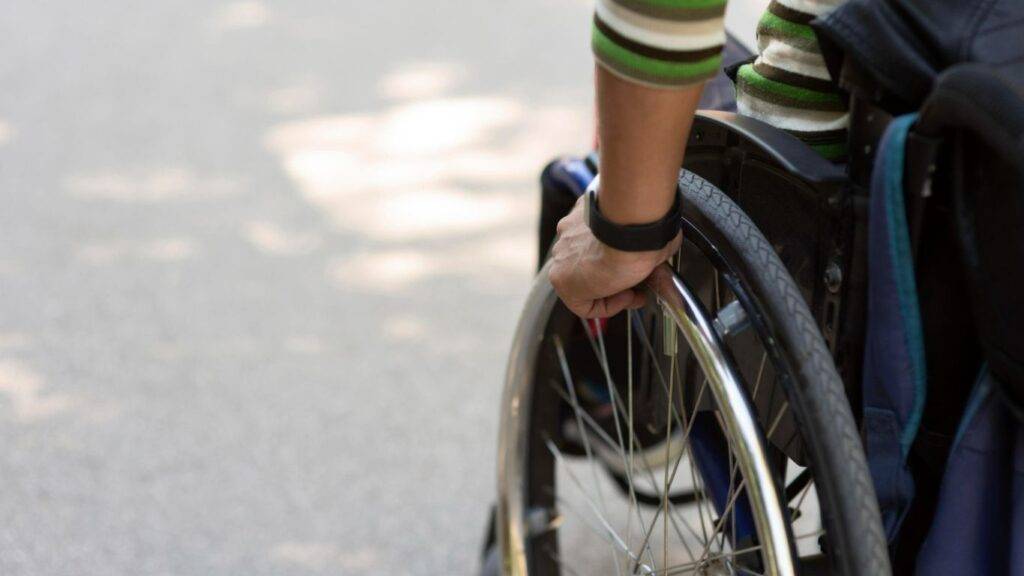
Living with a disability can present unique challenges, but it doesn’t mean you can’t lead a fulfilling and empowered life. In fact, many individuals with disabilities have not only overcome obstacles but have thrived in the face of adversity. This blog explores empowering strategies that can help you navigate life’s challenges and cultivate a thriving mindset.
Embrace Self-Advocacy:
One of the first steps to thriving with a disability is embracing self-advocacy. Understand your rights, communicate your needs, and be an active participant in decisions that affect your life. Whether it’s in the workplace, at school, or in social settings, advocating for yourself ensures that your unique requirements are acknowledged and met.
Build a Support System:
Surround yourself with a strong support system of friends, family, and mentors. Having a network of people who understand and support you can provide emotional strength during difficult times. Share your goals and aspirations with your support system, and let them be a source of encouragement and motivation.
Set Realistic Goals:
Setting and achieving realistic goals is a powerful way to build confidence and a sense of accomplishment. Break down larger objectives into smaller, manageable tasks. Celebrate each achievement, no matter how small, as these victories contribute to your overall success and well-being.
Cultivate Resilience:
Resilience is a key trait for overcoming life’s challenges. Learn to adapt to changes, setbacks, and uncertainties. Understand that resilience is a skill that can be developed over time. Focus on the positive aspects of your experiences, and use challenges as opportunities for growth and learning.
Invest in Continuous Learning:
Knowledge is a powerful tool for empowerment. Invest in continuous learning to enhance your skills and knowledge, whether it’s related to your career, personal development, or hobbies. Stay informed about advancements in adaptive technologies and resources that can further empower your journey.
Explore Adaptive Technologies:
In today’s technologically advanced world, there are numerous adaptive technologies designed to enhance accessibility for individuals with disabilities. Explore these tools to find solutions that can make daily tasks easier and contribute to a more independent lifestyle.
Promote Inclusivity:
Be an advocate for inclusivity in your community. Educate others about the importance of creating environments that are accessible to everyone. By fostering an inclusive mindset, you contribute to a more understanding and supportive society for individuals with disabilities.
Celebrate Your Uniqueness:
Remember that your disability is just one aspect of who you are. Celebrate your uniqueness and the strengths that come with it. Focus on your abilities and talents, and recognize the value you bring to your community and the world.
Thriving despite life’s challenges with a disability is not only possible but achievable with the right mindset and strategies. By embracing self-advocacy, building a strong support system, setting realistic goals, cultivating resilience, investing in continuous learning, exploring adaptive technologies, promoting inclusivity, and celebrating your uniqueness, you can empower yourself to lead a fulfilling and thriving life. Remember, your journey is unique, and your potential is limitless.
The Essential Guide to Medicaid Coverage in Onondaga County
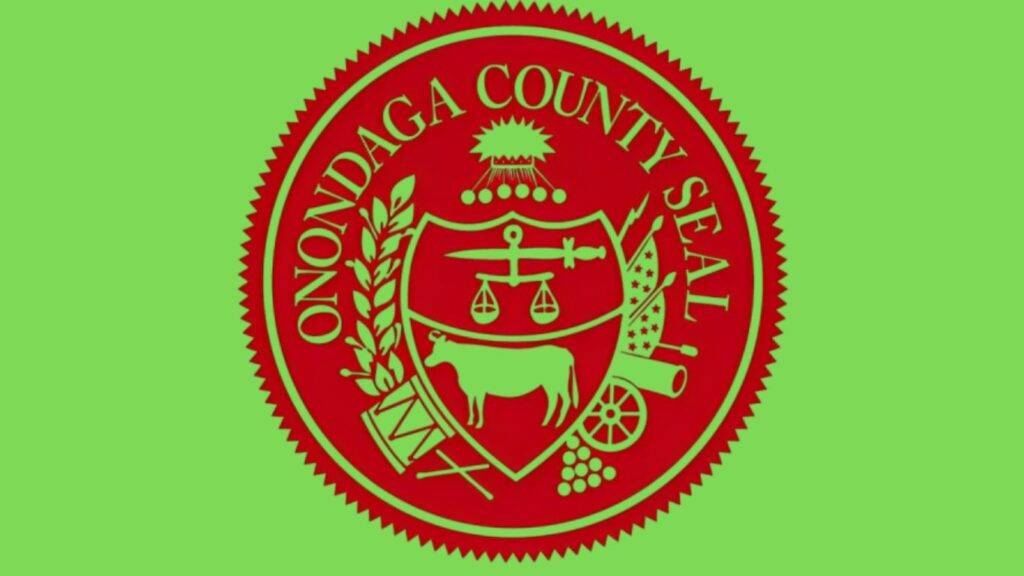
Access to quality healthcare is a fundamental right, and for residents of Onondaga County, New York, Medicaid serves as a crucial lifeline. Understanding the intricacies of Medicaid coverage is essential for individuals and families seeking affordable healthcare solutions. This blog aims to provide an in-depth guide to Medicaid coverage in Onondaga County, offering valuable insights into the services, eligibility criteria, and resources available to the community.
Overview of Medicaid in Onondaga County
Medicaid is a state and federally-funded program designed to provide healthcare coverage to low-income individuals and families. In Onondaga County, the program plays a vital role in ensuring that residents have access to essential medical services, preventive care, and other health-related benefits.
Eligibility Criteria
To access Medicaid coverage in Onondaga County, individuals must meet specific eligibility criteria, which often include income thresholds, household size, and other factors. This section of the guide will outline the key requirements for Medicaid qualification, helping readers determine their eligibility status.
Covered Services and Benefits
Medicaid in Onondaga County covers a broad range of medical services, including doctor visits, hospital stays, prescription medications, preventive care, and more. Readers will gain a comprehensive understanding of the services covered under Medicaid, empowering them to make informed decisions about their healthcare needs.
Application Process
Navigating the Medicaid application process can be a complex task. This section will provide a step-by-step guide on how to apply for Medicaid in Onondaga County, including online application options, required documentation, and key contact information for assistance.
Specialized Programs and Services
Onondaga County may offer specialized Medicaid programs to cater to the unique needs of certain populations, such as pregnant women, children, and individuals with disabilities. This part of the guide will shed light on these programs and how they enhance healthcare access for specific groups.
Tips for Maximizing Medicaid Benefits
Understanding how to maximize Medicaid benefits is crucial for recipients. This section will offer practical tips on how to make the most of Medicaid coverage, including information on preventive care, managing chronic conditions, and utilizing community resources.
Staying Informed
Medicaid policies and procedures may change, and staying informed is essential for beneficiaries. This part of the guide will highlight resources, newsletters, and community events that keep individuals up-to-date on any changes to the Medicaid program in Onondaga County.
In conclusion, the Essential Guide to Medicaid Coverage in Onondaga County serves as a valuable resource for individuals navigating the complexities of healthcare access. By providing a comprehensive overview of Medicaid services, eligibility criteria, application processes, and tips for maximizing benefits, this guide aims to empower residents in their journey toward affordable and comprehensive healthcare coverage. Access to healthcare is a fundamental right, and understanding the available resources is the first step toward a healthier, more secure future.
United Against COVID-19: A Guide for Patients and Their Caregivers

The COVID-19 pandemic has presented unprecedented challenges for individuals and their caregivers. Navigating the uncertainties of the virus requires a united effort and a comprehensive understanding of the best practices to stay safe and well. This blog serves as a guide for patients and their caregivers, offering insights, tips, and resources to navigate the complexities of the COVID-19 landscape together.
Understanding COVID-19
Begin by establishing a foundational understanding of the virus. Explore the nature of COVID-19, its symptoms, modes of transmission, and risk factors. Knowledge is a powerful tool for staying informed and making proactive decisions.
Protecting Vulnerable Populations
Certain populations, such as the elderly and those with underlying health conditions, are more vulnerable to severe outcomes from COVID-19. Learn about specific measures to protect these individuals, including enhanced hygiene practices, social distancing, and vaccination.
Communication Strategies
Effective communication is key during times of uncertainty. Caregivers and patients must maintain open lines of communication to share concerns, ask questions, and express needs. This section will offer practical communication strategies to strengthen the caregiver-patient relationship.
Mental Health Support
The pandemic has taken a toll on mental health, affecting both patients and caregivers. Explore coping mechanisms, stress management techniques, and resources for seeking professional support. Maintaining mental well-being is crucial for enduring the challenges of the ongoing situation.
Practical Safety Measures
Implementing practical safety measures is essential in minimizing the risk of COVID-19 transmission. This section will cover guidelines for maintaining a safe home environment, proper hygiene practices, and tips for reducing exposure when venturing outside.
Healthcare Access
Access to healthcare services is critical, even during a pandemic. Learn about telehealth options, emergency protocols, and how to navigate healthcare appointments to ensure that patients receive the necessary care while minimizing the risk of exposure.
Vaccination Guidance
Stay up-to-date on the latest information regarding COVID-19 vaccinations. Understand the importance of vaccination for both patients and caregivers and address any concerns or questions related to the vaccine.
Community Resources
Explore local and online resources that can provide additional support. From community organizations offering assistance to virtual support groups, knowing where to turn for help is a valuable aspect of navigating the challenges posed by COVID-19.
Planning for the Future
Uncertainty can be overwhelming, but having a plan in place provides a sense of control. Work with healthcare professionals to develop contingency plans, emergency contacts, and strategies for adapting to changes in the evolving landscape of the pandemic.
United Against COVID-19: A Guide for Patients and Their Caregivers is designed to empower individuals and their support networks during these challenging times. By fostering understanding, promoting communication, implementing practical safety measures, and accessing relevant resources, patients and caregivers can navigate the pandemic together. Remember, unity, knowledge, and proactive measures are key to overcoming the obstacles posed by COVID-19 and emerging stronger on the other side.
10 Personal Precautions for Seniors
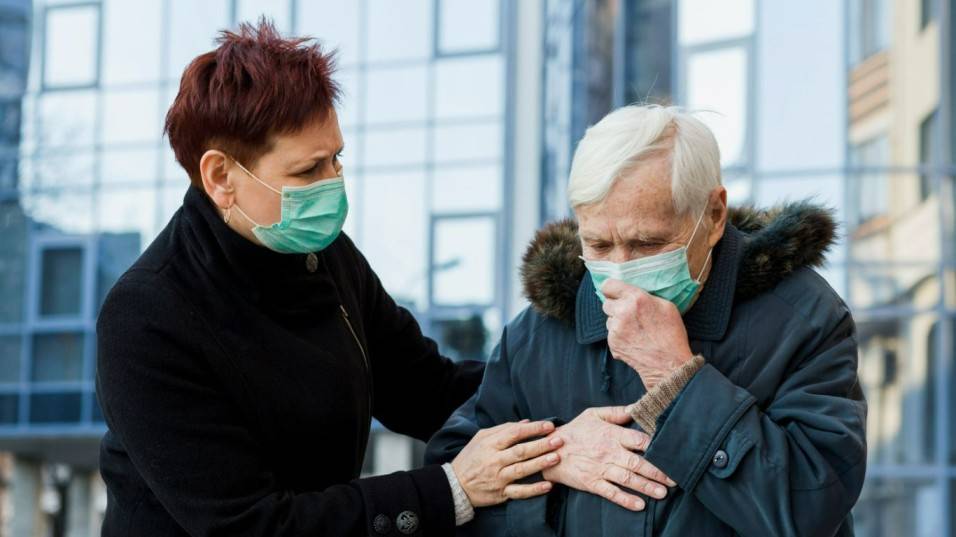
As we age, personal safety becomes a paramount concern, and taking proactive precautions is crucial for maintaining a secure and fulfilling lifestyle. This blog explores ten essential personal precautions that seniors can adopt to navigate life with confidence and peace of mind. By incorporating these measures into daily routines, seniors can enhance their well-being and maintain independence.
Home Safety First
Ensure that your living space is senior-friendly by eliminating trip hazards, installing handrails, and using non-slip mats. Conduct a safety assessment of your home to identify potential risks and make necessary modifications for a secure environment.
Stay Connected
Maintaining social connections is not just emotionally fulfilling but also contributes to safety. Stay connected with family, friends, and neighbors. Having a support system in place ensures that help is readily available when needed.
Regular Exercise Routine
Physical activity is vital for maintaining strength and balance. Incorporate a regular exercise routine tailored to your abilities. Consult with a healthcare professional to create a plan that supports your overall well-being.
Medication Management
Adopt a system for managing medications effectively. Use pill organizers, set reminders, and maintain a list of medications to avoid errors. Regularly review your medication plan with healthcare providers to ensure it aligns with your health needs.
Emergency Preparedness
Create an emergency plan that includes contact information for emergency services, family members, and neighbors. Keep essential items, such as medications, documents, and emergency supplies, in an easily accessible place.
Financial Security
Protect yourself financially by being vigilant about scams and fraud. Be cautious about sharing personal information, monitor bank statements regularly, and seek assistance from trusted family members or professionals when managing financial matters.
Regular Health Check-ups
Schedule regular check-ups with healthcare professionals to monitor your overall health. Early detection of potential health issues can lead to more effective treatments and better outcomes.
Maintain Cognitive Health
Engage in activities that stimulate your mind, such as puzzles, games, and social interactions. Stay mentally active to promote cognitive health and reduce the risk of conditions like dementia.
Technology for Safety
Explore technology options that enhance safety, such as personal alarms, home monitoring systems, and wearable devices. These tools can provide an added layer of security and prompt assistance in case of emergencies.
Adaptive Tools and Aids
Embrace adaptive tools and aids that cater to your specific needs. Whether it’s using mobility aids, hearing aids, or other assistive devices, these tools can significantly improve your daily life and safety.
By implementing these ten personal precautions, seniors can proactively enhance their safety, well-being, and overall quality of life. It’s never too late to prioritize personal safety, and taking these precautions ensures that seniors can continue to lead active, independent, and secure lives. Remember, the journey towards safety and confidence is a gradual and empowering process, and every precaution taken is a step towards a more secure and fulfilling future.
Assessing Emotional Well-being in Seniors: The Comprehensive Guide to the Geriatric Depression Scale

Emotional well-being is a crucial aspect of overall health, especially for seniors who may face unique challenges as they age. One valuable tool for understanding and addressing emotional health in the elderly is the Geriatric Depression Scale (GDS). This blog serves as a comprehensive guide to the Geriatric Depression Scale, shedding light on its significance, administration, and how it contributes to the holistic care of seniors.
Understanding the Geriatric Depression Scale
The Geriatric Depression Scale is a widely used tool designed to assess depressive symptoms in older adults. Developed specifically for the elderly population, it takes into account the nuances of emotional well-being in seniors, considering factors such as physical health, cognitive function, and social dynamics.
Why Assessing Emotional Well-being Matters
Emotional health is closely tied to the overall well-being of seniors. Unrecognized and untreated depression in older adults can lead to a range of negative outcomes, including compromised physical health, diminished cognitive function, and reduced quality of life. Regular assessments using tools like the GDS enable healthcare professionals to identify and address emotional concerns proactively.
How the Geriatric Depression Scale Works
The Geriatric Depression Scale typically consists of a series of questions that evaluate various aspects of mood and behavior. This section of the blog will provide an overview of the types of questions included in the scale and how they contribute to the assessment of depressive symptoms.
Administration of the Geriatric Depression Scale
Understanding how the GDS is administered is crucial for healthcare professionals, caregivers, and seniors themselves. Whether it’s a self-report questionnaire or administered by a trained professional, this section will outline the various methods used to assess emotional well-being using the Geriatric Depression Scale.
Interpreting GDS Scores
Once the assessment is complete, the scores need interpretation. This section will guide readers through understanding GDS scores and what different ranges may indicate about a senior’s emotional well-being. It’s important to note that the GDS is just one component of a comprehensive evaluation.
The Holistic Approach to Senior Care
Emotional well-being is interconnected with physical health, cognitive function, and social engagement. This section will emphasize the importance of a holistic approach to senior care, with the Geriatric Depression Scale serving as a valuable tool in assessing one critical aspect of a senior’s overall health.
Incorporating GDS Results into Care Plans
The insights gained from the Geriatric Depression Scale assessment should be integrated into care plans. This section will explore how healthcare professionals, caregivers, and seniors themselves can use GDS results to tailor interventions that address emotional well-being and enhance the overall quality of life.
Empowering Seniors through Communication
Open communication is key in addressing emotional well-being. This section will highlight the significance of fostering a supportive environment where seniors feel comfortable discussing their emotions, concerns, and preferences.
In conclusion, the Geriatric Depression Scale is a valuable tool in the assessment of emotional well-being in seniors. By understanding its significance, administration, and interpretation, healthcare professionals, caregivers, and seniors themselves can work collaboratively to address emotional health and contribute to a more fulfilling and balanced life in their senior years. Remember, proactive assessment and thoughtful intervention are crucial elements in promoting the emotional well-being of our aging population.
Empowering Opportunities: Remote Work Options Tailored for Individuals with Disabilities

In today’s rapidly evolving work landscape, remote employment has emerged as a transformative force, offering new opportunities for professionals across various backgrounds. For individuals with disabilities, remote work represents more than just a trend—it’s a pathway to inclusivity, flexibility, and empowerment. This blog explores the array of remote work options uniquely tailored to individuals with disabilities, shedding light on how these opportunities can contribute to professional success and personal fulfillment.
The Rise of Remote Work
The evolution of technology has paved the way for a remote work revolution, breaking down geographical barriers and creating opportunities for diverse talents. Explore how this shift benefits individuals with disabilities, providing them with flexible work environments that accommodate their unique needs.
Inclusivity in Remote Work
Remote work thrives on inclusivity, allowing individuals with disabilities to contribute their skills and expertise without facing traditional workplace barriers. This section will delve into how remote work fosters a culture of inclusion, celebrating diversity and harnessing the potential of every professional.
Tailored Opportunities for Various Disabilities
Different disabilities come with different needs. This part of the blog will explore how remote work options can be customized to accommodate a range of disabilities, including mobility challenges, visual impairments, hearing impairments, and neurodiversity. From accessible technologies to flexible schedules, discover how remote jobs can be tailored for diverse needs.
Remote Job Profiles for Disabled Professionals
Highlight specific remote job profiles that align well with the skills and capabilities of individuals with disabilities. Whether it’s in customer support, graphic design, coding, writing, or virtual assistance, there are remote opportunities that cater to a wide range of talents.
Flexible Schedules and Accommodations
Flexibility is a cornerstone of remote work, and it extends beyond the location. Explore how remote jobs offer flexible schedules and accommodations, allowing individuals with disabilities to balance work with health needs and personal commitments.
Remote Education and Skill Development
Remote work often goes hand in hand with remote education. This section will discuss how individuals with disabilities can leverage online resources to enhance their skills, making them more competitive in the remote job market.
Overcoming Barriers
While remote work presents a wealth of opportunities, there can still be challenges. This part of the blog will address potential barriers and provide insights into how individuals with disabilities can overcome them, ensuring a smooth transition into the world of remote employment.
Remote Work Success Stories
Share real-life success stories of individuals with disabilities thriving in remote work environments. These stories serve as inspiration, demonstrating the transformative impact of remote employment on professional growth, financial independence, and overall well-being.
Resources and Support Networks
Provide information about resources and support networks available to individuals with disabilities seeking remote employment. From online communities to job placement services, these resources can be invaluable in navigating the remote job market.
Empowering Opportunities: Remote Work Options Tailored for Individuals with Disabilities aims to inspire and inform. By showcasing the diverse range of remote job options, exploring the inclusive nature of remote work, and providing practical insights into overcoming challenges, this blog seeks to encourage individuals with disabilities to explore and pursue the vast and inclusive world of remote employment. The future of work is evolving, and remote opportunities are paving the way for a more accessible, diverse, and empowering professional landscape.
What You Need to Know about CDPAANYS
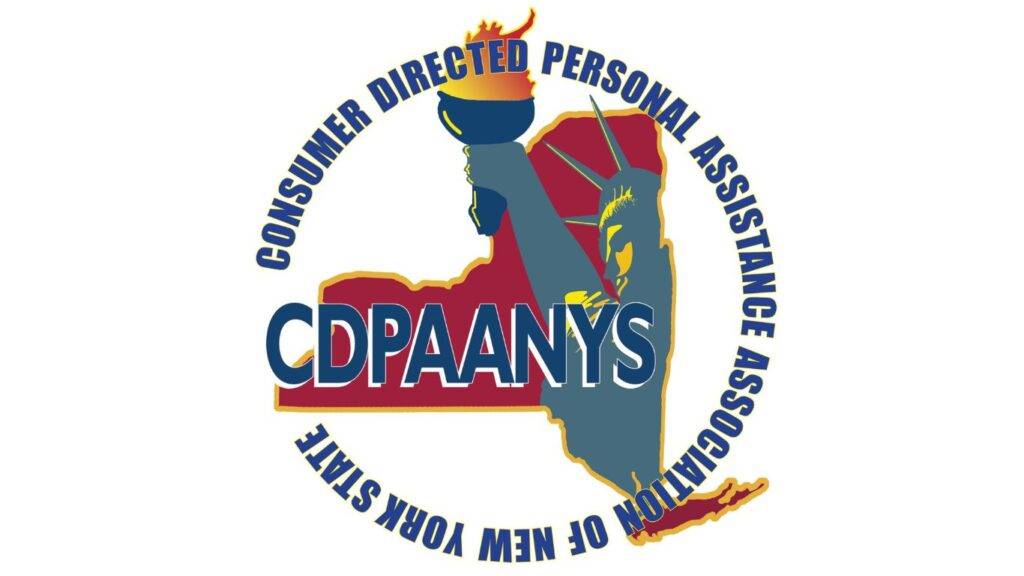
Consumer-Directed Personal Assistance (CDPAANYS) stands as a beacon of empowerment for individuals seeking control and independence in managing their personal assistance needs. This blog serves as an informative guide, providing a comprehensive overview of CDPAANYS and its significance in delivering personalized care and support for individuals in New York.
Understanding CDPAANYS
CDPAANYS is a program designed to give individuals the authority to manage their own personal assistance services. At its core, it enables individuals with disabilities or chronic conditions to have more control over their care decisions, fostering a sense of autonomy and self-determination.
Consumer-Directed Personal Assistance Explained
Delve into the mechanics of CDPAANYS and how it differs from traditional models of personal assistance. Learn about the consumer-directed approach, which places the individual at the center of decision-making, allowing them to hire, train, and manage their personal assistants.
Eligibility and Participation
Explore the eligibility criteria for participating in CDPAANYS. This section will outline who qualifies for the program and how individuals can initiate their involvement, ensuring that those who can benefit from this empowering approach are well-informed.
The Role of Personal Assistants
Under CDPAANYS, individuals have the flexibility to hire and manage their personal assistants. Discover how this unique aspect of the program contributes to a more personalized and tailored approach to care, fostering strong relationships between individuals and their caregivers.
Customized Care Plans
One of the key strengths of CDPAANYS is its emphasis on customized care plans. Uncover how individuals can collaborate with their personal assistants to create personalized care plans that address their unique needs, preferences, and daily routines.
Navigating the CDPAANYS Network
Learn about the network of support and resources available within CDPAANYS. From training opportunities for personal assistants to advocacy and informational services, understanding the broader network ensures individuals can make the most of their participation in the program.
Advantages of CDPAANYS
This section will highlight the numerous advantages of choosing CDPAANYS for personal assistance needs. From increased independence and flexibility to fostering a sense of control over one’s care, discover how this program positively impacts the lives of individuals in New York.
Overcoming Challenges
While CDPAANYS offers many benefits, there may be challenges to navigate. This part of the blog will address common concerns and provide insights into overcoming potential obstacles, ensuring individuals have a realistic view of the program.
Real-life Success Stories
Share inspiring success stories of individuals who have thrived under the CDPAANYS model. These stories will serve as testimonials to the transformative power of consumer-directed personal assistance in enhancing the lives of those it serves.
How to Get Started
Conclude the blog with practical steps on how individuals can get started with CDPAANYS. From understanding the enrollment process to accessing support services, this section will provide a roadmap for those interested in embracing the empowering approach of consumer-directed personal assistance.
“What You Need to Know about CDPAANYS” is a comprehensive guide that aims to empower individuals in New York with the knowledge and understanding of this innovative program. By exploring its principles, benefits, and practical aspects, individuals can make informed decisions about their personal assistance needs, fostering a greater sense of control and independence in their daily lives. CDPAANYS stands as a testament to the power of consumer-directed care, offering a pathway to personalized, empowering assistance for those who seek it.
Senior Self-Care Strategies for Well-Being

In the journey through the golden years, prioritizing self-care becomes increasingly crucial for seniors aiming to maintain their health, vitality, and overall well-being. This blog explores a range of senior self-care strategies designed to enhance the quality of life during this special chapter. From physical health to mental and emotional resilience, discover how self-care practices empower seniors to embrace a fulfilling and healthy lifestyle.
Physical Well-being
Physical health is the cornerstone of senior self-care. Explore gentle exercises, nutritional guidelines, and tips for maintaining mobility. From low-impact exercises to incorporating nutrient-rich foods into daily meals, discover how small adjustments can lead to significant improvements in overall physical well-being.
Mental and Cognitive Health
Seniors often find great satisfaction in keeping their minds sharp and engaged. This section will delve into activities and practices that promote mental and cognitive health, including brain games, learning new skills, and fostering a curious and creative mindset.
Emotional Resilience
Emotional well-being is a vital aspect of self-care. Discover strategies for managing stress, finding joy in daily activities, and cultivating emotional resilience. From mindfulness practices to engaging in hobbies that bring joy, explore ways to nurture a positive emotional state.
Social Connections
Maintaining social connections is a powerful form of self-care for seniors. This section will explore the importance of staying socially engaged, whether through family gatherings, community events, or online platforms. Meaningful connections contribute to emotional well-being and a sense of belonging.
Sleep Hygiene
Quality sleep is essential for overall health and vitality. Explore tips for promoting better sleep hygiene, including establishing a regular sleep schedule, creating a comfortable sleep environment, and incorporating relaxation techniques before bedtime.
Holistic Approaches
Holistic self-care encompasses various aspects of well-being. This section will introduce holistic practices such as yoga, meditation, and tai chi, offering seniors gentle yet effective methods for enhancing physical, mental, and emotional balance.
Creative Outlets
Engaging in creative pursuits is a fulfilling form of self-care. From painting and writing to gardening and crafting, seniors can discover new or rediscover old passions that bring joy and a sense of accomplishment.
Preventive Health Measures
Preventive health measures play a crucial role in senior self-care. This section will cover regular health check-ups, screenings, and vaccinations, empowering seniors to stay proactive in maintaining their health and preventing potential issues.
Technology and Learning
Embracing technology can open up a world of learning and connection for seniors. From online courses to video calls with loved ones, incorporating technology into daily life can enhance mental stimulation and foster a sense of connectedness.
Celebrating Achievements
Finally, self-care involves acknowledging and celebrating personal achievements. This section will emphasize the importance of recognizing milestones, no matter how small, and finding joy in the journey through the golden years.
“Senior Self-Care Strategies for Well-Being” is a guide to empower seniors in cultivating a lifestyle that prioritizes their health, happiness, and fulfillment. By incorporating these self-care practices into daily routines, seniors can navigate the golden years with resilience, joy, and a deep sense of well-being. The journey through aging becomes an opportunity for growth, exploration, and the celebration of a life well-lived.
Securing Your Finances: Asset Protection Tips in the Face of Medicaid
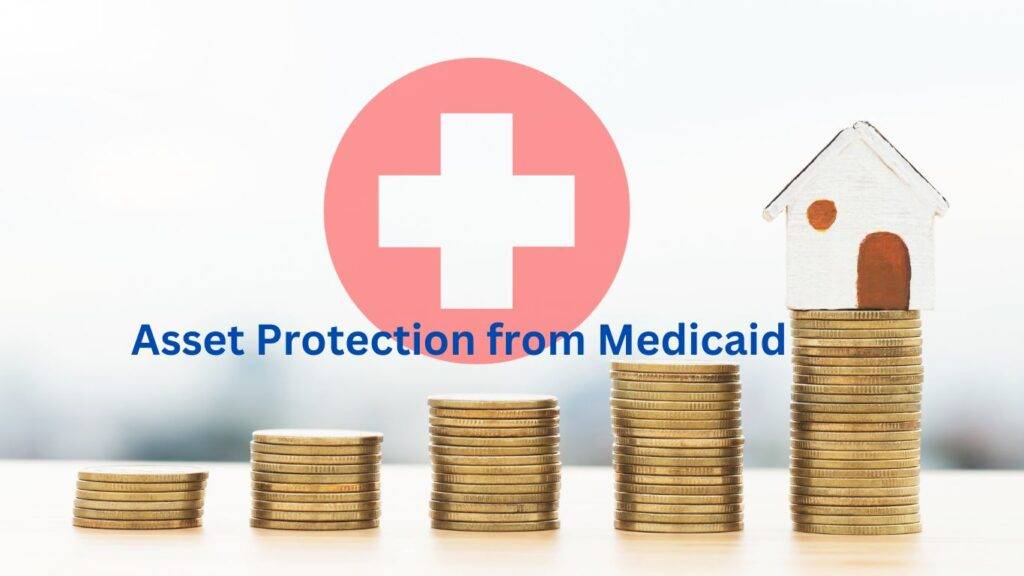
Securing your finances is a critical aspect of planning for the future, and this is especially true when considering Medicaid. While Medicaid offers essential healthcare coverage, understanding how it interacts with your assets is key to safeguarding your financial well-being. In this blog, we will explore asset protection tips to help you navigate the complexities of Medicaid and ensure the preservation of your financial security.
Understanding Medicaid’s Asset Limits
Medicaid eligibility is often tied to asset limits. Gain a clear understanding of these limits and how they may impact your ability to qualify for Medicaid benefits. Knowing the rules is the first step in crafting an effective asset protection strategy.
Early Planning for Long-Term Care
Long-term care is a significant consideration when it comes to Medicaid. Early planning allows you to explore options such as long-term care insurance, which can help cover costs without jeopardizing your assets.
Establishing Trusts
Explore the benefits of creating trusts as part of your asset protection strategy. Irrevocable trusts, in particular, can be powerful tools to shield certain assets while still allowing you to qualify for Medicaid.
Transferring Assets Strategically
Strategic asset transfers can be part of an effective asset protection plan. Learn about the rules and timelines associated with asset transfers to ensure compliance with Medicaid regulations.
Exempt Assets and Their Role
Certain assets are exempt from Medicaid calculations. Understanding what assets are considered exempt can provide valuable insights into how you can structure your finances to maximize protection.
Seek Professional Guidance
Navigating Medicaid and asset protection requires a deep understanding of complex regulations. Engage the services of financial planners, elder law attorneys, or Medicaid planning professionals who specialize in helping individuals secure their finances while maintaining Medicaid eligibility.
Utilizing Annuities
Annuities can be a strategic financial tool in Medicaid planning. Explore how annuities can be used to convert countable assets into income streams, providing financial security while meeting Medicaid guidelines.
Invest in Real Estate Planning
Real estate is a significant asset for many individuals. Proper estate planning can ensure that your real estate holdings are structured to minimize Medicaid impact while preserving their value for future generations.
Consider Pooled Income Trusts
Pooled income trusts allow individuals to contribute excess income while still qualifying for Medicaid benefits. Explore how this option can provide financial flexibility while protecting your assets.
Stay Informed and Updated
Medicaid rules and regulations can evolve. Stay informed about any changes in Medicaid policies and adjust your asset protection strategies accordingly. Regular reviews with financial professionals can ensure that your plan remains effective.
Securing Your Finances
Asset Protection Tips in the Face of Medicaid is a comprehensive guide to help you navigate the intersection of Medicaid and your financial well-being. By understanding the rules, seeking professional guidance, and implementing strategic asset protection measures, you can safeguard your assets while still accessing the vital healthcare coverage that Medicaid provides. Remember, early planning and informed decision-making are key elements in ensuring a secure financial future in the face of Medicaid considerations.
Understanding the Transformation of Personality in the Elderly

Aging is a natural and intricate process that brings about various changes, not only physically but also emotionally and psychologically. One intriguing aspect of this journey is the transformation of personality in the elderly. In this blog, we will explore the nuanced dynamics of personality changes that accompany the aging process, seeking a deeper understanding of the factors that contribute to these transformations and the impact they have on the lives of our aging population.
The Nature of Personality
Begin by delving into the concept of personality and its multifaceted nature. Discuss the different components of personality, including traits, behaviors, and emotional patterns, to provide a foundation for understanding how these elements evolve with age.
Factors Influencing Personality Changes
Explore the various factors that contribute to the transformation of personality in the elderly. These may include biological changes, life experiences, health conditions, and external influences. Understanding these factors helps illuminate the complexity of personality shifts in aging individuals.
Neurological Changes and Personality
Dive into the neurological aspect of aging and its impact on personality. Discuss how changes in the brain, such as alterations in neurotransmitter levels and structural shifts, can contribute to shifts in behavior, emotions, and cognitive function.
Emotional Resilience and Adaptability
Examine the emotional resilience of aging individuals and their capacity to adapt to life’s changes. Highlight stories and research that showcase how seniors navigate challenges, demonstrating the flexibility and adaptability of the aging personality.
The Role of Life Experiences
Life experiences, both positive and challenging, play a significant role in shaping personality. Explore how accumulated experiences over a lifetime can contribute to a rich tapestry of traits, wisdom, and a unique perspective on life.
Social Connections and Personality
Discuss the impact of social connections on personality in the elderly. Explore the influence of relationships with family, friends, and community on shaping and sustaining positive personality traits and overall well-being.
Coping Mechanisms and Personality Changes
Examine the coping mechanisms that seniors develop to navigate life’s challenges. Whether it’s through humor, spiritual practices, or other coping strategies, understanding these mechanisms provides insight into how personality adapts to changing circumstances.
Personal Growth and Development
Contrary to stereotypes, aging can be a period of personal growth and development. Share stories and studies that highlight the potential for positive transformation in personality, emphasizing that growth is a lifelong journey.
Recognizing Signs of Distress
While many personality changes in the elderly are natural and adaptive, some may indicate underlying distress. This section will guide readers on recognizing signs that may require attention, encouraging proactive measures for mental health and well-being.
The Importance of Holistic Care
Conclude the blog by emphasizing the significance of holistic care that addresses not only physical health but also the emotional and psychological well-being of seniors. Encourage a compassionate and understanding approach to personality changes, fostering an environment that supports the evolving identities of our elderly population.
Understanding the transformation of personality in the elderly is a nuanced and enlightening journey into the intricacies of aging. By exploring the multifaceted factors that contribute to these changes, we gain insight into the rich tapestry of experiences that shape the unique personalities of our seniors. Ultimately, fostering a deeper understanding of these transformations promotes empathy, compassion, and a holistic approach to supporting the well-being of our aging population.
Essential Information on Physical Therapy at Home

Physical therapy plays a pivotal role in enhancing mobility, reducing pain, and promoting overall well-being. In recent times, the concept of bringing therapy home has gained prominence, offering individuals the convenience and personalized care of in-home physical therapy. In this blog, we will delve into essential information about physical therapy at home, exploring its benefits, considerations, and the transformative impact it can have on the rehabilitation journey.
The Rise of In-Home Physical Therapy
Begin by discussing the increasing popularity of in-home physical therapy and the factors contributing to its rise. Explore how this personalized approach is changing the landscape of rehabilitation, making it more accessible and tailored to individual needs.
Benefits of In-Home Physical Therapy
Highlight the numerous advantages of receiving physical therapy at home. Discuss how personalized care, convenience, and the familiar environment contribute to improved outcomes and a positive rehabilitation experience.
Personalized Treatment Plans
Explore how in-home physical therapy allows for the creation of highly personalized treatment plans. Discuss the importance of tailoring exercises and interventions to the specific needs and goals of the individual, promoting a more effective and targeted approach.
Individualized Assessment and Monitoring
Detail how in-home physical therapy involves thorough assessments conducted in the individual’s home environment. Emphasize the importance of monitoring progress in a familiar setting, allowing for real-time adjustments to the treatment plan as needed.
Adapting Exercises to Home Settings
Discuss the adaptability of exercises to the home environment. Explore how therapists can creatively utilize everyday spaces and objects to create effective and manageable exercise routines that individuals can incorporate into their daily lives.
Convenience and Accessibility
Examine the convenience factor of in-home physical therapy, emphasizing how it eliminates the need for travel and provides greater accessibility, especially for those with mobility challenges. Discuss how this convenience contributes to a consistent and sustainable rehabilitation routine.
Building a Therapeutic Relationship
Explore how in-home physical therapy fosters a unique therapeutic relationship between the therapist and the individual. Discuss the importance of trust and rapport in the rehabilitation process and how the home setting can enhance these aspects.
Considerations for In-Home Physical Therapy
Provide insights into the considerations individuals should be aware of when opting for in-home physical therapy. Discuss factors such as space requirements, the need for specific equipment, and the importance of open communication with the therapist.
Integrating Technology
Examine how technology can play a role in enhancing in-home physical therapy. Discuss virtual sessions, app-based exercises, and other technological tools that can complement and enrich the rehabilitation experience.
Empowering Independence
Conclude the blog by emphasizing how in-home physical therapy empowers individuals to take an active role in their rehabilitation. Discuss the long-term benefits of building self-management skills and fostering a sense of independence and confidence.
Essential Information on Physical Therapy at Home aims to provide individuals with a comprehensive understanding of the transformative potential of in-home rehabilitation. By exploring the benefits, personalized approaches, and considerations, individuals can make informed decisions about incorporating in-home physical therapy into their wellness journey. This innovative approach to rehabilitation brings therapy closer to home, offering not just physical support but also the comfort and familiarity necessary for a successful recovery.
Your Gateway to Self-Sufficiency: Understanding the Katz Index

Embarking on the journey of maintaining independence and self-sufficiency is a crucial aspect of aging gracefully. The Katz Index of Independence in Activities of Daily Living (ADL) serves as a valuable gateway to assess and understand an individual’s level of self-sufficiency. In this blog, we will delve into the significance of the Katz Index, exploring how it functions as a guiding tool in evaluating and promoting autonomy in daily living.
The Essence of Self-Sufficiency
Begin by discussing the importance of self-sufficiency and autonomy, especially in the context of aging. Emphasize how maintaining independence in daily activities contributes to a higher quality of life and well-being.
Unveiling the Katz Index
Provide an overview of the Katz Index, introducing its creator, Dr. Sidney Katz, and the background of its development. Explain how the index serves as a standardized tool for assessing an individual’s ability to perform fundamental activities necessary for independent living.
Key Activities Evaluated
Explore the six key activities assessed by the Katz Index—bathing, dressing, toileting, transferring, continence, and feeding. Discuss why these activities are considered fundamental benchmarks for gauging an individual’s functional status.
Scoring and Interpretation
Explain the scoring system of the Katz Index, detailing how each activity is assessed as “independent,” “needs assistance,” or “dependent.” Clarify how the cumulative score provides a snapshot of an individual’s overall level of independence.
Application in Healthcare Settings
Discuss the practical applications of the Katz Index in healthcare settings. Highlight its role in guiding care plans, assisting healthcare professionals in understanding the needs of the elderly, and serving as a valuable communication tool among healthcare providers.
Monitoring Changes Over Time
Explore how the Katz Index is instrumental in monitoring changes in an individual’s independence over time. Discuss its adaptability as a dynamic tool that reflects improvements or declines in functional status.
Empowering Care Plans
Delve into how the Katz Index empowers the creation of personalized care plans. Discuss how healthcare providers use the information gathered to tailor interventions that enhance independence and address specific areas of need.
Enhancing Quality of Life
Highlight the correlation between maintaining independence and improving the overall quality of life. Discuss how understanding and addressing limitations identified by the Katz Index can contribute to a more fulfilling and enriched daily existence.
Encouraging Self-Awareness
Explore how the Katz Index encourages individuals to be self-aware of their capabilities and challenges. Discuss the psychological impact of maintaining a sense of control and autonomy in the face of aging-related changes.
Embracing Autonomy in Aging
Conclude the blog by emphasizing the role of the Katz Index as a gateway to self-sufficiency in the aging process. Encourage individuals, caregivers, and healthcare providers to view the index not just as an assessment tool but as a roadmap for preserving independence and embracing autonomy throughout the aging journey.
Your Gateway to Self-Sufficiency: Understanding the Katz Index sheds light on a powerful tool that goes beyond assessment—it serves as a guide for individuals seeking to maintain their independence and age with dignity. By comprehending the essence of self-sufficiency, unveiling the details of the Katz Index, and exploring its applications, we can collectively work towards fostering a culture that values and supports autonomy in the aging population.
Building a Strong Foundation for Care: Crafting Your Perfect Caregiver Contract

Caring for a loved one or family member is a noble undertaking, and establishing a clear framework through a well-crafted caregiver contract can make the caregiving journey smoother and more organized. In this blog, we’ll explore the importance of building a strong foundation for care by creating a personalized and effective caregiver contract.
The Significance of a Caregiver Contract
Opening with an overview of why a caregiver contract is essential in the caregiving process. Discuss the benefits, such as clarity on responsibilities, expectations, and legal protection for both parties involved.
Identifying Caregiver Roles and Responsibilities
Highlight the importance of clearly defining the roles and responsibilities of the caregiver. Discuss aspects such as daily tasks, medical responsibilities, and any specific requirements based on the care recipient’s needs.
Establishing Clear Terms and Conditions
Delve into the details of the contract, emphasizing the need for clear and concise terms and conditions. Discuss aspects like working hours, compensation, and any additional benefits or allowances. It’s crucial to create a fair and transparent agreement that ensures both parties are on the same page.
Addressing Confidentiality and Privacy
Explore the sensitive nature of caregiving and the importance of including clauses related to confidentiality and privacy in the caregiver contract. Discuss the need for respecting the privacy of the care recipient and maintaining confidentiality regarding personal and medical information.
Including Contingency Plans
Highlight the importance of preparing for unforeseen circumstances by including contingency plans in the contract. Discuss possibilities such as caregiver replacements, emergency protocols, and communication strategies in case of unexpected events.
Seeking Legal Guidance
Encourage readers to seek legal advice when drafting the caregiver contract. This section can provide tips on finding a legal professional experienced in caregiver contracts and ensuring that the document complies with relevant laws and regulations.
Open Communication and Flexibility
Stress the importance of ongoing communication between the caregiver and the care recipient’s family. Emphasize the need for flexibility in the contract to accommodate changes in the care recipient’s condition or evolving needs.
Summarize the key points discussed in the blog, emphasizing that a well-crafted caregiver contract is a cornerstone for building a strong foundation in caregiving. Encourage readers to invest time and effort in creating a personalized contract that reflects the unique needs and circumstances of their caregiving situation. By doing so, they can enhance the overall caregiving experience and provide the best possible care for their loved ones.
Exploring the Role of the NYC Department of Youth and Community Development

New York City, a vibrant and diverse metropolis, thrives on the collaborative efforts of various departments working to enhance the lives of its residents. In this blog, we’ll shine a spotlight on the pivotal role played by the NYC Department of Youth and Community Development (DYCD) in fostering community growth and supporting the city’s youth.
A Brief Overview of the NYC Department of Youth and Community Development
Begin with a concise introduction to the DYCD, outlining its establishment, mission, and the communities it serves. Highlight the department’s commitment to promoting positive outcomes for New York City’s youth and enhancing the overall well-being of its communities.
Youth Development Initiatives
Explore the specific youth-focused programs and initiatives spearheaded by the DYCD. Discuss how the department addresses the unique needs of young people through mentorship programs, educational resources, and opportunities for skill development. Share success stories and the positive impact these initiatives have on the lives of NYC’s youth.
Community Development Programs
Delve into the community-centric programs and projects initiated by the DYCD. Highlight how the department collaborates with local organizations to address issues such as affordable housing, neighborhood revitalization, and community engagement. Showcase examples of successful community development initiatives and the lasting effects on the city’s diverse neighborhoods.
Support for Vulnerable Populations
Discuss the DYCD’s efforts in providing support for vulnerable populations within the city. Explore programs dedicated to assisting individuals facing economic challenges, homelessness, or other hardships. Emphasize the department’s commitment to inclusivity and social equity.
Collaboration and Partnerships
Highlight the importance of collaboration and partnerships in the DYCD’s approach. Discuss how the department works with other city agencies, non-profit organizations, and community leaders to amplify its impact. Showcase successful collaborations that have led to innovative solutions and improved outcomes for youth and communities.
Impact Assessment and Future Outlook
Examine the measurable impact of the DYCD’s initiatives through data, testimonials, and community feedback. Discuss ongoing projects and the department’s vision for the future. Illustrate how the DYCD adapts to the evolving needs of the city, ensuring its programs remain relevant and effective.
Summarize the key points discussed in the blog, emphasizing the instrumental role of the NYC Department of Youth and Community Development in shaping a brighter future for the city’s youth and communities. Encourage readers to explore the department’s initiatives, get involved in community efforts, and contribute to the ongoing success of New York City’s dynamic and interconnected landscape.
A Guide to Medications Covered by Medicaid: What You Need to Know

Access to affordable healthcare is a cornerstone of well-being, and for many Americans, Medicaid plays a crucial role in ensuring that essential medications are within reach. In this blog, we will delve into the intricacies of Medicaid’s prescription drug coverage, offering a comprehensive guide to understanding the medications covered by this vital healthcare program.
The Foundation of Medicaid Drug Coverage
Begin by providing an overview of Medicaid and its mission to provide healthcare assistance to low-income individuals and families. Introduce the significance of prescription drug coverage as a fundamental component of Medicaid’s comprehensive healthcare support.
Understanding the Covered Medication Landscape
Explore the range of medications covered by Medicaid. Discuss how the program addresses various medical needs, from essential medications for chronic conditions to acute care prescriptions. Emphasize Medicaid’s commitment to ensuring that beneficiaries have access to a broad spectrum of necessary drugs.
Medicaid’s Formulary: What’s In and What’s Out
Explain the concept of a formulary, which is a list of medications covered by Medicaid, and the criteria used to determine inclusion. Discuss how formularies may vary by state and the process for updating them to reflect the evolving landscape of medical treatments.
Prescription Costs and Copayments
Delve into the financial aspect of Medicaid drug coverage. Explain how Medicaid helps alleviate the financial burden by covering the costs of prescription medications for eligible individuals. Discuss any potential copayments and how they are structured within the program.
Special Considerations for Medicaid Beneficiaries
Highlight any unique considerations or special programs within Medicaid that cater to specific populations, such as children, pregnant women, or individuals with disabilities. Discuss how these initiatives contribute to a more tailored and responsive healthcare approach.
Navigating the Prior Authorization Process
Explain the concept of prior authorization within Medicaid and how it may apply to certain medications. Provide guidance on navigating this process, emphasizing the importance of communication between healthcare providers, beneficiaries, and the Medicaid program.
Staying Informed: Resources for Medicaid Beneficiaries
Empower readers by providing information on resources available to Medicaid beneficiaries, such as online tools, helplines, and informational guides. Encourage proactive engagement with healthcare providers and Medicaid representatives to stay informed about covered medications and related policies.
Summarize the key takeaways from the blog, reinforcing the importance of understanding Medicaid’s medication coverage to make informed healthcare decisions. Encourage readers to leverage available resources, stay proactive in managing their healthcare, and advocate for their needs within the Medicaid system. By providing clarity on the medications covered by Medicaid, this guide aims to empower individuals to navigate the healthcare landscape with confidence and knowledge.
Caring with Confidence: A Practical Guide for the Home Health Aide

In the realm of healthcare, the role of a Home Health Aide (HHA) is both noble and vital. These dedicated professionals provide essential support to individuals in the comfort of their homes, contributing to improved well-being and independence. In this blog, we’ll embark on a journey to explore the practical aspects of being a Home Health Aide, offering insights and tips for providing compassionate care with confidence.
The Heart of Home Health Aide Services
Begin by highlighting the significance of home-based care and the unique role HHAs play in fostering a supportive and caring environment. Emphasize the personalized nature of the services they provide, creating a meaningful connection between caregivers and those in need.
Core Responsibilities of a Home Health Aide
Outline the primary responsibilities of HHAs, including assistance with daily activities, monitoring health conditions, and offering companionship. Explore how these tasks contribute to the overall well-being and independence of individuals receiving home care.
Building Trust and Establishing Communication
Discuss the importance of building trust with clients and their families. Offer tips on effective communication, active listening, and creating a comfortable and respectful atmosphere within the home. Highlight the significance of understanding individual needs and preferences.
Practical Tips for Daily Care
Provide practical advice for HHAs on performing daily caregiving tasks with confidence. This may include tips on personal care, mobility assistance, medication management, and maintaining a safe and hygienic environment. Share best practices for adapting to different client needs and preferences.
Emotional Support and Compassionate Care
Explore the emotional aspect of caregiving and the importance of providing compassionate support. Discuss the impact of building emotional connections with clients and how HHAs can contribute to the overall emotional well-being of those under their care.
Professional Development for Home Health Aides
Encourage HHAs to invest in their professional development. Highlight training opportunities, certifications, and resources available to enhance their skills and knowledge. Discuss the evolving landscape of home healthcare and the importance of staying informed about industry best practices.
Self-Care for Home Health Aides
Acknowledge the challenges of caregiving and stress the importance of self-care for HHAs. Provide practical self-care tips to maintain physical and emotional well-being, emphasizing that a well-supported caregiver is better equipped to provide exceptional care.
Summarize the key takeaways from the blog, reinforcing the idea that confidence in caregiving stems from a combination of practical skills, compassionate communication, and ongoing professional development. By embodying the principles outlined in this guide, Home Health Aides can navigate their roles with confidence, providing invaluable care to those in need and making a positive impact on the lives of individuals and families in home-based settings.
Discovering the Top 10 Medicaid Offices for New Yorkers

Navigating the complexities of Medicaid in New York City can feel like tackling a labyrinth. But fear not, fellow New Yorkers! Finding the right Medicaid office can make a world of difference in streamlining your healthcare access. Here’s our curated list of the top 10 Medicaid offices, each chosen for its efficiency, accessibility, and service quality:
- HRA Benefits Access Center Coney Island: This Brooklyn hotspot boasts multilingual staff, extended hours (including Saturdays!), and a streamlined application process. Plus, its Coney Island location offers a touch of seaside serenity while you tackle paperwork.
- East New York Medicaid Office: Located in the heart of Brooklyn, this office is known for its friendly and efficient staff. They offer walk-in appointments and a variety of language assistance, making it a convenient option for diverse communities.
- Chinatown Medicaid Office: Located in the bustling heart of Chinatown, this office caters specifically to the needs of the local community. Multilingual staff are available to guide you through the process, and the office itself is easily accessible by public transportation.
- Dyckman Community Medicaid Office: Situated in Washington Heights, this office serves the vibrant Upper Manhattan community. Its welcoming atmosphere and extended hours (including Fridays!) make it a popular choice for busy New Yorkers.
- Queensboro Hill Medicaid Office: This conveniently located office in Flushing, Queens, offers a comfortable and efficient environment. They specialize in assisting seniors and individuals with disabilities, ensuring everyone receives the support they need.
- Bronx River Community Medicaid Office: Nestled in the Bronx, this office is known for its helpful staff and streamlined processes. They offer assistance with a wide range of Medicaid services, making it a one-stop shop for your healthcare needs.
- Staten Island South Shore Medicaid Office: Located in Tottenville, this Staten Island office provides a relaxed atmosphere and personalized service. Their staff is skilled at guiding applicants through the process, making it a stress-free experience.
- Forest Hills Medicaid Office: Situated in Queens, this office is renowned for its efficient operation and commitment to customer satisfaction. They offer walk-in appointments and cater to a diverse clientele, ensuring everyone feels welcome.
- Midtown Medicaid Office: Located in the heart of Manhattan, this office is easily accessible by public transportation. They offer extended hours (including Saturdays!) and are known for their quick and efficient service, making them ideal for busy New Yorkers on the go.
- Brooklyn East New York Annex: This additional location in Brooklyn offers convenience and flexibility for East New Yorkers seeking Medicaid assistance. Their knowledgeable staff can help you navigate the application process and answer any questions you may have.
Navigating Medicaid doesn’t have to be a solo adventure. With the right office and a bit of preparation, you can access the quality healthcare you deserve. So go forth, New Yorkers, and conquer the Medicaid maze!
Find Your Purpose Through Service: Top 10 Volunteer Opportunities in Albany, NY

Albany, New York, isn’t just the Empire State’s capital; it’s a vibrant hub brimming with opportunities to make a difference. And there’s no better way to discover your own purpose than by rolling up your sleeves and giving back to the community. Forget the dusty stereotypes – volunteering here is a chance to ignite passions, build meaningful connections, and leave a lasting impact.
But with so many options, where do you begin? Fear not, fellow Albanians, for this blog is your guide to the top 10 volunteer opportunities, each offering a unique path to purpose:
1. Cultivate Green Thumbs at the Capital Roots Community Gardens: Breathe life back into the city with Capital Roots. Help maintain vegetable gardens, educate the community about sustainable food practices, and witness the joy of fresh produce reaching those who need it most.
2. Unleash Your Inner Storyteller at the Albany Public Library: Share your love of literature by volunteering as a reading buddy for children, assisting with storytime sessions, or helping organize events that spark a passion for reading in young minds.
3. Champion Animal Welfare at the Mohawk Hudson Humane Society: Shower furry friends with love and care at the Mohawk Hudson Humane Society. Walk dogs, socialize cats, and help these animals find their forever homes. The grateful eyes and wagging tails will melt your heart and fill you with purpose.
4. Preserve History at the Schuyler Mansion: Step back in time and become a steward of Albany’s past at the Schuyler Mansion. Help with tours, research historical documents, or educate visitors about the lives and legacies of the city’s founding fathers.
5. Support Youth Development with the Boys & Girls Club of Albany: Give young people a safe space to learn and grow by volunteering at the Boys & Girls Club. Mentor children, coach sports teams, or lead workshops that empower them to reach their full potential.
6. Build Bridges with Albany’s Refugee Community: Make a difference in the lives of newcomers to Albany by volunteering with organizations like Interfaith Works of Albany. Assist with English language classes, help navigate cultural differences, and build bridges of understanding and compassion.
7. Foster Creativity at the Albany Center for Art & Poetry: Unleash your artistic side and inspire others by volunteering at the Albany Center for Art & Poetry. Help organize exhibitions, lead workshops, or simply lend a hand at events that celebrate the power of creative expression.
8. Serve Up Hope at the Ronald McDonald House Charities: Spread kindness and comfort at the Ronald McDonald House, a home away from home for families with sick children. Assist with meals, organize activities, or simply offer a listening ear and a warm smile.
9. Protect the Planet with the Hudson River Watershed Alliance: Become an environmental champion by volunteering with the Hudson River Watershed Alliance. Help restore shorelines, remove invasive species, or educate the community about the importance of protecting this vital ecosystem.
10. Empower Seniors with the Center for Disability Services: Make a difference in the lives of older adults by volunteering with the Center for Disability Services. Assist with daily activities, provide companionship, or simply offer a friendly face and a conversation.
Countless other opportunities await, waiting to ignite your passion and leave a lasting impact on the city you call home. So, take the first step, connect with an organization that aligns with your interests, and embark on your own journey of purposeful service.
Senior Living Unveiled: The Ultimate Guide to NYC Housing Choices

New York City, with its vibrant energy and diverse neighborhoods, offers a unique array of senior housing options for those seeking comfort and community in their golden years. In this comprehensive guide, we’ll delve into the various senior living choices available in the Big Apple, helping you navigate through the options and find the perfect home tailored to your needs.
Independent Living: A City of Possibilities
In the heart of the city that never sleeps, independent living options for seniors abound. From stylish apartments to retirement communities, seniors can maintain an active and independent lifestyle while enjoying the amenities and cultural richness that NYC has to offer.
Assisted Living: Bridging Independence and Support
For those who may require some assistance with daily tasks, assisted living facilities in NYC provide a perfect balance. This section of the guide will explore how these communities offer personalized care plans, social activities, and a supportive environment for seniors to thrive.
Memory Care: Compassionate Support for Seniors with Memory Loss
Addressing the unique needs of seniors dealing with memory-related issues, NYC offers specialized memory care facilities. Learn about the innovative approaches and compassionate care provided in these communities dedicated to enhancing the quality of life for residents.
Nursing Homes: Expert Care in the City That Cares
When more intensive medical care is required, nursing homes play a crucial role. Discover the top-notch healthcare services available in NYC’s nursing homes and how they prioritize both physical well-being and emotional comfort for their residents.
Affordability and Financial Planning: Making Informed Choices
Senior living comes with financial considerations, and in a city known for its high cost of living, it’s essential to plan wisely. Uncover tips and resources for financial planning, including information on government assistance programs and other financial options available for seniors.
Navigating NYC Neighborhoods: Finding the Right Fit
New York City is a patchwork of unique neighborhoods, each with its own character and charm. Explore the guide’s insights into various neighborhoods, helping you find the perfect match for your senior living needs.
Legal and Regulatory Aspects: Ensuring a Secure Future
Understanding the legal and regulatory landscape is crucial when considering senior housing options. This section will provide valuable information on rights, contracts, and regulations that safeguard seniors and their families in their housing choices.
Real Stories, Real Experiences: Insights from NYC Seniors
Gain inspiration from the real experiences of seniors who have found their ideal living arrangements in the city. Personal stories and testimonials will provide a glimpse into the diverse and fulfilling senior living options available in NYC.
Embarking on the journey of finding the perfect senior housing option in New York City can be both exciting and challenging. With this ultimate guide, we hope to empower seniors and their families with the knowledge needed to make informed decisions, ensuring a vibrant and fulfilling chapter in their lives amidst the hustle and bustle of the Big Apple.
Exploring Ithaca, NY: 20 Essential Activities You Can't Miss

Nestled in the heart of the Finger Lakes region, Ithaca, New York, is a gem waiting to be discovered. Known for its stunning natural beauty, vibrant cultural scene, and rich history, Ithaca offers a plethora of activities that cater to all interests. In this guide, we’ll embark on a journey through 20 essential activities that capture the essence of this charming city.
- Marvel at Taughannock Falls
Begin your Ithaca adventure with a visit to Taughannock Falls State Park. Marvel at the breathtaking 215-foot waterfall, surrounded by scenic trails and picturesque landscapes.
- Explore Cornell University
Take a stroll through the historic Cornell University campus. Admire the architecture, visit the Herbert F. Johnson Museum of Art, and soak in the intellectual atmosphere.
- Hike the Cascadilla Gorge Trail
Lace up your hiking boots and traverse the Cascadilla Gorge Trail. This enchanting trail offers a series of waterfalls, stone bridges, and lush greenery, providing a tranquil escape within the city.
- Visit the Ithaca Commons
Immerse yourself in the vibrant culture of downtown Ithaca at the Ithaca Commons. Explore eclectic shops, savor local cuisine, and experience the lively atmosphere.
- Wine Tasting in the Finger Lakes
Indulge in the world-renowned Finger Lakes wine region. Take a scenic drive and visit local wineries, sampling exquisite wines while enjoying panoramic views of the vineyards.
- Discover the Ithaca Farmers Market
Embrace the local flavors at the Ithaca Farmers Market. Browse through stalls offering fresh produce, handmade crafts, and delectable treats while enjoying the waterfront setting.
- Experience the Ithaca Beer Company
Beer enthusiasts shouldn’t miss the Ithaca Beer Company. Tour the brewery, taste craft beers, and relax in the beer garden surrounded by the picturesque landscapes.
- Glide on Cayuga Lake
Rent a kayak or paddleboard and experience the serenity of Cayuga Lake. The calm waters and stunning views make for a peaceful and enjoyable aquatic adventure.
- Cultural Exploration at The History Center
Dive into Ithaca’s rich history at The History Center. Exhibits and artifacts showcase the city’s evolution, providing a fascinating glimpse into its past.
- Attend a Performance at the State Theatre
Enjoy a night of entertainment at the historic State Theatre. From live performances to film screenings, this venue offers a diverse array of cultural experiences.
- Take a Cruise with Mid-Lakes Navigation
Explore the scenic beauty of the Finger Lakes aboard a cruise with Mid-Lakes Navigation. Whether it’s a lunch cruise or an evening dinner sail, it’s a unique way to experience the region.
- Relax at Buttermilk Falls State Park
Unwind amidst nature at Buttermilk Falls State Park. Hike the trails, cool off in the swimming area, and appreciate the stunning cascades.
- Artistic Inspiration at the Johnson Museum of Art
Delve into the world of art at the Herbert F. Johnson Museum of Art. The diverse collection spans centuries and continents, offering a visual feast for art enthusiasts.
- Connect with Nature at Robert H. Treman State Park
Traverse the trails of Robert H. Treman State Park, known for its striking Lucifer Falls and tranquil natural beauty.
- Bask in the Beauty of Cornell Botanic Gardens
Explore the Cornell Botanic Gardens, a haven of plant diversity and themed gardens that provide a peaceful escape within the city.
- Indulge in Ithaca’s Culinary Scene
Treat your taste buds to the diverse culinary offerings in Ithaca. From farm-to-table restaurants to international cuisines, the city’s food scene is a gastronomic delight.
- Attend a Festival or Event
Check the local events calendar for festivals and events happening during your visit. Whether it’s the Ithaca Festival or the Apple Harvest Festival, these gatherings showcase the city’s vibrant community spirit.
- Educational Adventure at the Sciencenter
If you’re traveling with family, the Sciencenter is a must-visit. Engage in hands-on exhibits and interactive displays that make science fun for all ages.
- Scenic Drive on the Cayuga Lake Scenic Byway
Embark on a picturesque drive along the Cayuga Lake Scenic Byway. Enjoy stunning views of the lake and surrounding landscapes, with plenty of opportunities to stop and explore.
- Stargazing at the Fuertes Observatory
Conclude your Ithaca experience with a celestial adventure. Visit the Fuertes Observatory for a night of stargazing, guided by knowledgeable astronomers.
Exploring Ithaca is an immersive journey into a world where nature, culture, and history seamlessly intertwine. With these 20 essential activities, you’re sure to create lasting memories and develop a deep appreciation for the unique charm of this vibrant city in upstate New York.
Unlocking Support: Mental Health Benefits Available in New York
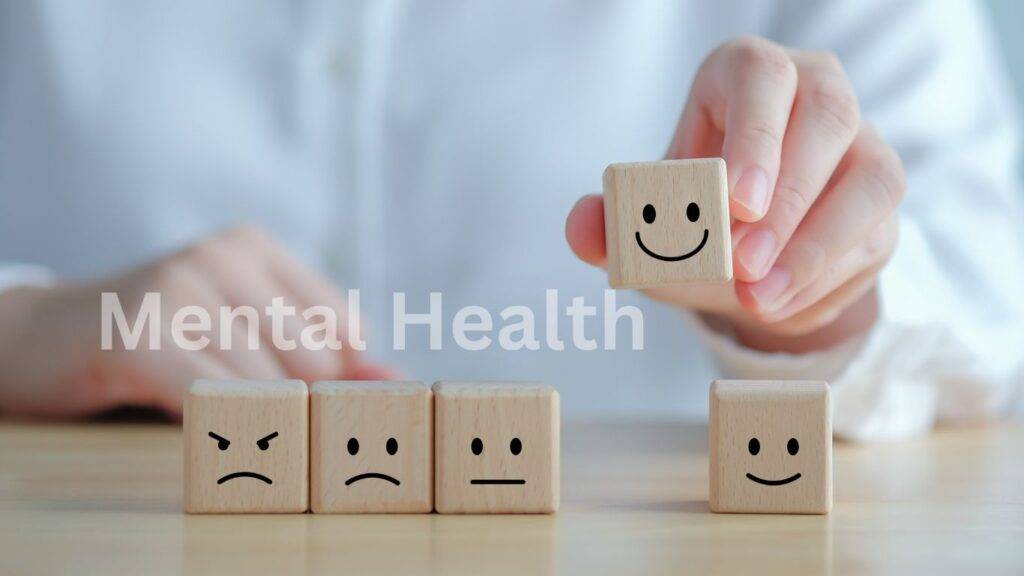
In the bustling state of New York, where dreams are pursued and life moves at a fast pace, it’s essential to prioritize mental health. Fortunately, the Empire State offers a wealth of resources and benefits to support individuals on their mental health journeys. This guide aims to shed light on the diverse array of mental health benefits available, unlocking the support needed for individuals facing various mental health challenges.
New York’s Commitment to Mental Health
Explore how New York has prioritized mental health initiatives, showcasing a commitment to the well-being of its residents. From statewide programs to community-based services, discover the comprehensive approach taken to support mental health.
Insurance Coverage for Mental Health Services
Delve into the details of mental health coverage under insurance plans in New York. Learn about the range of services covered, including therapy sessions, psychiatric consultations, and mental health medications.
Community Mental Health Centers
Uncover the vital role played by community mental health centers across the state. These centers offer accessible and affordable mental health services, providing counseling, therapy, and support for individuals and families.
Crisis Intervention Services
In times of crisis, quick and effective intervention is crucial. Explore the crisis intervention services available in New York, including helplines, mobile crisis teams, and emergency mental health support.
Employer-Based Mental Health Programs
Many employers in New York recognize the importance of mental health in the workplace. Learn about employer-based mental health programs, such as Employee Assistance Programs (EAPs), that provide confidential counseling and support services to employees.
School-Based Mental Health Services
Recognizing that mental health concerns often surface during formative years, New York invests in school-based mental health services. Discover how schools collaborate with mental health professionals to support students’ emotional well-being.
Statewide Advocacy and Support Organizations
Explore the role of advocacy and support organizations dedicated to mental health awareness and assistance. From raising awareness to providing resources, these organizations play a vital part in fostering a supportive environment.
Telehealth Services for Mental Health
In an age of digital connectivity, telehealth has become a powerful tool for mental health support. Learn about the availability and benefits of telehealth services for counseling and psychiatric consultations across New York.
Supportive Housing and Rehabilitation Programs
For individuals facing severe mental health challenges, supportive housing and rehabilitation programs offer a pathway to stability. Explore how these programs provide a holistic approach to recovery, addressing both housing and mental health needs.
Cultural Competency in Mental Health Services
New York’s diverse population requires a culturally competent approach to mental health services. Understand how mental health professionals in the state strive to provide inclusive and culturally sensitive care to meet the needs of all residents.
In the vibrant and dynamic state of New York, mental health benefits and support services are woven into the fabric of community well-being. By unlocking these resources, individuals can embark on a journey of healing and resilience, knowing that a network of support exists to help them navigate life’s challenges. New York stands committed to fostering mental health awareness and providing the necessary tools for individuals to unlock the support they need.
A Closer Look at Senior Well-being: Exploring Failure to Thrive

As we navigate the complexities of aging, it becomes paramount to delve into the various aspects of senior well-being. One concerning phenomenon that requires careful attention is “Failure to Thrive” in the elderly. In this blog, we’ll take a closer look at this multifaceted issue, understand its causes, recognize its signs, and explore avenues for intervention to ensure a higher quality of life for our aging loved ones.
Defining Failure to Thrive
Failure to Thrive (FTT) in the elderly refers to a decline in physical, psychological, or social well-being that goes beyond what can be attributed to normal aging. It is a complex issue encompassing various factors, and its manifestations can be subtle yet impactful.
Recognizing Signs and Symptoms:
Unexplained Weight Loss
One of the primary indicators of FTT is significant, unexplained weight loss. This can be a result of nutritional deficiencies, reduced appetite, or underlying health issues.
Physical Decline
A visible decline in physical abilities, such as reduced strength, mobility, and overall activity levels, may signal the presence of Failure to Thrive.
Social Withdrawal
FTT often manifests socially, with affected seniors experiencing withdrawal from social activities, hobbies, or interactions with friends and family.
Cognitive Impairment
Mental health is closely tied to overall well-being. Cognitive decline or signs of depression may accompany Failure to Thrive in the elderly.
Exploring Causes and Contributing Factors:
Medical Conditions
Underlying medical issues, such as chronic illnesses, infections, or neurological disorders, can significantly contribute to FTT.
Nutritional Challenges
Inadequate nutrition, whether due to difficulty eating, poor diet, or malabsorption issues, can play a pivotal role in the development of Failure to Thrive.
Psychological Factors
Mental health is intricately linked to physical well-being. Depression, anxiety, or cognitive decline can exacerbate FTT symptoms.
Social Isolation
Seniors who lack social connections or experience isolation may be more susceptible to Failure to Thrive. Social engagement is crucial for emotional and physical health.
Intervention and Support:
Comprehensive Health Assessment
The first step in addressing FTT involves a thorough health assessment. Identifying and treating underlying medical conditions is essential.
Nutritional Support
Nutrition plays a pivotal role in senior health. Tailored dietary plans and, if necessary, nutritional supplements can help address deficiencies.
Mental Health Interventions
Recognizing and addressing mental health issues, including depression and anxiety, is crucial for overall well-being. Counseling and therapy can be beneficial.
Social Engagement Programs
Combatting social isolation is key. Implementing programs that foster social connections and community engagement can significantly improve senior well-being.
Family and Caregiver Involvement
The support of family members and caregivers is paramount. Open communication and collaboration with healthcare professionals can create a holistic care plan.
In our exploration of Failure to Thrive in the Elderly, it’s evident that a multidimensional approach is essential. By understanding the signs, identifying contributing factors, and implementing targeted interventions, we can strive to enhance the well-being of our aging loved ones. As advocates for senior health, let us embrace a proactive stance, fostering an environment where seniors not only age but thrive in every aspect of their lives.
A Caregiver's Guide to Cultural Awareness
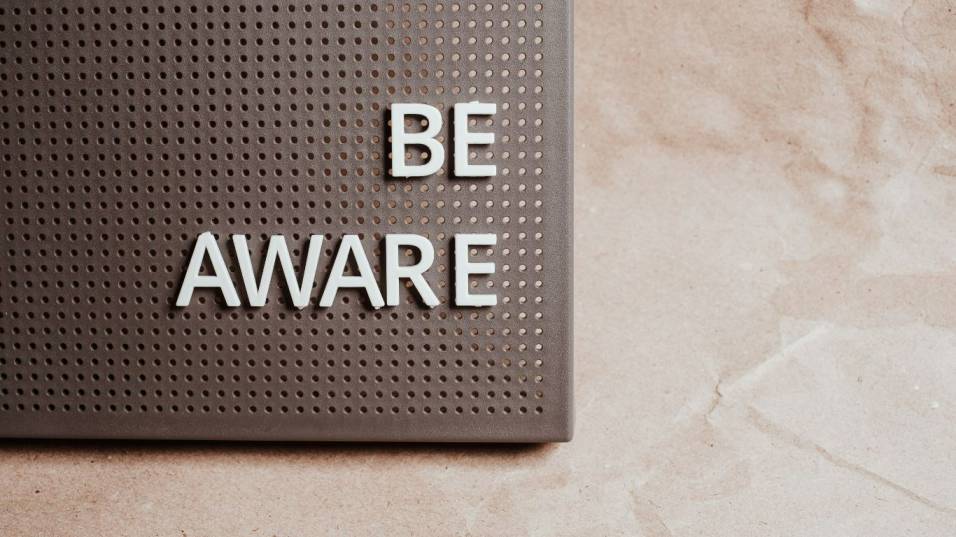
Providing care to individuals from diverse cultural backgrounds is a rewarding yet complex responsibility that caregivers often undertake. Cultural awareness is not just a buzzword; it is a crucial skill that enhances the quality of care and fosters meaningful connections between caregivers and those they serve. In this guide, we will explore the importance of cultural awareness for caregivers, and understand its impact on the caregiving journey.
The Significance of Cultural Awareness in Caregiving:
Respecting Individual Differences
Cultural awareness involves recognizing and respecting the unique values, beliefs, and practices that individuals from different cultural backgrounds may hold. This awareness is the cornerstone of building trust and rapport with care recipients.
Enhancing Communication
Effective communication is at the heart of caregiving. Cultural awareness enables caregivers to navigate linguistic nuances, non-verbal cues, and communication styles, ensuring that information is accurately conveyed and understood.
Tailoring Care Approaches
Different cultures may have distinct preferences regarding health practices, dietary habits, and lifestyle choices. Culturally aware caregivers can tailor their approaches to align with these preferences, promoting a more personalized and effective caregiving experience.
Addressing Spiritual and Religious Needs
Cultural awareness extends to understanding and accommodating spiritual and religious practices. Caregivers who are attuned to these aspects can provide support that respects and aligns with the care recipient’s faith and beliefs.
Practical Strategies for Culturally Aware Caregiving:
Continuous Learning
Stay informed and engaged in ongoing learning about different cultures. This can involve reading, attending cultural competency training, and seeking guidance from community resources.
Active Listening
Listening attentively and without judgment is a foundational aspect of cultural awareness. Allow care recipients to share their values and preferences, creating a space for open dialogue.
Flexibility and Adaptability
Culturally aware caregivers embrace flexibility and adaptability. Being open to adjusting care routines and approaches based on individual needs fosters a supportive and respectful environment.
Building a Supportive Network
Connect with community resources, support groups, and cultural organizations. This network can provide valuable insights and assistance in navigating cultural nuances.
Overcoming Challenges in Culturally Aware Caregiving:
Overcoming Stereotypes
Challenge and overcome preconceived notions and stereotypes. Culturally aware caregivers approach each individual as unique, recognizing that cultural background is just one aspect of their identity.
Language Barriers
Address language barriers by utilizing translation services or language-appropriate resources. Effective communication is foundational to quality care, and overcoming language obstacles is key.
In the dynamic landscape of caregiving, cultural awareness emerges as a guiding light, illuminating the path toward compassionate and person-centered care. By embracing diversity, actively seeking to understand different cultural perspectives, and incorporating cultural awareness into daily caregiving practices, caregivers can create a positive and inclusive environment. Ultimately, a caregiver’s guide to cultural awareness is not just a professional skill—it is a testament to the universal values of respect, and empathy, and the profound impact of compassionate care across all cultural boundaries.
Find Your Calling: Meaningful Volunteer Roles Await in Rochester, NY
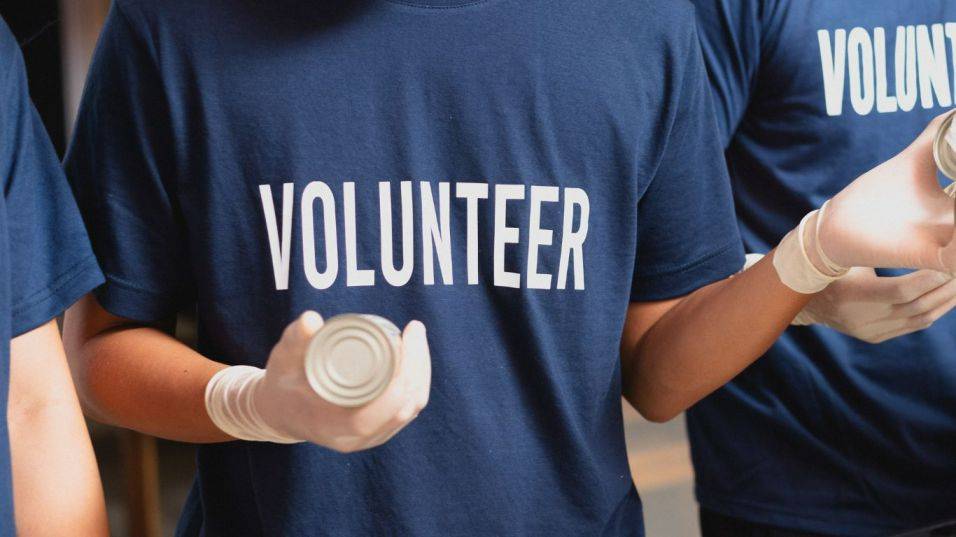
Rochester, New York, with its rich history and vibrant community spirit, opens its arms wide to those seeking to make a positive impact through volunteering. Whether you’re a local resident or a newcomer to the Flower City, numerous opportunities await you to find your calling and contribute to the well-being of the community. In this blog, we’ll explore the diverse and meaningful volunteer roles that Rochester has to offer.
Unveiling Rochester’s Volunteer Landscape:
Community Outreach Programs
Dive into community outreach initiatives that address the diverse needs of Rochester’s residents. From food drives to educational programs, these roles allow volunteers to directly impact the lives of individuals and families.
Supporting Local Schools
Education is the cornerstone of a thriving community. Explore volunteer opportunities within local schools, where you can assist teachers, mentor students, or contribute to after-school programs.
Environmental Conservation Projects
Rochester boasts scenic parks and natural spaces that require stewardship. Get involved in environmental conservation projects, whether it’s tree planting, trail maintenance, or participating in clean-up efforts.
Healthcare and Wellness Initiatives
Contribute to the well-being of Rochester’s residents by volunteering in healthcare settings or wellness programs. This could involve assisting at local clinics, participating in health awareness campaigns, or supporting initiatives that promote overall community health.
Top 10 Opportunities for Volunteering:
Rochester, NY, is a vibrant city with a strong sense of community, and there are countless ways to get involved and make a difference. Whether you’re passionate about helping animals, supporting youth, or protecting the environment, there’s a volunteer opportunity out there for you. Here are 10 of the top options, based on real data and impact.
Rochester Area Foodbanks
Information: Serves over 50,000 people annually through a network of 150+ agencies.
Impact: Fight hunger and food insecurity in our community.
Volunteer Roles: Food sorting and distribution, fundraising, administrative support.
Habitat for Humanity Rochester
Information: Built or renovated over 375 homes since 1987.
Impact: Provide affordable housing and stability for families in need.
Volunteer Roles: Construction, administrative support, fundraising, advocacy.
The Golisano Children’s Hospital
Information: Treats over 100,000 children annually from across the region.
Impact: Bring joy and comfort to hospitalized children and their families.
Volunteer Roles: Playroom assistant, arts and crafts helper, patient transport, administrative support.
Rochester Animal Services
Information: Cares for over 10,000 animals annually.
Impact: Give homeless animals a second chance at finding loving homes.
Volunteer Roles: Dog walking, cat socialization, animal care, adoption counseling.
Lifespan of Greater Rochester
Information: Provides home care and supportive services to over 8,000 seniors annually.
Impact: Help seniors stay independent and connected to their community.
Volunteer Roles: Friendly visiting, companionship, transportation assistance, administrative support.
Genesee Valley Land Trust
Information: Protects over 30,000 acres of land in the Finger Lakes region.
Impact: Conserve our natural environment for future generations.
Volunteer Roles: Trail maintenance, habitat restoration, environmental education, fundraising.
Ronald McDonald House Rochester
Information: Provides a home away from home for families with critically ill children receiving treatment at local hospitals.
Impact: Offer support and comfort to families during a difficult time.
Volunteer Roles: Meal preparation and service, housekeeping, administrative support, fundraising.
Open Door Mission
Information: Serves over 350,000 meals annually to those experiencing homelessness and hunger.
Impact: Provide basic needs and support to individuals and families in crisis.
Volunteer Roles: Meal preparation and service, clothing distribution, shelter support, fundraising.
Literacy Volunteers of Rochester
Information: Helps adults and children improve their reading and writing skills.
Impact: Empower individuals to reach their full potential through education.
Volunteer Roles: One-on-one tutoring, group literacy programs, materials development, administrative support.
Volunteers of America
Information: Provides a wide range of services to children, families, and veterans in need, including housing, childcare, and addiction treatment.
Impact: Make a positive difference in the lives of people facing challenges. Volunteer Roles: Vary depending on the program, but may include mentoring, childcare assistance, administrative support, and fundraising.
These are just a few of the many amazing volunteer opportunities available in Rochester. By giving your time and talent to a cause you care about, you can make a real difference in your community. Consider your skills and interests when choosing a volunteer opportunity.
Exploring Inner Reflection: A Comparative Analysis of Meditation and Prayer for Senior

As individuals gracefully navigate the golden years, the importance of inner reflection and spiritual well-being becomes increasingly profound. Two practices that stand out in providing a path to inner peace are meditation and prayer. In this blog, we embark on a journey to explore these contemplative practices, delving into their unique qualities and benefits for seniors.
The Essence of Meditation:
Mindful Presence
Meditation, often associated with mindfulness, encourages seniors to be present in the moment. Through breath awareness and focused attention, individuals can cultivate a sense of calm and clarity.
Stress Reduction
The practice of meditation has been linked to stress reduction. Seniors can find solace in meditation techniques that promote relaxation, potentially easing the mental and physical strains of daily life.
Cognitive Benefits
Numerous studies suggest that meditation may have cognitive benefits, including improved focus and memory retention. For seniors, engaging in regular meditation can contribute to maintaining mental sharpness.
The Power of Prayer:
Spiritual Connection
Prayer, rooted in various religious traditions, offers seniors a way to connect with their spiritual beliefs. It provides a channel for expressing gratitude, seeking guidance, and finding strength in a higher power.
Community and Support
For seniors involved in religious communities, prayer serves as a unifying force. Group prayers and communal rituals foster a sense of belonging and support, creating valuable social connections.
Emotional Healing
Prayer is often considered a source of emotional healing. Seniors may find comfort and solace in moments of personal or health-related challenges through the practice of prayer.
Tailoring Practices to Senior Needs:
Adaptable Meditation Techniques
Recognizing that physical comfort is paramount for seniors, meditation can be adapted to suit their needs. Seated or lying down meditation, gentle movement practices like tai chi, and guided imagery can offer accessible options.
Personalized Prayer Routines
Seniors can tailor prayer practices to align with their beliefs and values. Whether it’s traditional prayers, personal reflections, or the use of prayer beads, customization ensures a meaningful spiritual experience.
The Harmony of Meditation and Prayer:
Complementary Practices
While distinct, meditation and prayer are not mutually exclusive. Many individuals find harmony in combining elements of both practices, creating a holistic approach to inner reflection.
Wellness Benefits
Studies suggest that combining meditation and prayer may enhance overall well-being. Seniors can explore a fusion of these practices, enjoying the mental, emotional, and spiritual benefits that arise from the synergy.
Getting Started A Personal Journey:
Exploring Personal Preferences
Seniors are encouraged to explore both meditation and prayer to discover what resonates most with their inner selves. Trying different techniques allows for a personalized and enriching experience.
Seeking Guidance
Whether through community resources, religious leaders, or mindfulness programs tailored for seniors, seeking guidance can provide valuable insights into incorporating meditation and prayer into daily life.
In the tapestry of senior well-being, the threads of meditation and prayer weave a path to inner reflection, tranquility, and spiritual connection. Whether seniors find solace in the mindful stillness of meditation or the comforting embrace of prayer, both practices offer unique avenues for fostering a deep sense of peace and fulfillment in the golden years. It’s not a choice between one or the other; rather, it’s an exploration of the harmonious balance that each individual can discover on their journey of inner reflection.
Easy Dressing Solutions: Velcro Apparel Tailored for the Elderly

As we age, the simplicity and ease of daily tasks become increasingly significant. For many seniors, dressing independently can present challenges due to factors like reduced dexterity or limited mobility. Enter Velcro apparel, a practical and innovative solution designed to make dressing not just easy but also stylish for the elderly. In this blog, we’ll explore the benefits and convenience of Velcro clothing tailored specifically for the senior demographic.
Understanding the Challenges:
Reduced Dexterity: Aging often brings a decline in fine motor skills, making tasks like buttoning and zipping more challenging.
Limited Mobility: Seniors with arthritis or joint issues may experience difficulty in reaching or maneuvering traditional clothing fastenings.
Independence and Confidence: Preserving independence is vital for senior well-being. Clothing that is easy to put on and take off contributes to a sense of autonomy and confidence.
The Practical Appeal of Velcro Apparel:
Effortless Fastening: Velcro closures eliminate the need for intricate buttons or zippers. Fastening and unfastening become as simple as a gentle touch, offering seniors an effortless dressing experience.
Adaptive Design: Velcro apparel is thoughtfully designed with seniors in mind. Adaptive features such as wide openings and strategically placed Velcro strips accommodate varying levels of mobility.
Stylish Options: Far from compromising on style, Velcro clothing is available in a wide array of designs and fabrics. Seniors can enjoy both comfort and fashion without sacrificing one for the other.
Practical Applications in Velcro Apparel:
Velcro Shoes and Footwear: Shoes with Velcro closures eliminate the need for bending or intricate laces, providing a convenient solution for seniors with limited flexibility.
Velcro Shirts and Blouses: Adaptive shirts and blouses with Velcro closures offer ease of dressing without compromising on style. Seniors can effortlessly don these garments without struggling with buttons.
Velcro Pants and Trousers: Velcro-fastened pants and trousers provide a comfortable and adjustable fit. The simplicity of Velcro closures makes dressing and undressing a hassle-free task.
The Impact on Daily Living:
Promoting Independence: Velcro apparel empowers seniors to dress independently, fostering a sense of self-reliance and preserving their autonomy.
Enhancing Quality of Life: The ease of Velcro closures contributes to a smoother morning routine, reducing stress and promoting a positive start to the day.
Adaptive Fashion for All Occasions: Velcro clothing options extend to various styles suitable for casual wear, formal occasions, and even sportswear, ensuring seniors are well-equipped for any event.
Where to Find Velcro Apparel:
Specialized Clothing Retailers: Many retailers specialize in adaptive clothing for seniors, offering a range of Velcro options to suit different preferences and styles.
Online Marketplaces: Explore online platforms that cater to adaptive and senior-friendly clothing. These platforms often provide a diverse selection with the convenience of online shopping.
Easy dressing solutions are more than just a matter of convenience; they are a key component in promoting the well-being and independence of seniors. Velcro apparel, with its practical design and adaptive features, is a game-changer for the elderly, allowing them to navigate their daily routines with comfort and style. As we embrace innovations that enhance the lives of seniors, Velcro clothing stands out as a simple yet transformative solution, making dressing a breeze for our beloved older adults.
Empowering Caregivers: Key Skills for Compassionate Support

Caregiving is a noble and demanding role that requires a unique set of skills to provide compassionate and effective support. Caregivers play a crucial role in enhancing the quality of life for those in need, and mastering specific skills is essential for navigating the challenges that come with this responsibility. In this blog, we’ll explore key skills that empower caregivers to provide compassionate and impactful support to their care recipients.
Empathy and Compassion
Empathy forms the foundation of caregiving. Understanding and sharing the feelings of those in your care fosters trust and connection. Compassion, expressed through kindness and genuine concern, creates a supportive environment that promotes emotional well-being.
Effective Communication
Clear and open communication is vital in caregiving. Caregivers must be adept at listening actively, expressing thoughts clearly, and understanding non-verbal cues. Effective communication ensures that the needs and preferences of the care recipient are fully understood and met.
Patience and Flexibility
Caregiving often involves unpredictability and challenges. Patience and flexibility allow caregivers to navigate changing circumstances, adapt to the evolving needs of their care recipients, and approach each situation with a calm and composed demeanor.
Time Management
Caregivers juggle various responsibilities, from medical appointments to daily tasks. Effective time management ensures that all aspects of care are addressed without compromising the well-being of the caregiver or the care recipient.
Problem-Solving Skills
Caregivers encounter a variety of issues, from health concerns to logistical challenges. Developing problem-solving skills equips caregivers to address issues proactively, seek solutions, and make informed decisions that enhance the overall care experience.
Self-Care Practices
Caring for oneself is integral to providing quality care to others. Caregivers must prioritize their physical and mental well-being, practicing self-care routines that include adequate rest, nutrition, and activities that bring joy and relaxation.
Medical Knowledge
Depending on the level of care required, caregivers may need to acquire basic medical knowledge. Understanding medications, medical conditions, and potential complications empowers caregivers to provide informed and effective support.
Advocacy Skills
Being an advocate for the care recipient ensures that their needs are met in various settings, such as medical appointments or community interactions. Advocacy involves speaking up, asking questions, and ensuring that the care recipient’s voice is heard and respected.
Cultural Competency
Every individual is unique, and cultural competency is crucial in caregiving. Understanding and respecting cultural differences ensures that care is delivered in a way that is sensitive to the values and beliefs of the care recipient.
Continuous Learning
The field of caregiving is dynamic, with new information and techniques emerging regularly. Caregivers who embrace continuous learning stay informed about best practices, new technologies, and evolving approaches to care.
Empowering caregivers with these key skills not only enhances their ability to provide compassionate support but also enriches the overall caregiving experience. As caregivers cultivate these skills, they become not just providers of care but invaluable partners in the well-being and quality of life of those they serve. By recognizing the importance of these skills, we honor the dedication and commitment of caregivers and contribute to the creation of a more compassionate and supportive caregiving community.
Indoor Fun: Discover the Top 10 Seated Games for Elderly Enjoyment

Indoor activities take on a special significance for seniors, offering both entertainment and mental stimulation. When it comes to seated games, the options are diverse and cater to a wide range of preferences. In this blog, we’ll delve into the world of indoor fun and unveil the top 10 seated games tailored for the enjoyment of our beloved elderly community.
Card Games
Classic card games like Bridge, Rummy, or Solitaire are timeless favorites. They not only provide entertainment but also stimulate cognitive functions, making them an ideal choice for seniors.
Bingo
Bingo brings an element of excitement and friendly competition. Seniors can enjoy this game in a seated position, relishing the thrill of marking numbers and shouting “Bingo!” in the comfort of their chairs.
Board Games
Selecting board games with large, easy-to-handle pieces ensures seniors can participate comfortably. Games like Scrabble, Chess, or Checkers provide hours of strategic enjoyment.
Trivia Quizzes
Engage the mind with trivia quizzes covering a range of topics. This seated activity sparks reminiscence and encourages friendly competition among seniors.
Puzzle Time
Whether it’s crossword puzzles, Sudoku, or jigsaw puzzles, these seated games challenge the mind and offer a relaxing and enjoyable pastime.
Dice Games
Simple dice games like Yahtzee or Farkle are excellent choices for seated play. These games combine luck and strategy for a delightful gaming experience.
Memory Card Games
Games that stimulate memory, such as Memory or Concentration, provide mental exercise and entertainment. The simplicity of matching pairs can be enjoyed by seniors of all cognitive abilities.
Chair Yoga
For a blend of relaxation and gentle exercise, chair yoga is an excellent seated option. Guided sessions promote flexibility, balance, and overall well-being.
Virtual Games
Explore the world of virtual gaming with options designed for seniors. From digital card games to interactive puzzles, these seated activities offer a modern twist to traditional games.
Musical Bingo
Combine the joy of music with the excitement of Bingo. Musical Bingo replaces traditional numbers with song titles or snippets, adding a melodic twist to the classic game.
Tips for Enhanced Enjoyment:
Create a Social Setting
Encourage group play to enhance the social aspect of seated games. Shared laughter and camaraderie make the experience even more enjoyable.
Adapt Games to Abilities
Tailor games to accommodate varying abilities. Choose games that match cognitive and physical capabilities to ensure everyone can participate and have fun.
Incorporate Prizes
Introduce a lighthearted competitive element by including small prizes for winners. Recognition and rewards add an extra layer of enjoyment to the games.
Seated games offer a wealth of entertainment for seniors, fostering mental engagement and creating joyful moments. Whether it’s a quiet afternoon alone or a lively gathering with friends, these top 10 seated games are designed to bring smiles, laughter, and a sense of accomplishment to the elderly community. By exploring these indoor pastimes, we not only provide enjoyable activities but also contribute to the overall well-being and happiness of our cherished seniors.
Optimizing Health Coverage: Navigating Medicaid Services in Syracuse

In the heart of Central New York, Syracuse stands as a vibrant city with a rich history and a diverse population. Amidst the bustling lifestyle and cultural richness, it’s crucial for residents to have access to reliable healthcare services. This blog explores the world of Medicaid services in Syracuse, shedding light on how individuals can optimize their health coverage for a better, healthier life.
Understanding Medicaid
Medicaid, a joint federal and state program, plays a pivotal role in providing health coverage for individuals and families with limited income. It aims to ensure that everyone, regardless of their financial situation, has access to essential healthcare services. In Syracuse, the Medicaid program takes center stage, offering a range of benefits that go beyond traditional health insurance.
Key Features of Medicaid Services in Syracuse:
Comprehensive Healthcare Coverage
Medicaid in Syracuse extends coverage for a broad spectrum of healthcare services, including doctor visits, hospital stays, prescription medications, preventive care, and more. This comprehensive approach ensures that individuals can address both immediate health concerns and long-term wellness needs.
Specialized Programs for Unique Needs
Syracuse’s Medicaid services recognize the diverse healthcare needs of its population. Specialized programs cater to specific groups such as pregnant women, children, individuals with disabilities, and the elderly. This targeted approach ensures that every demographic receives the care they require.
Community Health Initiatives
Beyond conventional medical care, Syracuse’s Medicaid services actively engage in community health initiatives. These programs focus on preventive measures, health education, and outreach to promote a healthier lifestyle among residents.
Easy Enrollment and Accessibility
Navigating the Medicaid system in Syracuse is designed to be user-friendly. Residents can easily enroll online, by phone, or in person at designated locations. The goal is to make health coverage accessible to those who need it most, eliminating barriers to enrollment.
Collaboration with Local Healthcare Providers
Syracuse’s Medicaid services work hand-in-hand with local healthcare providers to ensure a seamless healthcare experience. This collaborative effort facilitates timely and quality medical care for Medicaid beneficiaries.
The Impact on Individual Lives
Real stories from Syracuse residents highlight the positive impact of optimized health coverage through Medicaid services. From routine check-ups to critical medical interventions, Medicaid has become a lifeline for many, ensuring that health concerns don’t become financial burdens.
In Syracuse, optimizing health coverage through Medicaid services is not just about accessing medical care; it’s about fostering a healthier and more resilient community. By embracing the comprehensive and inclusive approach of Medicaid, residents can enjoy the peace of mind that comes with knowing that their health needs are covered. As Syracuse continues to thrive, so too will the individuals and families who benefit from the city’s commitment to accessible and quality healthcare.
Unlock Deep Relaxation: Your Guide to the Perfect Massage
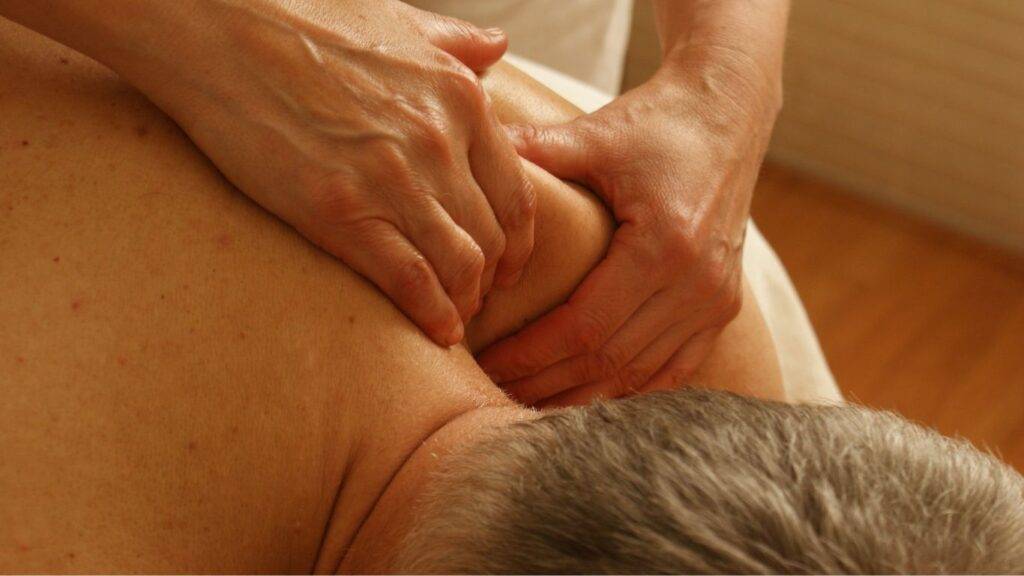
In the midst of our fast-paced lives, finding moments of tranquility is essential for overall well-being. One surefire way to achieve deep relaxation is through the transformative power of a well-executed massage. This blog serves as your guide to unlocking profound relaxation through the perfect massage experience.
The Essence of a Perfect Massage
A perfect massage is not just about skilled hands on your body; it’s a holistic experience that engages all your senses. From the soothing ambiance to the skillful techniques employed, every element contributes to the overall sense of relaxation.
Setting the Scene
The environment plays a crucial role in the effectiveness of a massage. Whether at a spa or in the comfort of your own home, create a tranquil atmosphere with soft lighting, calming scents, and gentle background music. These elements set the stage for a truly immersive experience.
Choosing the Right Masseuse
A skilled masseuse is the linchpin of a perfect massage. Look for professionals with expertise in various techniques, and consider your specific needs—whether it’s relieving tension, promoting flexibility, or simply unwinding after a stressful day. Communication with your masseuse ensures a personalized experience.
Tailoring Techniques to Your Needs
Every individual has unique preferences and areas of tension. The perfect massage is customized to address your specific concerns. Whether it’s a deep tissue massage to release muscle knots or a Swedish massage for overall relaxation, the right techniques enhance the therapeutic benefits.
Mindful Breathing and Relaxation
Deep relaxation involves more than just physical touch. A perfect massage incorporates mindful breathing techniques, promoting a sense of calm and mental clarity. This synchronization of breath and touch elevates the massage experience, inducing a profound state of relaxation.
Post-Massage Self-Care
The benefits of a perfect massage extend beyond the session itself. Engage in post-massage self-care, such as hydrating with water, taking a warm bath, or practicing gentle stretching. These activities prolong the sense of relaxation and contribute to overall well-being.
Realizing the Benefits
A perfect massage goes beyond the immediate pleasure of relaxation; it offers a myriad of health benefits. From improved circulation and flexibility to reduced stress and enhanced mood, the positive effects resonate long after the massage ends.
In the quest for deep relaxation, the perfect massage emerges as a powerful ally. By paying attention to the details—choosing the right environment, masseuse, and techniques—you can unlock a state of profound relaxation that nurtures both body and mind. Embrace the journey toward tranquility, and let the perfect massage be your gateway to a more relaxed and rejuvenated self.
Vibrant Living for Seniors: Exploring Buffalo's Senior Centers
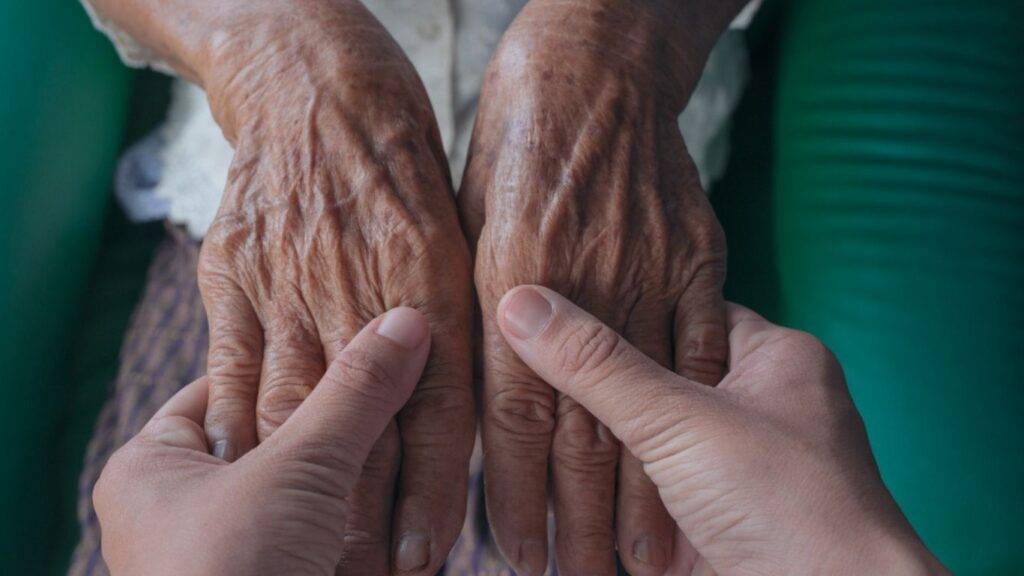
Buffalo, a city known for its rich history and welcoming community, is home to a treasure trove of resources for seniors seeking vibrant and fulfilling lifestyles. In this blog, we embark on a journey to explore the senior centers that contribute to the well-being and vibrancy of Buffalo’s older residents.
The Essence of Buffalo’s Senior Centers:
Community Connection
Senior centers in Buffalo serve as hubs of connection, where individuals come together to share experiences, build friendships, and foster a sense of belonging. These centers understand the importance of social engagement in promoting a vibrant and fulfilling life.
Holistic Wellness Programs
From fitness classes tailored to seniors’ needs to wellness workshops and nutrition programs, Buffalo’s senior centers prioritize holistic well-being. These centers recognize that vibrant living encompasses physical, mental, and emotional health.
Cultural and Recreational Activities
Buffalo’s senior centers offer a diverse range of cultural and recreational activities, catering to varied interests. Whether it’s art classes, book clubs, or group outings to local attractions, seniors have ample opportunities to explore new hobbies and enjoy their favorite pastimes.
Educational Opportunities
Lifelong learning is a cornerstone of vibrant living. Buffalo’s senior centers provide educational programs and workshops that empower seniors to acquire new skills, explore topics of interest, and stay intellectually stimulated.
Volunteerism and Civic Engagement
Contributing to the community is a fulfilling aspect of vibrant senior living. Many centers in Buffalo actively encourage volunteerism and civic engagement, allowing seniors to share their wisdom and skills with the broader community.
Spotlight on Buffalo’s Senior Centers:
Maple Grove Senior Living Center
Nestled in the heart of Buffalo, Maple Grove offers a range of activities from fitness classes to cultural events, creating a dynamic space for seniors to thrive.
Harborview Heights Senior Center
Overlooking the scenic waterfront, Harborview Heights provides a serene setting for seniors to engage in wellness programs, and social activities, and enjoy the beauty of Buffalo’s surroundings.
Sunshine Senior Activity Center
A beacon of warmth and camaraderie, Sunshine Senior Activity Center focuses on fostering connections through daily activities, ensuring that seniors in Buffalo feel supported and valued.
Buffalo’s senior centers stand as pillars of vibrant living, providing a supportive environment where seniors can lead fulfilling lives. From fostering social connections to promoting holistic wellness and lifelong learning, these centers exemplify the city’s commitment to ensuring that every senior enjoys their golden years with vitality and joy. As we explore these centers, may we be inspired by the spirit of community and vibrancy that defines senior living in Buffalo.
Securing Long-Term Care: A Guide to Accessing CFEEC Services
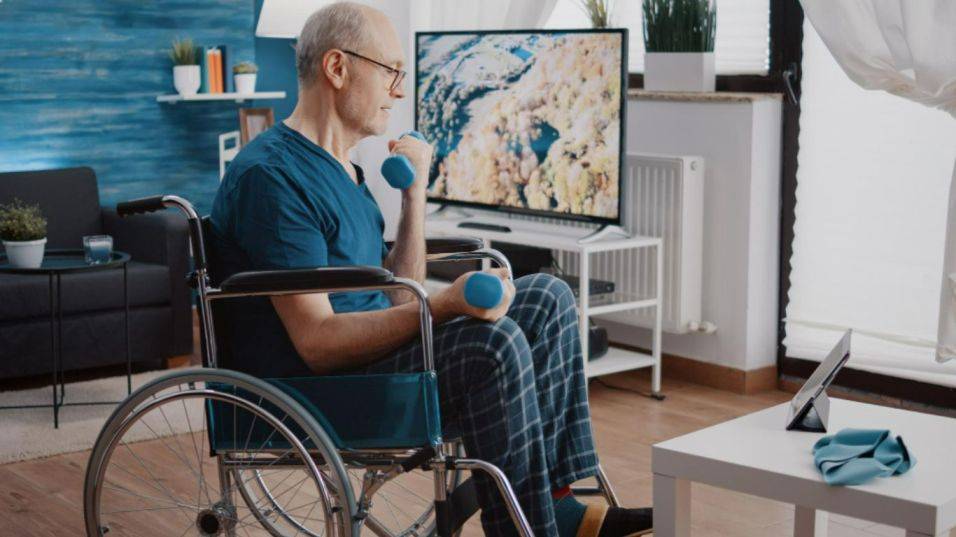
Planning for long-term care can feel overwhelming, especially in New York with its complex system. But fret not, New Yorkers! The Conflict-Free Evaluation and Enrollment Center (CFEEC) is here to help streamline the process and ensure you receive the care you need. Here’s your guide to accessing and navigating CFEEC services:
About CFEEC
Think of the CFEEC as your one-stop shop for accessing community-based long-term care (CBLTC) services in New York. Launched in 2014, it’s an independent, unbiased entity that provides:
- Eligibility assessments: A registered nurse visits you at home (or in a hospital/nursing home) to assess your functional needs and determine your eligibility for Medicaid-funded CBLTC services.
- Education and guidance: CFEEC counselors explain your options and help you compare different Managed Long Term Care (MLTC) plans.
- Enrollment assistance: Once you choose a plan, the CFEEC helps you enroll seamlessly.
Who is eligible for CFEEC services?
If you’re a New York resident and need CBLTC services for more than 120 days, you’re eligible for a CFEEC evaluation. This includes assistance with daily living activities like bathing, dressing, and meal preparation.
What to expect during the CFEEC evaluation:
- A registered nurse will visit you at your preferred location.
- They will ask questions about your medical history, functional abilities, and needs.
- The assessment typically takes 1-2 hours.
- You’ll receive a written report summarizing your eligibility and plan options.
Benefits of using CFEEC:
Unbiased Expertise in Your Corner
Imagine navigating a car dealership without a trusted mechanic by your side. That’s what choosing an MLTC plan can feel like. But with the CFEEC, you get an independent guide, free from any affiliations with specific plans. They objectively assess your needs, explain your options, and help you compare apples to apples, not apples to spaceships. No upselling, just honest, informed guidance.
Streamlined Process, Unknotted Nerves
Remember staring at mountains of paperwork just to get a library card? Forget the Antrags and Antragsformeln of long-term care enrollment. The CFEEC takes the reins, handling the logistics and paperwork jungle. They do the heavy lifting, allowing you to focus on what matters most – your health and well-being.
Knowledge is Power, Peace of Mind is Priceless
The CFEEC is your encyclopedia of long-term care in New York. They answer your questions, clear your doubts, and empower you to make informed decisions about your care. No more second-guessing or late-night internet spirals. Knowing you’re on the right track with the CFEEC by your side brings a priceless sense of calm and clarity.
No Wrong Doors, Just Open Paths to Care
Imagine knocking on the wrong door after a long, tiring journey. With the CFEEC, you avoid such dead ends. They assess your needs with a thorough home visit, ensuring you’re referred to the most appropriate MLTC plans. It’s like having a GPS for your care journey, directing you straight to the best fit.
Your Advocate, Your Champion
The CFEEC is more than just a guide; they’re your advocate. They ensure your voice is heard and your needs are met throughout the process. They fight for your rights and navigate any bumps in the road, leaving you free to focus on your recovery and well-being.
Unlocking Financial Independence: 5 Creative Ways for Earning While Enrolled in CDPAP

Enrolling in the Consumer Directed Personal Assistance Program (CDPAP) is a powerful choice for individuals seeking to provide care for their loved ones. However, the desire for financial independence often goes hand in hand with caregiving responsibilities. In this blog, we explore five creative ways for individuals enrolled in CDPAP to unlock financial independence while fulfilling their caregiving commitments.
Freelancing and Remote Work
Leverage the flexibility of freelance opportunities and remote work to create a schedule that aligns with your caregiving responsibilities. Whether it’s writing, graphic design, consulting, or other skill-based work, the gig economy offers diverse opportunities to earn from the comfort of your home.
Online Business Ventures
Consider starting an online business that aligns with your passions and skills. From e-commerce to content creation, the internet provides a platform for entrepreneurs to turn their hobbies or expertise into profitable ventures. This allows you to set your own hours and work at your own pace.
Caregiver Support Groups and Consulting
Share your experiences and insights by establishing caregiver support groups or offering consulting services. Many individuals navigating the challenges of caregiving seek guidance, and your expertise can be a valuable resource. This not only helps others but also opens up a potential income stream for yourself.
Monetizing Hobbies and Skills
Identify your hobbies and skills that have market potential. Whether it’s crafting, photography, or teaching, turning your passions into income-generating activities can provide a fulfilling way to earn while caring for your loved ones.
Content Creation and Blogging
Share your caregiving journey through content creation or blogging. Many people are eager to learn from real-life experiences, and platforms like blogs, YouTube, or social media offer avenues to monetize your content. Sponsored posts, affiliate marketing, and collaborations can turn your story into a source of income.
Realizing Financial Independence
Balancing caregiving responsibilities with the desire for financial independence requires creativity and resourcefulness. By exploring these five creative ways to earn while enrolled in CDPAP, you not only empower yourself but also contribute to your financial well-being.
Enrolling in CDPAP is a commitment to providing compassionate care for your loved ones, and it doesn’t mean you have to sacrifice your financial independence. By thinking creatively and exploring diverse opportunities, you can unlock a path to financial freedom while fulfilling your role as a caregiver. Embrace the journey of caregiving and financial empowerment, discovering that these two aspects of life can harmoniously coexist.
Empathetic Support: A Guide to Nurturing a Parent with Alzheimer's

Caring for a parent with Alzheimer’s disease is a journey that demands patience, understanding, and above all, empathy. As their cognitive abilities change, so do the dynamics of your relationship. In this blog, we delve into the essential elements of empathetic support, offering a comprehensive guide to nurturing a parent through the challenges presented by Alzheimer’s disease.
Understanding Alzheimer’s:
What is it?
Alzheimer’s disease is a progressive neurological disorder that affects the brain, leading to a decline in memory, cognitive function, and the ability to perform daily activities. It is the most common cause of dementia, a term that encompasses a range of symptoms associated with a decline in memory or other thinking skills severe enough to reduce a person’s ability to perform everyday activities.
Educate Yourself
Begin by educating yourself about Alzheimer’s disease. Understanding the progression, symptoms, and challenges will empower you to provide more informed and compassionate care. Knowledge is a key foundation for offering effective support.
Communication Strategies
Alzheimer’s can impact verbal and cognitive abilities. Adopt clear and simple communication strategies, such as using short sentences, maintaining eye contact, and employing a calm and reassuring tone. Non-verbal cues, like gestures and facial expressions, become increasingly important.
Create a Calming Environment
Design a living space that is soothing and minimizes confusion. Reduce noise, avoid clutter, and maintain a consistent routine. A calm environment contributes to a sense of security for your parent.
Empathetic Support in Action:
Practice Active Listening
Cultivate the skill of active listening. Allow your parent to express themselves without interruption, even if their words may be repetitive or fragmented. Validate their feelings and offer reassurance.
Engage in Meaningful Activities
Tailor activities to your parent’s current abilities and interests. Whether it’s listening to music, looking through photo albums, or participating in gentle exercises, engaging in familiar and enjoyable activities fosters a sense of connection.
Foster Independence
Encourage your parent to participate in daily tasks to the best of their ability. This fosters a sense of purpose and maintains a level of independence. Be patient and offer guidance as needed.
Build a Support Network
Nurturing a parent with Alzheimer’s is a shared responsibility. Build a support network of family, friends, and professionals who can provide assistance, understanding, and respite when needed.
Self-Care for the Caregiver:
Prioritize Your Well-being
Caring for a parent with Alzheimer’s is emotionally demanding. Acknowledge your own needs and prioritize self-care. Whether it’s seeking support from friends or engaging in activities that bring you joy, maintaining your well-being is crucial.
Seek Professional Assistance
Enlist the help of healthcare professionals, support groups, or therapists specializing in Alzheimer’s care. These resources can provide valuable insights, coping strategies, and emotional support for both you and your parent.
Nurturing a parent with Alzheimer’s requires an abundance of empathy and a commitment to providing the support they need. By educating yourself, implementing effective communication strategies, and creating a compassionate and understanding environment, you can navigate the challenges of Alzheimer’s with grace. Remember that seeking support, both for your parent and for yourself, is an essential component of the caregiving journey. In this empathetic approach, you not only provide care but also create moments of connection and comfort for your parent, fostering a sense of security and love amidst the challenges of Alzheimer’s disease.
Why Self-Care is Essential for Caregivers

Caregivers are the unsung heroes who dedicate their lives to supporting and uplifting others in times of need. While their compassion and selflessness are commendable, it’s crucial to acknowledge the paramount importance of self-care in the lives of those who provide care. In this article, we delve into the reasons why self-care is not just a luxury but an absolute necessity for caregivers.
The Silent Struggle: Understanding the Weight of Caregiver Responsibilities
Caregivers often find themselves immersed in a demanding routine, tending to the needs of others with unwavering dedication. The constant demands can take a toll, leading to stress, exhaustion, and emotional fatigue. Recognizing and addressing this silent struggle is the first step in understanding why self-care is an essential lifeline for caregivers.
Recharging the Emotional Reservoir: Preventing Burnout
Caregiver burnout is a pervasive challenge that arises from the emotional and physical exhaustion of constantly putting others’ needs before one’s own. Self-care acts as a powerful preventive measure, allowing caregivers to recharge their emotional reservoirs. Taking the time to nurture their well-being ensures they can continue to provide compassionate care without sacrificing their own mental and emotional health.
Honoring the Self: Rediscovering Identity Beyond the Caregiver Role
It’s easy for caregivers to become so deeply entrenched in their roles that they lose sight of their own identity. Self-care provides a pathway for caregivers to reconnect with their personal interests, passions, and desires. By honoring the self, caregivers not only find joy in their own lives but also bring renewed enthusiasm and authenticity to their caregiving responsibilities.
Strength in Vulnerability: Normalizing Self-Care Practices
In a society that often celebrates selflessness to the point of neglecting personal well-being, caregivers may feel guilty for prioritizing self-care. Normalizing self-care practices is essential in breaking down these barriers. By acknowledging that self-care is not selfish but a means of sustaining the caregiving journey, we empower caregivers to embrace self-care without hesitation or guilt.
Enhancing the Caregiving Experience: Quality Over Quantity
Quality caregiving is deeply intertwined with the caregiver’s well-being. When caregivers prioritize self-care, they are better equipped to provide not just physical support but also emotional and empathetic care. This shift from quantity to quality enhances the overall caregiving experience, creating a more compassionate and nurturing environment for both the caregiver and the recipient of care.
In the tapestry of caregiving, self-care is the thread that weaves resilience, strength, and compassion into the fabric of the caregiver’s journey. It is a declaration that acknowledges the caregiver’s humanity, recognizing that caring for oneself is not a luxury but a fundamental requirement for sustainable caregiving. As we applaud the selfless dedication of caregivers, let us champion the cause of self-care, nurturing the hearts that tirelessly care for others.
Navigating Medicaid Support for New York Seniors: Eligibility Criteria and Application Guide

As seniors in New York embark on the journey of maintaining their health and well-being, understanding the support available through Medicaid becomes paramount. In this blog, we’ll navigate the complex landscape of Medicaid programs tailored for New York seniors, providing insights into eligibility criteria and a comprehensive guide on the application process.
Understanding Medicaid for New York Seniors:
Importance of Medicaid for Seniors
Medicaid plays a vital role in ensuring that seniors have access to essential healthcare services. From doctor visits to prescription medications and long-term care, Medicaid provides a safety net for seniors facing a range of health-related needs.
Eligibility Criteria
To access Medicaid support, seniors must meet specific eligibility criteria. This often includes factors such as age, income, and health status. Understanding these criteria is the first step in determining if Medicaid is a viable option for financial and healthcare assistance.
Income Guidelines
Medicaid eligibility is closely tied to income levels. The program considers both the individual’s income and assets. Seniors must navigate these income guidelines to determine their eligibility for Medicaid assistance.
Application Process for New York Seniors:
Online Application
New York provides an online application portal, streamlining the process for seniors to apply for Medicaid benefits. We’ll guide you through the step-by-step process, ensuring a smooth and efficient application experience.
In-Person Assistance
Recognizing that some seniors may prefer face-to-face assistance, New York offers in-person application support through local Department of Social Services (DSS) offices. We’ll explore the resources available for seniors seeking personalized guidance.
Document Preparation
Proper documentation is crucial during the Medicaid application process. We’ll outline the documents seniors need to gather, such as proof of identity, income statements, and medical records, ensuring a comprehensive and successful application.
Navigating the Maze
The Medicaid application process can be intricate, and seniors may encounter challenges along the way. This guide provides insights into common pitfalls and tips for overcoming obstacles, ensuring a smoother journey through the application maze.
Benefits of Medicaid for New York Seniors:
Comprehensive Healthcare Coverage
Medicaid offers seniors comprehensive healthcare coverage, including preventive services, doctor visits, hospital stays, and prescription medications. We’ll delve into the range of benefits seniors can access through Medicaid.
Long-Term Care Assistance
For seniors in need of long-term care, Medicaid is a lifeline. This blog explores the ways in which Medicaid supports seniors in accessing essential long-term care services, such as home health aides and nursing home care.
Navigating Medicaid support for New York seniors requires a blend of understanding eligibility criteria, mastering the application process, and leveraging the comprehensive benefits available. As we delve into this guide, seniors and their families will gain the knowledge needed to access Medicaid assistance seamlessly, ensuring that healthcare remains a foundation for a healthy and fulfilling senior life in New York.
How to Care for a Patient with Alzheimer's

Caring for a loved one with Alzheimer’s disease requires a unique set of skills, understanding, and above all, compassion. As a caregiver, your role becomes multifaceted, encompassing emotional support, practical assistance, and the creation of a nurturing environment. In this blog, we’ll explore practical strategies and heartfelt insights on how to provide effective and compassionate care for a patient with Alzheimer’s.
Understanding Alzheimer’s and its Impact:
Educate Yourself
Begin by gaining a thorough understanding of Alzheimer’s disease. Knowledge about the progression, symptoms, and challenges will empower you to provide better care. Numerous reputable resources, including Alzheimer’s associations and healthcare providers, offer educational materials.
Acknowledge Emotional Struggles
Alzheimer’s doesn’t just affect cognitive functions; it has profound emotional implications. Patients may experience frustration, confusion, and even mood swings. Acknowledge these emotional struggles, fostering an environment of patience, empathy, and reassurance.
Practical Tips for Alzheimer’s Care:
Establish a Routine
Consistency is key for Alzheimer’s patients. Establish a daily routine that includes regular meal times, activities, and rest periods. Predictability provides a sense of security and helps reduce anxiety.
Clear Communication
Effective communication is essential. Use clear and simple language, maintain eye contact, and approach conversations with a calm and reassuring demeanor. Non-verbal cues, such as facial expressions and gestures, can enhance understanding.
Encourage Independence
Whenever possible, encourage the patient to perform daily tasks independently. This fosters a sense of accomplishment and maintains a level of autonomy. Be patient and offer guidance when needed.
Creating a Supportive Environment:
Safety First
Modify the living environment to enhance safety. Remove potential hazards, such as loose rugs or clutter, and consider implementing safety measures like handrails. This minimizes the risk of accidents.
Memory Aids
Use memory aids such as labeled photographs, calendars, and notes to assist with orientation. These aids can serve as visual reminders, helping the patient navigate daily activities and routines.
Engage in Meaningful Activities
Tailor activities to the patient’s current abilities and interests. Engaging in activities they once enjoyed, such as listening to music, gentle exercises, or simple crafts, can provide a sense of purpose and joy.
Self-Care for the Caregiver:
Prioritize Your Well-being
Caring for someone with Alzheimer’s is emotionally taxing. Prioritize your own well-being by seeking support from friends, family, or support groups. Take breaks when needed and engage in activities that bring you solace.
Professional Support
Consider seeking professional support from healthcare providers, counselors, or Alzheimer’s associations. These resources can offer guidance, coping strategies, and emotional support for both the caregiver and the patient.
Caring for a patient with Alzheimer’s demands a blend of practical skills, emotional intelligence, and unwavering compassion. By understanding the unique challenges posed by Alzheimer’s, implementing practical tips for daily care, and prioritizing the well-being of both the patient and the caregiver, you can create an environment that nurtures a sense of security and comfort. In the journey of Alzheimer’s care, remember that each act of compassion, no matter how small, contributes to a more dignified and enriched life for both the patient and the caregiver.
Caring at Home: Responsibilities and Roles of a Home Care Aide

As the preference for home-based care continues to grow, the role of Home Care Aides becomes increasingly vital in ensuring individuals receive the support they need within the comfort of their homes. In this blog, we will delve into the compassionate world of home care, exploring the multifaceted responsibilities and essential roles carried out by dedicated Home Care Aides.
Understanding the Essence of Home Care:
Comprehensive Personal Care
Home Care Aides are entrusted with providing essential personal care, including assistance with bathing, grooming, dressing, and maintaining personal hygiene. These activities contribute to the overall well-being and dignity of the individuals they care for.
Medication Management
Ensuring that individuals take their medications as prescribed is a crucial responsibility. Home Care Aides play a pivotal role in medication management, organizing doses, and providing gentle reminders to promote adherence to treatment plans.
Assistance with Mobility
For individuals with mobility challenges, Home Care Aides assist in maintaining or improving mobility. This includes providing support for walking, transferring between chairs or beds, and implementing exercises prescribed by healthcare professionals.
Meal Preparation and Nutrition
Home Care Aides are often responsible for meal preparation, ensuring that individuals receive nutritious and well-balanced meals. This role extends to accommodating dietary restrictions and preferences, promoting optimal health.
Companionship and Emotional Support
Beyond physical care, Home Care Aides offer companionship and emotional support. They engage in conversations, provide a listening ear, and offer a sense of connection, combating feelings of isolation that individuals may experience.
Light Housekeeping
Maintaining a clean and organized living space is integral to overall well-being. Home Care Aides assist with light housekeeping duties, ensuring a safe and comfortable environment for those they care for.
Roles in Health Monitoring:
Observation and Reporting
Home Care Aides keenly observe changes in the health and behavior of individuals under their care. They play a crucial role in reporting any significant changes to healthcare professionals, ensuring timely intervention when needed.
Coordination with Healthcare Providers
Collaborating with healthcare professionals is an essential aspect of the Home Care Aide’s role. This involves attending medical appointments with individuals, conveying relevant information, and implementing care plans prescribed by healthcare providers.
Emergency Preparedness
Home Care Aides are trained to respond effectively in emergency situations. This includes knowledge of emergency protocols, first aid, and the ability to remain calm under pressure to ensure the safety of the individual in their care.
Promoting Independence and Autonomy:
Encouraging Independence
While providing support, Home Care Aides encourage individuals to maintain as much independence as possible. This involves assessing capabilities, setting achievable goals, and promoting a sense of accomplishment.
Caring at home is a deeply personal and impactful journey, and Home Care Aides play a pivotal role in making this experience both comfortable and enriching. By understanding and appreciating the responsibilities and roles of Home Care Aides, we honor the dedication and compassion they bring to the lives of those they care for, fostering an environment where individuals can age or recover with dignity and support within the familiarity of their homes.
Your Complete Guide to Handicap Parking Permits in New York
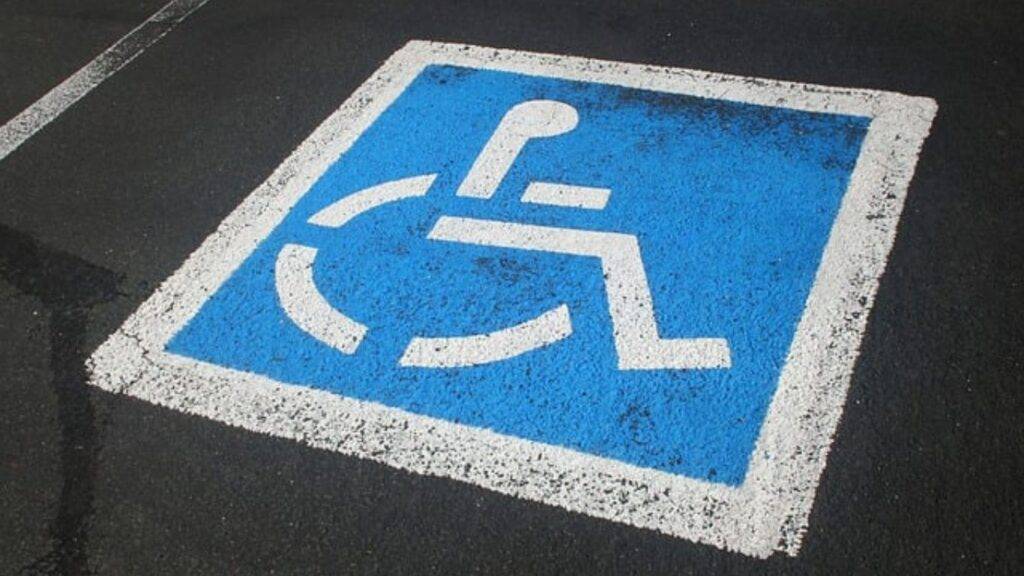
Navigating the bustling streets of New York can present unique challenges, especially for individuals with mobility limitations. Handicap parking permits play a crucial role in ensuring accessibility and convenience for those who need it most. In this comprehensive guide, we’ll delve into the essential details of obtaining and using handicap parking permits in the state of New York.
Understanding Handicap Parking:
Eligibility Criteria
Handicap parking permits are typically issued to individuals with disabilities that affect their ability to walk. Eligibility is determined based on medical conditions, and applicants must meet specific criteria outlined by the New York Department of Motor Vehicles (DMV). Common qualifying conditions include limited mobility, use of mobility aids, or significant health issues that impact walking.
Types of Permits
New York offers different types of handicap parking permits, including the blue parking permit for individuals, red permits for organizations transporting people with disabilities, and metered parking permits. Understanding the types of permits available is crucial for obtaining the right one for your specific needs.
The Application Process:
Required Documentation
To apply for a handicap parking permit in New York, certain documentation is typically required, such as a completed application form, medical certification from a licensed healthcare professional, and proof of identification. Gathering these documents in advance streamlines the application process.
Application Submission
Submitting the application can be done in person or by mail to your local DMV office. Online submission may also be available in certain cases. Familiarize yourself with the submission options and choose the one that best suits your preferences and needs.
Using Handicap Parking Permits:
Designated Parking Areas
Handicap parking permits allow individuals to park in designated accessible spaces. These spaces are strategically located near building entrances, ensuring easier access for those with mobility challenges. It’s essential to be aware of these spaces and use them responsibly.
Metered Parking Benefits
New York provides additional benefits for handicap parking permit holders, such as exemption from meter fees. Understand the regulations surrounding metered parking and take advantage of the privileges available to permit holders.
Renewal and Compliance:
Renewal Process
Handicap parking permits have an expiration date, and it’s important to initiate the renewal process in a timely manner. Understand the renewal requirements and ensure all necessary documentation is up to date to avoid any interruptions in permit validity.
Compliance with Regulations
Adhering to handicap parking regulations is crucial for maintaining the integrity of the system. Respect designated spaces, display the permit prominently, and be aware of any changes in regulations to ensure continued compliance.
Navigating the streets of New York with a handicap parking permit can significantly improve accessibility and convenience for individuals with disabilities. By understanding the eligibility criteria, application process, and proper use of permits, you can ensure a smoother experience and contribute to fostering an inclusive and accessible environment in the vibrant state of New York. Remember, a little knowledge goes a long way in making a big difference for those who rely on handicap parking permits to navigate their daily lives with greater ease.
Affordable Wellness: The Top Mental Health Clinics Accepting Medicaid in New York

In the bustling landscape of New York, where the pursuit of mental wellness is as crucial as ever, finding affordable and quality mental health care is a priority for many. This article serves as a guide to the top mental health clinics in New York that not only prioritize mental well-being but also welcome Medicaid, ensuring that access to mental health services is within reach for all.
The Door – Mental Health Clinic (New York, NY):
Location: 121 Avenue of the Americas, New York, NY 10013
Overview: The Door’s Mental Health Clinic is renowned for its comprehensive mental health services for young people. Accepting Medicaid, this clinic focuses on addressing the unique mental health needs of adolescents and young adults, providing a safe space for growth and healing.
Mount Sinai St. Luke’s – Outpatient Behavioral Health Services (New York, NY):
Location: 411 W 114th St, New York, NY 10025
Overview: Mount Sinai St. Luke’s is a pioneer in healthcare, and its Outpatient Behavioral Health Services cater to diverse mental health needs. With a commitment to accessibility, they accept Medicaid, making top-notch mental health care available to a broad spectrum of individuals.
Institute for Family Health – Family Health Center of Harlem (New York, NY):
Location: 1824 Madison Ave, New York, NY 10035
Overview: The Family Health Center of Harlem, part of the Institute for Family Health, offers integrated behavioral health services. Accepting Medicaid, this clinic takes a holistic approach to mental health, recognizing the interconnectedness of mental and physical well-being.
Bronx Lebanon Hospital Center – Behavioral Health Services (Bronx, NY):
Location: 1650 Grand Concourse, Bronx, NY 10457
Overview: Bronx Lebanon Hospital Center is committed to serving the Bronx community, and its Behavioral Health Services play a crucial role. With a focus on accessibility, they welcome Medicaid, ensuring that residents of the Bronx have access to quality mental health care.
Northwell Health – Zucker Hillside Hospital Outpatient Behavioral Health Services (Glen Oaks, NY):
Location: 75-59 263rd St, Glen Oaks, NY 11004
Overview: Zucker Hillside Hospital, part of Northwell Health, is a hub for mental health services. The Outpatient Behavioral Health Services cater to various mental health needs and are accessible to Medicaid recipients, providing a comprehensive range of therapeutic interventions.
Community Healthcare Network – Sunset Park Family Health Center (Brooklyn, NY):
Location: 150 55th St, Brooklyn, NY 11220
Overview: Community Healthcare Network’s Sunset Park Family Health Center is committed to providing accessible healthcare services. Accepting Medicaid, this clinic offers integrated mental health care, recognizing the importance of addressing mental health alongside physical health for overall well-being.
Project Renewal – The ScanVan (New York, NY):
Location: Various locations; check website for current schedule
Overview: Project Renewal’s ScanVan is a unique initiative providing mental health services on wheels. Accepting Medicaid, this mobile clinic reaches underserved communities, offering counseling and support where it’s needed most.
Prioritizing mental wellness should never be hindered by financial barriers. In New York, these top mental health clinics not only offer quality care but also open their doors to individuals with Medicaid, ensuring that affordability does not compromise the pursuit of mental well-being. Accessible and compassionate, these clinics stand as beacons of hope in the journey toward affordable mental wellness for all New Yorkers.
Exploring Medicaid Support for New York's Residents

In the bustling metropolis of New York, access to quality healthcare is a fundamental right for every resident. Medicaid, a crucial program administered by the New York State Department of Health, serves as a lifeline for those facing financial barriers to medical care. Join us on a journey as we explore the practical data behind Medicaid support for New York’s residents.
Understanding Medicaid in the Empire State:
Medicaid is a joint federal and state initiative designed to provide comprehensive healthcare coverage to eligible individuals and families. In New York, the program is meticulously managed by the New York State Department of Health, ensuring that residents have access to a wide array of essential medical services.
Eligibility Criteria:
To benefit from Medicaid support in New York, residents must meet specific eligibility criteria. These criteria encompass factors such as income, family size, disability status, and more. Understanding these parameters is crucial for individuals and families seeking to leverage the program to enhance their healthcare access.
Application Process:
Applying for Medicaid support in New York is a straightforward process made even more accessible through the New York State of Health website. The online application portal allows residents to apply conveniently from their homes. Additionally, local Department of Social Services offices stand ready to provide assistance and guidance, ensuring a smooth application process.
Comprehensive Coverage Details:
Upon approval, Medicaid beneficiaries in New York gain access to a broad spectrum of healthcare services. These encompass preventive care, primary and specialist doctor visits, hospital stays, prescription medications, mental health services, and more. Familiarizing oneself with the extent of coverage is key to maximizing the benefits available.
Special Programs and Support:
New York’s Medicaid system goes beyond basic healthcare coverage, offering special programs and waivers tailored to specific needs. These may include long-term care services, home and community-based services, and targeted programs for individuals with disabilities. Exploring these additional avenues can significantly enhance the support available to eligible residents.
Renewal and Continuous Coverage:
Maintaining Medicaid coverage requires periodic renewal, underscoring the importance of staying informed about the process. While automatic renewal options may be available for some beneficiaries, active participation in the renewal process ensures continuous coverage.
As we delve into the intricacies of Medicaid support for New York’s residents, it becomes evident that this program is a cornerstone of healthcare accessibility in the Empire State. By understanding eligibility criteria, navigating the application process, and exploring the depth of coverage and additional support programs, residents can empower themselves to take control of their health and well-being. Medicaid stands as a testament to the commitment to healthcare equality, ensuring that every New Yorker can access the care they need, regardless of financial circumstances.
Top Spots for Blood Work in NYC
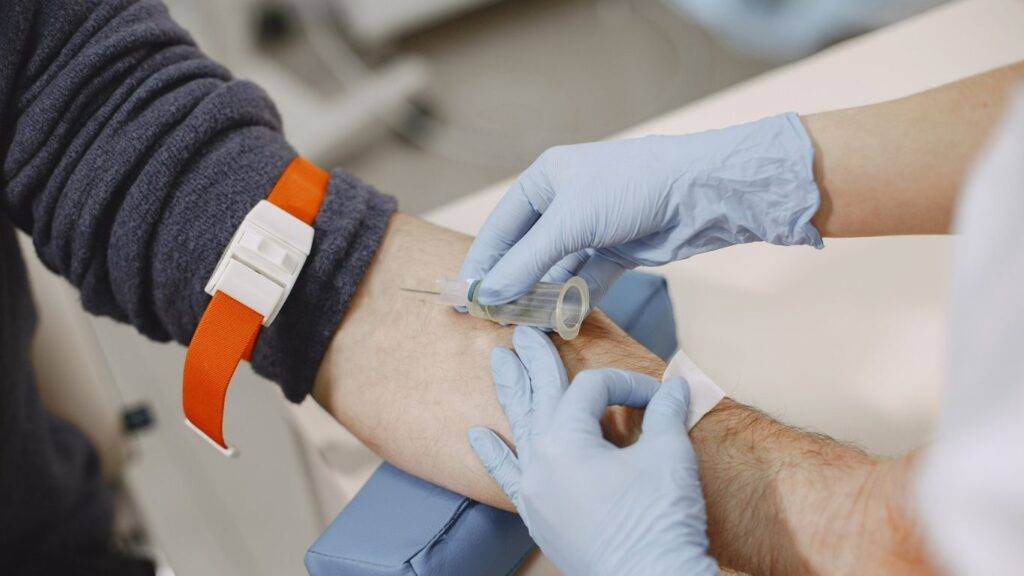
In the fast-paced heartbeat of New York City, maintaining optimal health is paramount. Whether it’s for routine check-ups, screenings, or specific health concerns, finding the right place for blood work is essential. Join us as we explore the top spots for blood work in the Big Apple, ensuring that your health journey is seamless and supported by the best services available.
Quest Diagnostics: Where Precision Meets Convenience
With numerous locations across the city, Quest Diagnostics is a renowned name in diagnostic testing. Known for its efficiency and accuracy, Quest offers a comprehensive range of blood tests, making it a convenient choice for New Yorkers seeking reliable and timely results.
LabCorp: Cutting-Edge Diagnostics in the Heart of NYC
LabCorp stands as a trusted provider of clinical laboratory services, offering advanced testing solutions. With multiple locations throughout NYC, LabCorp combines cutting-edge technology with a commitment to delivering precise and timely results, ensuring that your health is in good hands.
Mount Sinai Doctors: Elevating Healthcare Excellence
For those seeking a personalized healthcare experience, the Mount Sinai Doctors network provides top-tier medical services, including comprehensive blood work. With a focus on patient-centered care, Mount Sinai delivers a seamless and integrated approach to health services right in the heart of the city.
BioReference Laboratories: Pioneering Diagnostic Solutions
BioReference Laboratories, with a strong presence in New York, is known for its innovative diagnostic solutions. From routine blood work to specialized tests, BioReference is committed to providing accurate and timely results, contributing to a healthier New York City.
CityMD: Urgent Care with a Focus on Preventive Health
CityMD, a well-known urgent care provider in NYC, extends its services to preventive health, including blood work. With multiple locations across the boroughs, CityMD offers convenient access to comprehensive diagnostic services, emphasizing the importance of proactive health management.
Northwell Health Labs: A Network of Excellence
As part of the Northwell Health system, Northwell Health Labs boasts a network of facilities dedicated to delivering high-quality healthcare services, including blood work. With a commitment to excellence, Northwell Health Labs is a reliable choice for New Yorkers seeking top-notch diagnostic testing.
Your health is your greatest asset, and in the bustling city of New York, access to reliable and efficient blood work services is paramount. The top spots mentioned above represent a selection of the best providers in the city, offering a blend of convenience, accuracy, and a commitment to elevating healthcare standards. Whether you’re a resident or a visitor, these trusted locations ensure that your health journey in the city that never sleeps is supported by the best in the business.
Top 10 Medicaid-Accepting Primary Care Doctors in NYC

Finding quality healthcare in NYC can be daunting, especially if you rely on Medicaid. But access to a good primary care physician shouldn’t be a luxury. To bridge this gap, we’ve compiled a list of 10 fantastic Medicaid-accepting primary care doctors in the city, chosen based on factors like patient reviews, expertise, and accessibility.
Dr. Y-Uyen Le Nguyen: This highly-rated physician at Charles B. Wang Community Health Center is beloved for her attentive care and comprehensive approach. Dr. Nguyen specializes in internal medicine and offers preventive care, wellness checkups, and treatment for chronic conditions.
Dr. Catherine Lee: Board-certified in family medicine, Dr. Lee at Judson Family Health Center brings a holistic approach to primary care. She champions preventative measures while remaining focused on patient needs and communication.
Dr. Martin Malachovsky: With fluency in English, Russian, and Ukrainian, Dr. Malachovsky at Amsterdam Family Health Center caters to a diverse clientele. He provides comprehensive primary care for all ages, from routine checkups to managing chronic illnesses.
Dr. Jedadiah Burack: Known for his patient-centered approach, Dr. Burack at Callen-Lorde Community Health Center specializes in LGBTQ+ healthcare but welcomes patients of all backgrounds. He offers comprehensive primary care services with a focus on preventative measures.
Dr. Michael Raffinan: Located at NYC Health + Hospitals/Gotham Health, Dr. Raffinan is a trusted family physician with extensive experience in urban healthcare. He prioritizes accessibility and provides high-quality primary care for the whole family.
Dr. Arlene Perkins: Dr. Perkins at LaSante Health Center brings over 20 years of experience in internal medicine to her practice. She is known for her thoroughness, dedication to patient education, and commitment to preventative care.
Dr. Lada Galilova: Fluent in English and Russian, Dr. Galilova at Mount Sinai Beth Israel provides multilingual primary care for adults and children. She takes a comprehensive approach, focusing on preventative measures and managing chronic conditions.
Dr. Anzhela Dvorkina: Dr. Dvorkina at Community Healthcare Network Lower East Side/Catherine M. Abate combines clinical expertise with a passion for community health. She offers comprehensive primary care, prioritizing preventative measures and patient education.
Dr. Ronald Dailey: Located at Weill Cornell Medicine – Primary Care – East Side, Dr. Dailey has over 30 years of experience in family medicine. He is known for his calming presence, thorough consultations, and dedication to his patients’ well-being.
Dr. Alice Coghill: Dr. Coghill at CityMD West 57th Urgent Care brings expertise in both internal medicine and urgent care. She provides prompt and accessible primary care services, making her a reliable choice for busy New Yorkers.
This is just a starting point! Your ideal doctor will depend on your specific needs and preferences. Don’t hesitate to research further, read patient reviews, and schedule consultations before making your final choice. With this list and some extra research, you’re well on your way to finding the perfect Medicaid-accepting primary care doctor in NYC. Prioritize your health and access the quality care you deserve!
Top 10 Medicaid-Accepting Radiologists in NYC

Navigating healthcare in a bustling city like NYC can be tough, especially when navigating the complexities of Medicaid coverage. Finding qualified specialists who accept Medicaid can feel like a maze, particularly in the field of radiology. But worry not, New Yorkers! We’ve compiled a list of the top 10 Medicaid-accepting radiologists in NYC, ensuring you get the expert care you deserve, regardless of your financial situation.
Richard Michael Schaffer, MD (Schaffer, Schonholz & Drossman, LLP): Dr. Schaffer boasts 45 years of experience in diagnostic radiology and stellar patient reviews. He’s a respected member of prestigious medical societies and brings top-notch expertise to your diagnosis.
Ayala Rosenbaum, MD (Rosetta Radiology): Dr. Rosenbaum is another highly-rated radiologist, excelling in both general and breast imaging. Her dedication to clear communication and patient comfort makes her a popular choice for NYC residents.
Christina T. Giuliano, MD (Maimonides Medical Center): Dr. Giuliano brings her expertise to one of NYC’s premier medical centers, offering a wide range of radiological services under the umbrella of Medicaid.
Steven Erick Shankman, MD (Pinnacle Diagnostic Radiology): Dr. Shankman is known for his meticulous attention to detail and dedication to using the latest imaging technology to provide accurate diagnoses.
Richard J. Herzog, MD, FACR (Hospital for Special Surgery, Main Hospital): Dr. Herzog’s affiliation with one of the country’s top orthopedic hospitals speaks volumes about his qualifications. He specializes in musculoskeletal imaging, ensuring precise scans for bone and joint issues.
Barry Berson, MD (NYMI Associates): Dr. Berson’s vast experience, coupled with his commitment to patient education, makes him a valued choice for those seeking clear explanations of their imaging results.
Jonathan Susman, MD (ColumbiaDoctors Midtown): Dr. Susman is affiliated with Columbia University Medical Center, bringing the resources and expertise of a renowned institution to your Medicaid care.
Neil Khilnani, MD (Weill Cornell Vein Treatment Center, Interventional Radiology): Dr. Khilnani specializes in minimally invasive procedures, using imaging to guide delicate interventional treatments.
Yves Pierre Gobin, MD: Dr. Gobin’s practice offers a comprehensive range of radiological services, catering to diverse patient needs and ensuring all-encompassing care.
Marc Schiffman, MD (Weill Cornell Medicine): Dr. Schiffman brings his expertise in both diagnostic and interventional radiology to Weill Cornell, offering patients advanced options within the Medicaid network.
This list is a starting point, and your specific needs may guide your choice. Consider factors like location, subspecialty expertise, and patient reviews when making your decision. Remember, you deserve quality healthcare regardless of your insurance status, and these top-rated professionals are here to serve you.
Top 10 Medicaid-Accepting Rheumatologists in New York City

Battling chronic joint and muscle pain in New York City? Finding a qualified rheumatologist who accepts Medicaid can feel like scaling the Empire State Building in flip-flops. But fear not, pain warriors! We’ve unearthed the top 10 Medicaid-accepting rheumatologists in NYC, ready to equip you with expert care on a budget.
Dr. Olga Petryna, MD (ACWS NYU Langone): With a 5-star Google rating and 8 glowing reviews, Dr. Petryna shines in both patient satisfaction and expertise. This NYU Langone-affiliated doctor tackles an array of rheumatic conditions, offering hope and personalized treatment plans.
Dr. Jose U. Scher, MD (NYU Langone Orthopedic Center): Board-certified in both internal medicine and rheumatology, Dr. Scher brings a comprehensive approach to pain management. He’s affiliated with one of NYC’s premier medical centers, ensuring access to advanced treatment options.
Dr. Stephen Smiles, MD (NYU Langone Orthopedic Center): Dr. Smiles’ 20+ years of experience and reputation for thoroughness make him a popular choice for complex cases. He’s also a published researcher, actively advancing the field of rheumatology.
Dr. Jonathan Samuels, MD (NYU Langone Orthopedic Center): Don’t let the intimidating NYC hospital location fool you! Dr. Samuels is known for his warm bedside manner and meticulous attention to detail, putting patients at ease while delivering top-notch care.
Dr. Margrit Wiesendanger, MD (Mount Sinai Hospital): A fellow of the American College of Rheumatology, Dr. Wiesendanger offers a wealth of experience and specializes in diagnosing and treating autoimmune diseases. She’s also affiliated with the prestigious Mount Sinai Hospital, giving you access to cutting-edge resources.
Dr. Irina Abramova, DO (Forest Hills Rheumatology, PLLC): Venturing into Queens? Dr. Abramova boasts a welcoming practice and focuses on providing a holistic approach to managing chronic pain. She’s fluent in both English and Russian, catering to a diverse patient population.
Dr. Priya Choskhi, MD (Mount Sinai Health System): This Mount Sinai-affiliated physician is a rising star in rheumatology, recognized for her dedication to patient education and clear communication. She’s also actively involved in research, ensuring you receive care based on the latest advancements.
Dr. Jonathan A. Friedman, MD (Harlem Rheumatology, LLC): Located in the heart of Harlem, Dr. Friedman’s practice embodies accessibility and personalized care. He’s dedicated to serving underserved communities and offers comprehensive rheumatological services within the Medicaid network.
Dr. Robert M. Salcido, MD (SUNY Downstate Medical Center): Brooklynites, rejoice! Dr. Salcido brings his expertise to Brooklyn, offering a full range of diagnostic and treatment options for rheumatic diseases. He’s also affiliated with the esteemed SUNY Downstate Medical Center.
Dr. Allison W. Kavey, MD (Montefiore Medical Center): Last but not least, Dr. Kavey brings her vast knowledge and passion for rheumatology to the Bronx. She’s associated with the renowned Montefiore Medical Center, providing advanced care within the reach of Medicaid patients.
This list is a starting point, and your specific needs might guide your choice. Consider factors like location, subspecialty expertise, patient reviews, and accessibility when making your decision. Most importantly, don’t hesitate to reach out to their offices to confirm your Medicaid coverage and availability.
With this guide in hand, navigating the challenging world of NYC rheumatology on a Medicaid budget becomes a little less daunting. Let these dedicated professionals help you conquer chronic pain and regain control of your life, one step at a time!
Top 10 Medicaid-Accepting Ophthalmologists in New York City

Navigating the bustling streets of NYC with blurry vision can be a recipe for disaster. But access to top-notch eye care shouldn’t depend on your bank account. For New Yorkers on Medicaid, finding qualified ophthalmologists can feel like searching for a contact lens in a dark movie theater. Don’t fret, visionaries! We’ve shed light on the top 10 Medicaid-accepting ophthalmologists in NYC, ensuring you see bright possibilities regardless of your insurance status.
Dr. Leejee Han Suh, MD (Columbia Doctors – Third Avenue): With a perfect 5-star rating on Zocdoc and glowing patient reviews, Dr. Suh shines in both expertise and bedside manner. She’s fluent in English and Korean, making her accessible to a wider range of patients.
Dr. Stanley Chang, MD (Edward S. Harkness Eye Institute): Affiliated with one of NYC’s premier eye institutes, Dr. Chang brings cutting-edge technology and extensive experience to your vision care. He specializes in cataracts, glaucoma, and diabetic eye disease.
Dr. Tal Raviv, MD (Eye Center of New York): Don’t let the Midtown location intimidate you! Dr. Raviv is known for his patient-centered approach and expertise in complex conditions like corneal diseases and refractive surgery.
Dr. Laroche, MD (Advanced Eye Care of New York, Queens Office): Queens residents, rejoice! Dr. Laroche’s welcoming practice offers a full spectrum of eye care services, including comprehensive exams, cataract surgery, and treatment for common eye conditions.
Dr. Shulman, MD (Eastside Eye Associates): This Upper East Side practice boasts state-of-the-art technology and Dr. Shulman’s impressive credentials. He specializes in managing diabetic eye disease and age-related macular degeneration.
Dr. Maayan Keshet, MD (City Eye MD): Located in the heart of Brooklyn, Dr. Keshet offers specialized care for children and adults, including managing amblyopia, strabismus, and glaucoma.
Jacqueline W. Muller, MD (The Dry Eye Treatment Center): Battling those pesky dry eyes? Dr. Muller is a renowned expert in diagnosing and treating various dry eye conditions, offering relief and comfort to countless patients.
Scott S. Weissman, MD (Weissman Eye Associates): Midtown Manhattan residents, take note! Dr. Weissman combines his extensive experience with a focus on minimally invasive procedures, ensuring effective care with minimal downtime.
Jeffery Liebmann, MD (Columbia Doctors): Affiliated with the prestigious Columbia University Medical Center, Dr. Liebmann brings his expertise in cataract surgery and refractive surgery to the Medicaid network.
Richard Levy, MD (Weill Cornell Medicine Ophthalmology): Located in the heart of Manhattan, Dr. Levy brings his vast knowledge of medical retina and vitreoretinal surgery to a wider range of patients through Medicaid acceptance.
This list is a starting point, and your specific needs might guide your choice. Consider factors like location, subspecialty expertise, patient reviews, and language spoken when making your decision. Most importantly, don’t hesitate to reach out to their offices to confirm your Medicaid coverage and availability.
With this guide in hand, navigating the sometimes blurry world of NYC ophthalmology on a Medicaid budget becomes a little clearer. Let these dedicated professionals help you see the world at its sharpest, one eye exam at a time!
Top 10 Medicaid-Accepting Dermatologists in NYC

Conquering acne, tackling eczema, or navigating complex skin conditions on a budget can feel like traversing a Midtown rush hour on a Citi Bike. But fear not, NYC skin warriors! We’ve mapped out the top 10 Medicaid-accepting dermatologists in the city, ensuring everyone gets access to expert care, regardless of their insurance status.
Dr. Marc Z. Handler, MD (City Derm NYC): Boasting a perfect 5-star rating on Google and countless glowing reviews, Dr. Handler shines in both expertise and patient satisfaction. He’s a top choice for acne, eczema, and general dermatology needs.
Dr. Hirshel Kahn, MD (Kahn Dermatology): Staten Island residents, rejoice! Dr. Kahn is a highly-rated dermatologist, excelling in both general and laser dermatology. He also functions as an Assistant Clinical Professor, so you’re in good hands.
Dr. Derek Chan, MD (Tribeca Dermatology): Downtown Manhattan, here’s your hero! Dr. Chan brings his expertise in general dermatology and cosmetic procedures to Tribeca, offering comprehensive care within the Medicaid network.
Dr. Alexandra Iosub, PA-C (Advanced Dermatology and Laser, Midtown): This physician assistant is known for her dedication to individualized care and attention to detail. She tackles acne, eczema, and various skin conditions with a patient-centered approach.
Dr. Kenneth E. Arndt, MD (Mount Sinai Hospital): Affiliated with one of NYC’s leading hospitals, Dr. Arndt brings his extensive experience and focus on complex skin conditions like psoriasis and autoimmune skin diseases to your Medicaid care.
Dr. Patricia Bathrick, MD (NYC Derm Center): Upper East Siders, this is your spot! Dr. Bathrick is a Board-certified dermatologist with a warm bedside manner and expertise in general dermatology and laser treatments.
Dr. Joerg Ohara, MD (Advanced Dermatology and Laser, Chelsea): Looking for a Chelsea expert? Dr. Ohara’s multilingual fluency and experience in both medical and cosmetic dermatology make her a popular choice.
Dr. Aleksandra Ryzhakova, MD (Jackson Heights Medical Group): Queens residents, don’t miss out! Dr. Ryzhakova is a highly-rated dermatologist known for her thorough consultations and dedication to her patients’ well-being.
Dr. Marc G. Michelsohn, MD (Manhattan Dermatology & Cosmetic Surgery): This Midtown practice boasts state-of-the-art technology and Dr. Michelsohn’s impressive credentials. He specializes in general dermatology, anti-aging treatments, and skin cancer detection.
Dr. Amy Wechsler, MD (SkinCare at Weill Cornell Medicine): Upper East Siders, here’s another option! Dr. Wechsler’s affiliated with prestigious Weill Cornell, offering access to advanced care on a Medicaid plan.
This list is a starting point, and your specific needs might guide your choice. Consider factors like location, subspecialty expertise, patient reviews, and language spoken when making your decision. Most importantly, don’t hesitate to reach out to their offices to confirm your Medicaid coverage and availability.
MLTC in New York: A Simple Guide for Easy Understanding

Navigating the world of healthcare can be complex, and when it comes to Managed Long-Term Care (MLTC), clarity is essential. If you’re a New York resident seeking a straightforward guide to grasp the basics of MLTC, you’re in the right place. In this article, we break down the key components of MLTC to provide you with a clear and simple understanding of this crucial healthcare program.
Understanding MLTC:
What is MLTC?
Managed Long-Term Care (MLTC) is a program designed to coordinate and provide long-term care services for individuals who require assistance with daily activities due to chronic illness or disability. It aims to support individuals in maintaining their independence and quality of life while receiving necessary care at home.
Eligibility and Enrollment:
Who is Eligible for MLTC?
Eligibility for MLTC is generally determined by factors such as age, health conditions, and the need for assistance with daily activities. Individuals who are eligible for both Medicaid and require long-term care services are often candidates for MLTC.
Enrollment Process
Enrolling in MLTC involves selecting a Managed Long-Term Care plan that suits your needs. This process may include an assessment of your health and care requirements to ensure that the chosen plan aligns with your unique circumstances.
Services Covered by MLTC:
Home Care Services
MLTC covers a range of home care services, including assistance with activities of daily living (ADLs), such as bathing, dressing, and meal preparation. Home health aides and personal care services are integral components of MLTC.
Nursing Home Care
In cases where individuals require a higher level of care, MLTC also covers nursing home services. This includes access to skilled nursing facilities for those whose health needs cannot be met at home.
Therapy and Rehabilitation
Physical therapy, occupational therapy, and other rehabilitation services are often covered under MLTC to support individuals in maintaining or improving their functional abilities.
Choosing a MLTC Plan:
Consideration Factors
When selecting an MLTC plan, consider factors such as the network of healthcare providers, the range of covered services, and the plan’s reputation for quality care. It’s essential to choose a plan that aligns with your specific needs and preferences.
Changing Plans
If your needs change or you find that your current plan is not meeting your expectations, MLTC allows for plan changes. Be sure to communicate with your plan and explore alternative options if necessary.
Advocacy and Support:
Understanding Your Rights
MLTC participants have rights regarding the care they receive. Familiarize yourself with these rights, and don’t hesitate to advocate for the services and support you require.
Ongoing Communication
Maintaining open communication with your MLTC plan is key to ensuring that your care remains aligned with your evolving needs. Regularly review your care plan and discuss any necessary adjustments with your care team.
In the intricate landscape of healthcare, Managed Long-Term Care serves as a valuable resource for individuals in need of ongoing assistance. By understanding the basics of MLTC, you empower yourself to make informed decisions about your care. Remember, simplicity is key, and with this easy guide, you’re well on your way to navigating MLTC in New York with confidence and clarity. If you have specific questions or concerns, don’t hesitate to reach out to your MLTC plan for personalized assistance.
HealthTech Excellence: Exploring the Top 16 Healthcare Startups in NYC

The bustling metropolis of New York City is not only a hub for finance, culture, and art but also a breeding ground for innovation in the healthcare sector. In this blog post, we embark on a journey to explore the top 16 HealthTech startups in NYC, each making significant strides in revolutionizing the landscape of healthcare through technological innovation.
Cityblock Health
Cityblock Health is on a mission to provide accessible, community-based healthcare. Their platform focuses on delivering personalized care to underserved urban populations, combining technology with a human-centric approach.
Oscar Health
Oscar Health is reshaping health insurance through a tech-driven model. Their platform leverages data and analytics to simplify the insurance process, offering a user-friendly experience for members.
Ro
Ro is a telehealth platform tackling various aspects of healthcare, from online doctor consultations to pharmacy services. They aim to make healthcare more accessible, particularly for issues such as men’s health and sexual wellness.
Galileo Health
Galileo Health is bringing innovation to primary care with a focus on preventive health. Their platform connects patients with dedicated physicians, leveraging technology to enhance the overall healthcare experience.
Nomad Health
Nomad Health is transforming healthcare staffing by connecting healthcare professionals with job opportunities in a streamlined, digital marketplace. Their platform simplifies the hiring process for both clinicians and healthcare facilities.
K Health
K Health utilizes artificial intelligence to provide users with personalized health information and virtual consultations. Their platform aims to empower individuals to make informed decisions about their health.
Maven Clinic
Maven Clinic is at the forefront of women’s and family health. Their platform offers virtual care for issues ranging from fertility and pregnancy to postpartum support, making healthcare more accessible for women.
Cedar
Cedar is revolutionizing the patient financial experience through its healthcare financial engagement platform. Their technology simplifies billing processes and enhances communication between healthcare providers and patients.
Nanit
Nanit focuses on improving infant health through its smart baby monitor and sleep tracking technology. By providing insights into a baby’s sleep patterns, Nanit helps parents promote healthy sleep habits.
Zocdoc
Zocdoc is a well-established player in the healthcare startup scene, connecting patients with healthcare providers through its online platform. Their goal is to streamline the appointment booking process and improve access to care.
Tyto Care
Tyto Care is redefining telehealth by offering an all-in-one examination device that allows users to conduct comprehensive medical exams at home. This technology enables healthcare providers to remotely assess a patient’s health.
Ribbon Health
Ribbon Health is focused on enhancing the healthcare referral process. Their platform provides detailed insights into healthcare providers, enabling more informed decisions about referrals and care coordination.
PatientPing
PatientPing is dedicated to improving care coordination through its health information platform. By providing real-time notifications about patient encounters, they facilitate better communication among healthcare providers.
Thirty Madison
Thirty Madison is addressing specific healthcare needs through a portfolio of specialized brands. Their focus areas include hair loss, migraines, and digestive health, offering personalized solutions through telehealth.
Spring Health
Spring Health is prioritizing mental health by offering a comprehensive mental health benefits platform for employers. Their technology assesses employee well-being and provides personalized support and resources.
RubiconMD
RubiconMD is leveraging technology to enhance access to specialty care. Their platform enables primary care providers to connect with specialists for eConsults, streamlining the referral process and improving patient outcomes.
The HealthTech scene in New York City is alive with innovation, and these 16 startups are leading the charge. From telehealth and patient engagement to digital marketplaces and AI-driven solutions, each company is contributing to the transformation of healthcare delivery. As these startups continue to evolve, their impact on the health and well-being of individuals in NYC and beyond is bound to be substantial. The future of healthcare is undoubtedly intertwined with the advancements brought forth by these HealthTech pioneers.
A Guide on Applying for Medicaid in New York

Access to healthcare is a fundamental right, and Medicaid plays a crucial role in ensuring that individuals and families can receive essential medical services. If you’re a resident of New York and seeking information on how to apply for Medicaid, you’re in the right place. This comprehensive guide will walk you through the process, providing step-by-step insights to make your Medicaid application experience as smooth as possible.
Understanding Medicaid:
What is Medicaid?
Medicaid is a state and federally funded program designed to provide healthcare coverage to eligible low-income individuals and families. In New York, the program is administered by the New York State Department of Health (NYSDOH) and helps ensure that individuals have access to necessary medical services.
Determining Eligibility:
Who is Eligible for Medicaid in New York?
Eligibility for Medicaid is based on various factors, including income, family size, and specific circumstances. In New York, certain groups, such as pregnant women, children, parents, and individuals with disabilities, may qualify for Medicaid coverage.
Preparing for the Application:
Gather Necessary Documents
Before starting the Medicaid application process, gather essential documents. These may include proof of income, identification, citizenship or immigration status, and information about your household.
Choosing the Right Application Method:
Online Application
The New York State of Health website offers a user-friendly online application portal. Visit the website, create an account, and follow the prompts to complete your Medicaid application.
Paper Application
If you prefer a paper application, you can download the Medicaid application form from the New York State of Health website. Complete the form and mail it to the address provided.
In-Person Assistance
Many local social services offices and community-based organizations provide in-person assistance for Medicaid applications. Trained staff can guide you through the process and answer any questions you may have.
The Application Process:
Create an Account
If applying online, start by creating an account on the New York State of Health website. Provide the required information to set up your profile.
Complete the Application
Fill out the application form with accurate and up-to-date information. Be thorough and provide all necessary details, ensuring the accuracy of your application.
Submit Required Documents
Depending on your application method, you may need to submit supporting documents. Ensure that you include all required paperwork to avoid delays in processing.
Review and Confirm
Before final submission, review your application carefully. Confirm that all information is accurate and complete. This step is crucial to avoid potential issues.
Wait for Approval
Once your application is submitted, you will receive a notice regarding the status of your Medicaid eligibility. The approval process may take some time, so be patient.
Seeking Assistance:
Medicaid Helpline
or need assistance during the application process, you can contact the Medicaid Helpline at 1-800-541-2831.
Local Social Services Office
Visit your local social services office for in-person assistance. Trained staff can guide you through the application steps and address any concerns you may have.
Applying for Medicaid in New York is a vital step toward ensuring you have access to necessary healthcare services. By understanding the eligibility criteria, preparing required documents, and choosing the right application method, you can navigate the process with confidence. Remember, assistance is available, and your local social services office is there to support you throughout the application journey. Take charge of your health by initiating the Medicaid application process today.
From Preservation to Development: What You Need to Know About NYC's HPD

New York City, with its towering skyscrapers and diverse neighborhoods, is a dynamic metropolis where housing is a critical aspect of urban life. Ensuring the preservation and development of affordable and quality housing is a monumental task, and at the forefront of this effort is the New York City Department of Housing Preservation and Development (HPD). In this blog post, we embark on a journey to uncover the essential functions, goals, and impact of NYC’s HPD.
Understanding the NYC HPD:
What is HPD?
The New York City Department of Housing Preservation and Development (HPD) is a municipal agency dedicated to promoting the quality and affordability of housing in the city. Established to address housing challenges, HPD plays a pivotal role in preserving existing housing stock and fostering new developments to meet the diverse needs of New Yorkers.
Key Functions of HPD:
Preservation of Existing Housing
HPD is committed to preserving the city’s existing housing stock. This includes initiatives to maintain the quality of buildings, enforce housing codes, and address issues related to housing deterioration and neglect.
Affordable Housing Development
A major focus of HPD is the development of affordable housing options. Through various programs and partnerships, HPD works to create new affordable housing units that cater to different income levels, ensuring that a diverse range of residents can find housing that suits their needs.
Community Development
HPD is actively engaged in community development projects. By collaborating with community organizations and stakeholders, the department works to enhance neighborhoods, improve infrastructure, and create thriving, inclusive communities.
Housing Finance and Subsidies
HPD plays a crucial role in providing financial assistance and subsidies to both property owners and tenants. These programs aim to make housing more affordable, address homelessness, and support sustainable development.
Key Initiatives and Programs:
Housing New York
Launched in 2014, the Housing New York plan is a comprehensive strategy aimed at addressing the city’s housing challenges. The plan includes ambitious goals for creating and preserving affordable housing units across the five boroughs.
Affordable Housing Lotteries
HPD oversees the affordable housing lottery system, through which eligible individuals and families can apply for affordable housing units. This system promotes transparency and ensures fair access to affordable housing opportunities.
Building Healthy Homes
HPD is committed to ensuring that all New Yorkers have access to safe and healthy living conditions. Initiatives under the Building Healthy Homes umbrella focus on addressing housing-related health issues and promoting overall well-being.
Community Engagement and Advocacy:
Community Boards and Partnerships
HPD actively engages with community boards and local organizations to understand the unique needs of different neighborhoods. This collaborative approach ensures that development initiatives align with the priorities of the communities they serve.
Tenant and Landlord Support
HPD provides resources and support for both tenants and landlords. This includes guidance on tenant rights, housing maintenance, and assistance programs for property owners.
How You Can Engage:
Stay Informed
Stay updated on HPD’s initiatives and programs by visiting their official website. Regularly check for updates on affordable housing lotteries, community development projects, and housing-related resources.
Participate in Community Meetings
Get involved in community meetings and discussions. Community boards often play a vital role in shaping local development plans, and your input can contribute to the decision-making process.
Explore Affordable Housing Opportunities
If you are seeking affordable housing, explore HPD’s affordable housing lotteries. These lotteries provide an opportunity to apply for housing units that match your income level.
The New York City Department of Housing Preservation and Development (HPD) serves as a linchpin in the city’s efforts to address housing challenges and create vibrant, inclusive communities. From preserving existing housing to spearheading affordable housing developments, HPD’s impact is far-reaching.
As a resident or potential homeowner in New York City, staying informed about HPD’s initiatives and actively participating in community discussions can contribute to the ongoing efforts to create a more equitable and accessible housing landscape. From preservation to development, HPD is at the forefront of shaping the future of housing in the city that never sleeps.
Healing Hands: Navigating New York's Top 10 Acupuncture Doctors for Optimal Well-Being

The Big Apple’s bustling energy can be both exhilarating and exhausting. Whether you’re a seasoned New Yorker or a newly arrived transplant, prioritizing your well-being is crucial. In this urban jungle, the ancient practice of acupuncture emerges as a beacon of tranquility and holistic healing.
But with hundreds of qualified practitioners scattered across the city, finding the “one” can feel overwhelming. Fear not, weary warriors! This guide dives into the top 10 acupuncture doctors in New York City, each tailored to address specific needs and preferences.
Dr. Sarah Chen, Midtown West: A renowned expert in pain management and stress reduction, Dr. Chen blends traditional techniques with cutting-edge technology like electroacupuncture. Perfect for those seeking relief from chronic pain, headaches, and anxiety.
Dr. David Lee, Upper East Side: Specializing in women’s health and fertility, Dr. Lee’s gentle approach incorporates herbal remedies and dietary guidance alongside acupuncture. Ideal for ladies looking to balance hormones, optimize reproductive health, or navigate menopause with grace.
Dr. Maria Rodriguez, Brooklyn: Dr. Rodriguez’s passion lies in treating digestive issues and allergies. Her personalized approach and emphasis on dietary adjustments have earned her a loyal following. Seek her out if you’re grappling with IBS, food sensitivities, or seasonal allergies.
Dr. Michael Johnson, Harlem: A champion of community acupuncture, Dr. Johnson offers sliding-scale fees and a welcoming environment. His expertise lies in sports injuries, muscle tension, and overall athletic performance optimization. Ideal for active individuals on a budget.
Dr. Emily Kim, Lower East Side: For a truly Zen experience, head to Dr. Kim’s serene studio. Combining acupuncture with mindfulness practices and sound therapy, she helps patients achieve deep relaxation and emotional balance. Seek her out if you’re craving inner peace and stress management tools.
Dr. William Brown, Chelsea: A seasoned practitioner with a focus on internal medicine, Dr. Brown utilizes acupuncture to address a wide range of conditions, from insomnia and fatigue to respiratory issues and digestive disorders. A great choice for those seeking overall wellness optimization.
Dr. Anna Singh, Queens: Dr. Singh’s holistic approach integrates acupuncture with herbal medicine and traditional Chinese massage. Her expertise lies in treating skin conditions like eczema and psoriasis, offering a natural alternative to conventional treatments.
Dr. Maya Patel, Greenwich Village: Looking for a modern twist on traditional acupuncture? Dr. Patel incorporates facial rejuvenation techniques alongside her treatments, leaving patients glowing both inside and out. Perfect for those seeking natural anti-aging solutions.
Dr. David Garcia, Washington Heights: Dr. Garcia’s passion lies in treating neurological conditions like migraines and chronic pain. Combining acupuncture with cupping therapy and acupressure, he offers a comprehensive approach to pain management.
Dr. Elizabeth Miller, Financial District: A haven for busy professionals, Dr. Miller’s lunchtime and evening appointments cater to your hectic schedule. Her expertise lies in stress reduction and energy boosting, helping you navigate the urban grind with renewed vitality.
Choosing the right acupuncturist is a personal journey. Check practitioner websites, read online reviews, and schedule consultations to find the perfect fit for your individual needs and preferences. So, breathe in, release tension, and embark on your journey toward holistic well-being with the help of New York City’s finest acupuncture doctors. With gentle needles and ancient wisdom, they’ll guide you toward optimal health and inner peace, one point at a time.
Exploring the Top 10 Senior-Friendly Yoga Studios in New York

New York City, with its pulsating energy and endless possibilities, can be just as vibrant for seniors as it is for anyone else. And what better way to tap into that vitality than through the gentle yet powerful practice of yoga? But navigating the city’s vast studio landscape for classes tailored to mature bodies can be daunting. Fear not, seasoned yogis! This guide unlocks the top 10 senior-friendly yoga studios in NYC, each offering a welcoming space and classes designed to nourish your body and soul.
Yoga Common: This inclusive studio boasts multiple locations across the city, featuring spacious rooms with ample floor space and comfortable props. Their “Gentle Yoga for All” and “Chair Yoga” classes are perfect for beginners and those seeking low-impact movement. Bonus: They offer discounted rates for seniors!
Integral Yoga Institute: Nestled in the East Village, this non-profit institution promotes holistic well-being. Their “Gentle Hatha Yoga for Seniors” class focuses on accessible postures, breathwork, and meditation, leaving you feeling refreshed and grounded.
NY Loves Yoga: This charming Upper West Side studio oozes warmth and community. Their “Silver Swans Yoga” class caters specifically to seniors, utilizing props and modifications to ensure a safe and enjoyable practice.
Yoga Vida: With multiple locations throughout Manhattan, Yoga Vida offers a variety of “Gentle Yoga” and “Restorative Yoga” classes ideal for seniors. Their heated studios provide a comforting warmth, while experienced instructors guide you through gentle stretches and relaxation techniques.
Modo Yoga NYC: If you’re looking for a slightly more challenging yet supportive environment, Modo Yoga’s “Yin Yoga” classes are a great option. Held in a warm room, these classes focus on passive stretches and deep breathing, promoting joint health and flexibility.
Ishta Yoga: This Chelsea studio emphasizes personalized attention, offering “Gentle Flow” and “Restorative Yoga” classes suitable for all levels. Smaller class sizes ensure instructors can provide individual modifications and adjustments.
The Yoga Room: Located in Soho and Tribeca, this studio’s “Gentle Yoga” and “Chair Yoga” classes cater to seniors seeking to improve balance, flexibility, and mindfulness. Their tranquil atmosphere creates a space for deep relaxation and inner peace.
Kula Yoga Project: With studios in Williamsburg and Clinton Hill, Kula Yoga Project prioritizes inclusivity and community. Their “Gentle Yoga” and “Slow Flow” classes welcome seniors of all abilities, offering modifications and props to ensure a comfortable practice.
Five Points Academy: This vibrant Downtown Brooklyn studio offers a “Gentle Yoga for Seniors” class that blends gentle movement with breathwork and meditation. Their focus on mindful movement and stress reduction creates a nourishing experience for both body and mind.
Jivamukti Yoga School: For experienced yogis who crave a slightly more vigorous yet mindful practice, Jivamukti’s “Gentle & Restorative Yoga” class is a fantastic option. Combining poses with chanting and meditation, this class leaves you feeling energized and spiritually balanced.
Choosing the right studio is a personal journey. Consider factors like location, class size, instructor experience, and amenities offered before venturing out. Many studios offer trial classes or discounts for seniors, so don’t hesitate to explore your options!
30 Everyday Slang Terms Heard on the New York Streets
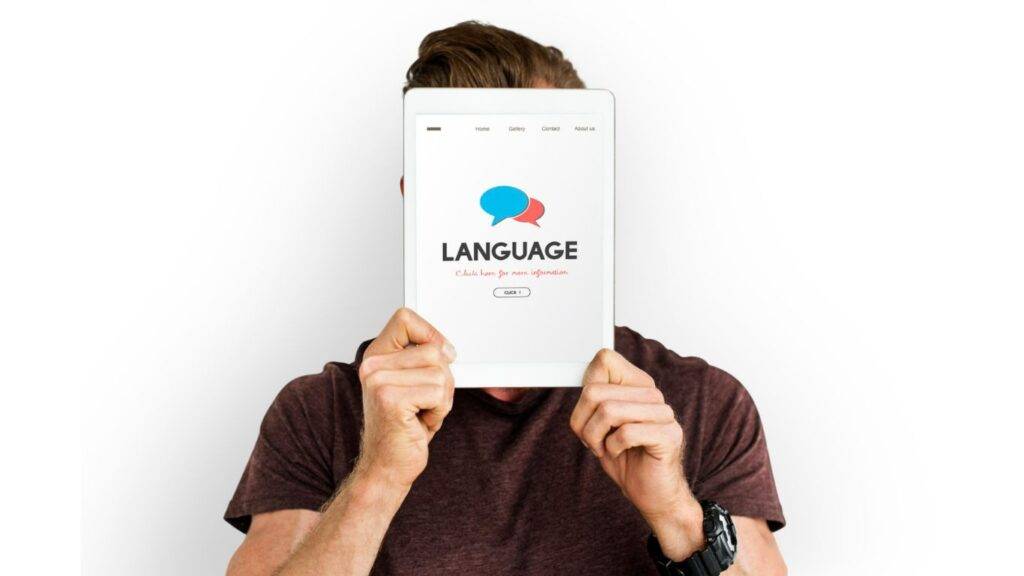
New York City, the city that never sleeps, is a melting pot of cultures and languages. One of the most fascinating aspects of the Big Apple is its unique slang that resonates through the crowded streets and bustling neighborhoods. Whether you’re a native New Yorker or just passing through, understanding the local lingo can be the key to navigating the city with style. Here are 30 everyday slang terms commonly heard on the vibrant streets of New York:
Bodega
A staple term in the New York lexicon, a “bodega” refers to a corner convenience store where you can find everything from snacks to household essentials.
Cabbie
Short for cab driver, a “cabbie” is the person behind the wheel of the iconic yellow taxi cabs that fill the city streets.
Slice
When a New Yorker mentions grabbing a “slice,” they’re likely talking about a classic New York-style pizza slice, a local culinary institution.
The City
New Yorkers often refer to Manhattan as “the city,” emphasizing its central role in the five boroughs.
Subways
The extensive underground train system is simply called the “subways” by locals. “Taking the subway” is a daily routine for many residents.
Bagel with a schmear
A popular breakfast choice, a “bagel with a schmear” means a bagel topped with cream cheese.
Block
In New York, a “block” doesn’t just refer to a street; it can also mean the distance walked between two streets.
On the grid
Being “on the grid” means sticking to the city’s street grid system, making navigation a bit easier.
The Bronx
One of the five boroughs, “the Bronx” is often simply referred to as “the Boogie Down” by locals.
Brooklynite
A resident of Brooklyn is affectionately called a “Brooklynite,” reflecting the borough’s unique identity.
Cup of Joe
A “cup of Joe” is a ubiquitous term for a regular cup of coffee, a necessity for New Yorkers on the go.
Pothole City
Given the state of many streets, New York is often jokingly called “Pothole City” by its residents.
MTA
The Metropolitan Transportation Authority, or “MTA,” oversees public transportation in the city, including buses and subways.
Schlep
To “schlep” means to carry something awkward or heavy, often while commuting on public transportation.
The Village
When someone mentions “the Village,” they are likely referring to Greenwich Village, a historic neighborhood known for its bohemian culture.
Fuggedaboutit
A classic New York expression, “fuggedaboutit” is a colloquial way of saying “forget about it.”
Midtown
“The Midtown” refers to the central part of Manhattan, known for its iconic skyscrapers, theaters, and bustling streets.
No sleep till Brooklyn
Made famous by the Beastie Boys, “No sleep till Brooklyn” reflects the energetic and vibrant nightlife in the borough.
Yellow cabs
The traditional yellow taxis that flood the streets are simply known as “yellow cabs.”
Staten Island Ferry
The Staten Island Ferry is a popular means of transportation and a scenic ride across the harbor.
86
In restaurant slang, “86” means to cancel an order or item, often due to running out of stock.
Hot dog with everything
A “hot dog with everything” means a hot dog loaded with a variety of toppings, a classic street food choice.
The Mets
Short for the New York Mets, a beloved baseball team representing the city.
Broadway
“The Great White Way” or simply “Broadway” refers to the iconic theater district known for its world-class performances.
The High Line
A popular elevated park built on a former railway, “the High Line” offers a unique perspective of the city.
Snapple
A popular brand of iced tea and fruit drinks, “Snapple” is a go-to beverage for many New Yorkers.
F train
The “F train” is a subway line that runs through various neighborhoods, connecting Brooklyn and Queens to Manhattan.
Dime
In New York slang, a “dime” can refer to an attractive person or simply mean ten cents.
Gentrification
A serious issue in many neighborhoods, “gentrification” refers to the process of wealthier residents moving in, leading to changes in the area’s character and culture.
Boogie
To “boogie” means to dance or move energetically, reflecting the city’s vibrant nightlife and music scene.
Navigating the streets of New York goes beyond maps and directions—it’s about understanding the rhythm of the city’s unique language. So, the next time you find yourself in the Big Apple, embrace these slang terms and connect with the heart and soul of New York City.
Choosing Wisely: 15 Dog Breeds That May Not Suit Elderly Lifestyles

Welcoming a furry friend into your life can be a rewarding experience, providing companionship and joy. However, for seniors, selecting the right dog breed is crucial to ensure a harmonious and comfortable living arrangement. In this guide, we’ll explore 15 dog breeds that may not be the best fit for elderly lifestyles, shedding light on important considerations before bringing a new canine companion into your golden years.
Dalmatian: The Energetic Dynamo
Dalmatians are known for their boundless energy and high activity levels. For seniors who may prefer a more laid-back lifestyle, the spirited nature of Dalmatians might prove challenging.
Siberian Husky: A Frosty Challenge
While Siberian Huskies are undeniably beautiful, their need for extensive exercise and mental stimulation can be overwhelming for seniors, especially those with mobility limitations.
Jack Russell Terrier: Endless Energy
The perpetual motion of Jack Russell Terriers might be too much for elderly individuals, as these dogs require ample physical activity to remain content.
Border Collie: The Brainiac
Known for their intelligence, Border Collies thrive on mental challenges. Seniors may find it difficult to keep up with the mental stimulation required to satisfy these exceptionally smart dogs.
Dachshund: The Independent Explorer
Dachshunds have a strong independent streak, and their hunting instincts can lead them to explore without warning. This trait may pose challenges for seniors who need a more predictable and low-maintenance companion.
Irish Wolfhound: Size Matters
While Irish Wolfhounds are known for their gentle demeanor, their sheer size can be intimidating for seniors, especially those with limited strength and mobility.
Chow Chow: Aloof Independence
Chow Chows are known for their aloof nature and independence, which might not align with the desire for constant companionship that many seniors seek in a dog.
Australian Shepherd: Workaholic Tendencies
With their strong work ethic, Australian Shepherds require a substantial amount of physical and mental exercise. This breed may be better suited for more active individuals.
Weimaraner: The Velcro Dog
Weimaraners are often referred to as “Velcro dogs” due to their intense loyalty and need for constant attention. Seniors who value more independent pets may find this breed overwhelming.
Boxer: Boisterous Playfulness
Boxers are known for their playful and exuberant personalities. However, their high energy levels may be too much for seniors seeking a more serene living environment.
Belgian Malinois: Tactical Prowess
With a background in police and military work, Belgian Malinois possess strong protective instincts and a need for rigorous training. This breed may be better suited for experienced dog owners.
Greyhound: The Sprinter
While Greyhounds are known for their gentle nature, their sprinter-like bursts of energy may be surprising for seniors expecting a more sedate companion.
Bulldog: Respiratory Concerns
The unique physical characteristics of Bulldogs, including their flat faces, can lead to respiratory issues. Seniors should consider the potential health challenges associated with this breed.
Shiba Inu: The Independent Thinker
Shiba Inus are known for their independent and sometimes stubborn nature. For seniors seeking a more obedient and easygoing companion, other breeds may be a better fit.
Terriers in General: Tenacious Tendencies
Many terrier breeds exhibit tenacious behavior, often rooted in their historical roles as hunters. Seniors may find the persistence and strong prey drive of terriers challenging to manage.
While each dog is an individual with its personality, considering breed traits is essential when selecting a companion for your golden years. By choosing wisely and understanding the needs and characteristics of different breeds, seniors can enjoy the benefits of canine companionship without unnecessary challenges. Before adopting a dog, it’s crucial to assess your lifestyle, preferences, and capabilities to ensure a harmonious and fulfilling relationship with your furry friend.
Top 10 Medicaid-Accepting Podiatrists in NYC

Living in the Big Apple doesn’t have to mean sacrificing your health, especially when it comes to something as essential as foot care. Even with Medicaid, you can access top-notch podiatric services in New York City. To help you navigate the options, we’ve compiled a list of the top 10 Medicaid-accepting podiatrists in the city, based on a combination of factors like online reviews, experience, and patient satisfaction.
Foot Care of Manhattan: Located in Midtown East, Dr. Emily Splichal and her team specialize in comprehensive foot and ankle care for all ages. They boast a 4.9-star rating on Google with over 60 reviews praising their friendly staff and thorough examinations.
Best Foot Doctor NY: Dr. Raj Amin has over 20 years of experience treating a wide range of foot and ankle conditions in multiple Brooklyn locations. He’s highly rated on Zocdoc (4.9 stars) and praised for his attentive approach and pain-management skills.
City Footcare NYC: Dr. Emanuel Sergi leads a team of experienced podiatrists at their Midtown and Upper East Side locations. They offer a variety of services, including diabetic foot care, wound care, and foot surgery. With a 4.9-star rating on Google, patients appreciate their convenient hours and commitment to affordability.
Gotham Footcare PC: Dr. Pooja Mehta combines clinical expertise with a patient-centered approach at her Midtown practice. Fluent in English, Hindi, and Punjabi, she caters to a diverse clientele and receives 4.8 stars on Zocdoc for her clear communication and empathy.
Washington Heights Podiatry: Dr. Robert Schwartz brings over 30 years of experience to his Washington Heights practice. He offers a wide range of services, including sports medicine, geriatric foot care, and custom orthotics. Patients on Zocdoc give him a 4.7-star rating for his knowledge and understanding.
Flushing Podiatry: Dr. Michael Zhang caters to the Queens community with his comprehensive podiatric services. He’s known for his gentle touch and detailed explanations, as evidenced by his 4.7-star rating on Zocdoc.
Dr. Steven G. Kroll, DPM: Located in Staten Island, Dr. Kroll provides personalized foot and ankle care in a comfortable and friendly atmosphere. He receives praise for his thoroughness and ability to explain complex medical issues in simple terms, earning him a 4.6-star rating on Zocdoc.
Dr. Robert E. Lefkowitz, DPM: Dr. Lefkowitz has been serving the Bronx community for over 20 years, specializing in diabetic foot care, wound care, and foot surgery. He’s known for his compassion and willingness to go the extra mile for his patients, reflected in his 4.5-star rating on Zocdoc.
Midtown Podiatry PC: Dr. Steven Rosen and his associates offer a full range of podiatric services at their Midtown location. They’re praised for their efficiency and ability to accommodate appointments quickly, evident in their 4.4-star rating on Zocdoc.
East River Podiatry: Dr. Michael J. Levine leads a team of skilled podiatrists at their Midtown and Upper East Side locations. They offer a variety of services, including minimally invasive surgery and laser treatments, receiving a 4.4-star rating on Google for their modern approach and technological advancements.
This list is just a starting point, and it’s crucial to consult your physician and research further before making a decision. Remember, your comfort and trust in your podiatrist are essential for proper foot care.
NYC's Top 10 Medicaid-Accepting Dentists

Living in a city that never sleeps shouldn’t mean your smile takes a snooze. Even with Medicaid, you can access top-notch dental care in New York City. To help you navigate the options, we’ve scoured the boroughs and compiled a list of the top 10 Medicaid-accepting dentists in NYC, based on a combination of factors like online reviews, experience, and patient satisfaction. So, ditch the dental dread and get ready to flash a grin that’s budget-friendly and brilliant.
Dr. Gyu-Le Song, DMD (Dental Work NY): Located in Midtown East, Dr. Song and his team combine innovative technology with a patient-centered approach. They receive rave reviews on Yelp (5 stars) for their pain-free procedures and friendly atmosphere.
Klodiana F. Margariti, DDS (Upper East Side): Dr. Margariti brings over 20 years of experience to her Upper East Side practice. Patients on Zocdoc (4.6 stars) appreciate her gentle touch and willingness to answer all their questions.
Dr. John Dyer, DDS (Comfort Dental Care PLLC): Dr. Dyer offers a full range of dental services at his conveniently located Bronx practice. He’s known for his calming demeanor and commitment to affordable care, evident in his 4.9-star rating on Google.
William K. Chan, DDS, PC (New York Family Dentistry): Dr. Chan caters to families in Brooklyn with his comprehensive dental services. He’s praised for his ability to put children at ease, resulting in a 4.8-star rating on Google.
Ehud Sasson, DDS (The Bronx Dental Center): Dr. Sasson offers expertise in dental implants, endodontics, and cosmetic dentistry at his Bronx practice. His patients on Yelp (4.5 stars) commend his thoroughness and attention to detail.
Andrew Sarowitz, DDS (Suite 300): Dr. Sarowitz combines general dentistry with cosmetic procedures at his Lower East Side location. He receives praise on Zocdoc (4.4 stars) for his modern approach and ability to address aesthetic concerns.
Sergey Sandler, DDS (Dr. Sergey Sandler): Dr. Sandler brings over 15 years of experience to his Bronx practice. He’s known for his pain-management skills and dedication to preventive care, as evidenced by his 4.3-star rating on Google.
Rosette Imani, DDS (I Smile Dental Care): Dr. Imani provides personalized dental care in a welcoming environment at her Corona, Queens location. She’s praised on Yelp (5 stars) for her gentle touch and commitment to patient comfort.
Ryan Health Dental: This non-profit organization offers accessible dental care to underserved communities in various Manhattan locations. They boast a 4.8-star rating on Google for their affordable services and compassionate staff.
Montefiore Centennial: This dental clinic within the Montefiore Medical Center system in the Bronx serves patients of all ages with a focus on quality and affordability. They receive positive reviews for their comprehensive services and dedication to patient education.
This list is just a starting point, and it’s important to choose a dentist who meets your specific needs and preferences. Remember, your comfort and trust in your dentist are crucial for maintaining good oral health. Utilize online resources like Zocdoc, Healthgrades, and Yelp to read patient reviews, compare insurance coverage, and find dentists near you who accept Medicaid.
Top 10 Medicaid-Accepting Neurologists in NYC

Living in the energetic chaos of New York City is thrilling, but it can also be taxing on your health, especially neurological well-being. Thankfully, access to top-notch neurological care doesn’t have to be a financial headache. This guide highlights the top 10 Medicaid-accepting neurologists in NYC, based on a blend of factors like online reviews, experience, and patient satisfaction. So, breathe easy, New Yorkers, and know that your neural pathways are in good hands, even without hefty insurance premiums.
Dr. Madeline Fields, MD (Mount Sinai Hospitals): Dr. Fields, a clinical neurophysiologist specializing in epilepsy, is renowned for her extensive experience and compassionate bedside manner. With a 4.9-star rating on Zocdoc, patients admire her thorough exams and clear communication.
Dr. Cheryl Cottrol, MD (NY Neurology Associates): Dr. Cottrol’s expertise lies in general neurology and movement disorders. Her patients on Google (4.8 stars) commend her attentiveness and ability to explain complex medical concepts in simple terms.
Dr. Robert Holtzman, MD (Lenox Hill Hospital): Dr. Holtzman, a memory disorders specialist, brings years of experience and exceptional diagnostic skills to his practice. He receives praise on Healthgrades for his accurate assessments and dedication to patient education.
Dr. Seshurao Kruthiventi, MD (Manhattan Neurology & Sleep Disorders Center): Dr. Kruthiventi combines expertise in both neurology and sleep medicine, offering comprehensive care for a range of conditions. His 4.9-star rating on Zocdoc reflects a patient appreciation for his holistic approach and collaborative style.
Dr. Lennart Belok, MD (NYU Langone Health): Dr. Belok specializes in neuromuscular disorders and electromyography (EMG). Patients on Healthgrades commend his detailed explanations and dedication to finding the root cause of problems.
Dr. Apeatu, MD (NewYork-Presbyterian Brooklyn Methodist Hospital): Dr. Apeatu offers expertise in general neurology and headache management. He’s praised on Zocdoc (4.3 stars) for his thoroughness and willingness to listen to patients’ concerns.
Dr. Carciente’s Practice (multiple locations): This group practice boasts a team of experienced neurologists specializing in various areas, including stroke, epilepsy, and movement disorders. They receive positive reviews for their convenient locations and efficient appointments.
Dr. Audrey Halpern, MD (The Manhattan Center for Headache): Dr. Halpern focuses specifically on headache and migraine management, offering a range of treatment options. Her 4.3-star rating on Google reflects patient gratitude for her understanding and effective care.
NYU Pearl Barlow Center for Memory Disorders: This renowned center within NYU Langone Health brings together a multidisciplinary team of specialists to diagnose and manage memory disorders like Alzheimer’s and dementia.
CUMC/Neurological Institute of New York: This prestigious academic center at Columbia University Medical Center offers comprehensive neurological care across a wide range of subspecialties. Patients appreciate the access to cutting-edge research and treatment options.
This list serves as a starting point, and it’s crucial to consider your specific needs and preferences when choosing a neurologist. Consulting your primary care physician and researching further is essential. Remember, open communication and trust in your doctor are vital for managing neurological conditions effectively.
A Comprehensive Blog on Understanding Nursing Home Bill of Rights in NY

In the realm of elder care, it’s crucial to be well-informed and empowered to advocate for the rights and well-being of our loved ones. One essential aspect of this empowerment is a clear understanding of the Nursing Home Bill of Rights in New York. In this comprehensive blog, we will delve into the intricacies of these rights, aiming to empower you with knowledge and insight.
The Foundation of Resident Rights
The Nursing Home Bill of Rights in New York serves as the bedrock for ensuring quality care and respecting the dignity of residents. It encompasses a range of fundamental rights that contribute to a safe and nurturing environment for those in long-term care facilities.
The Right to Dignity and Respect
Central to the Bill of Rights is the provision for every resident to be treated with dignity and respect. We will explore what this means in practical terms, shedding light on the importance of maintaining a compassionate and considerate atmosphere within nursing homes.
The Right to Quality of Life
Beyond mere existence, residents have the right to a high quality of life. We’ll discuss the factors that contribute to a fulfilling and enriching experience for those in nursing homes, from social activities to personal preferences in daily routines.
Informed Decision-Making
Residents and their families have the right to be active participants in care decisions. This section will cover the importance of communication between caregivers, residents, and families, ensuring that everyone involved is well-informed and engaged in the decision-making process.
Freedom from Abuse and Neglect
One of the most critical aspects of the Bill of Rights is the protection against abuse and neglect. We’ll delve into the safeguards in place, as well as ways to identify and address potential issues, promoting a safe and secure environment for residents.
Access to Information
Understanding the rights outlined in the Bill is key, and this includes being aware of available information. We will explore the transparency requirements for nursing homes, empowering families to access pertinent details about the care and conditions of their loved ones.
The Right to Privacy
Respecting the privacy of residents is a fundamental element of quality care. This section will elaborate on the importance of privacy and how nursing homes can create an environment that upholds this essential right.
As we navigate the complexities of elder care, being equipped with knowledge about the Nursing Home Bill of Rights is paramount. This comprehensive blog aims to serve as a guide, unlocking the rights of residents and ensuring that the care provided is not only effective but also respectful and dignified. By understanding these rights, we can actively contribute to the well-being of our loved ones in nursing homes, fostering a culture of compassion, transparency, and empowerment.
The Advantages for NYC Seniors

New York City, often hailed as “The Big Apple,” is not only a bustling metropolis but also a vibrant haven for seniors seeking an enriching and fulfilling lifestyle. As the city that never sleeps, NYC offers a plethora of advantages for its elderly population, ensuring that seniors can enjoy their golden years to the fullest. In this article, we’ll explore the unique benefits that make NYC an exceptional place for seniors to thrive.
Cultural Riches
One of the unparalleled advantages for seniors in NYC is the city’s rich cultural tapestry. From world-class museums like the Metropolitan Museum of Art to Broadway shows and historical landmarks, seniors have access to a wealth of cultural experiences that can inspire, entertain, and educate.
Senior-Friendly Transportation
NYC boasts an extensive and accessible public transportation system, including buses and subways equipped with features catering to seniors. This makes it easy for older adults to explore the city’s diverse neighborhoods, attend events, and visit friends and family.
Healthcare Excellence
The city is home to some of the nation’s top medical facilities, providing seniors with access to world-class healthcare services. Whether it’s routine check-ups or specialized care, NYC offers a robust healthcare infrastructure to support the health and well-being of its senior residents.
Senior Centers and Community Programs
NYC is committed to fostering a sense of community among its senior population. Numerous senior centers and community programs offer social activities, fitness classes, educational workshops, and more, providing opportunities for seniors to stay active, engaged, and connected.
Parks and Recreation
Despite its urban landscape, NYC is filled with parks and green spaces. Seniors can enjoy the tranquility of Central Park, join fitness classes, or simply take a stroll to savor the beauty of nature within the city.
Discount Programs
NYC understands the importance of affordability for seniors. The city offers various discount programs for public transportation, cultural events, and even dining, ensuring that seniors can experience all that the city has to offer without breaking the bank.
Diverse Culinary Delights
NYC’s culinary scene is renowned worldwide, and seniors can indulge in a diverse array of culinary delights. From traditional local eateries to international cuisine, the city’s food options cater to every palate.
New York City is not just a place; it’s an experience, and this holds for seniors as well. The advantages for NYC seniors go beyond the city’s iconic skyline, encompassing a vibrant cultural scene, accessible transportation, excellent healthcare, and a commitment to fostering community.
As seniors navigate the city’s streets, they find themselves immersed in a world of opportunities, ensuring that their golden years are filled with joy, exploration, and a genuine sense of belonging. In a city that never sleeps, seniors can rest assured that every moment holds the potential for new and exciting experiences.
Healthcare Hub: Navigating New York's Top 12 Pharmacies

In the city that never sleeps, where health and wellness are paramount, New York stands as a beacon of healthcare excellence. As a vital component of the city’s healthcare infrastructure, pharmacies play a crucial role in ensuring residents have access to essential medications and healthcare services. In this article, we embark on a journey through the boroughs to discover New York’s top 12 pharmacies, each standing as a healthcare hub in its own right.
Walgreens – Times Square
Nestled in the heart of Manhattan, the Walgreens at Times Square is a bustling hub that caters to the diverse healthcare needs of both locals and tourists. Its convenient location and extended hours make it a go-to destination for pharmaceutical needs.
CVS Pharmacy – Brooklyn Heights
Overlooking the iconic Brooklyn Bridge, the CVS Pharmacy in Brooklyn Heights combines stunning views with comprehensive healthcare services. From prescription medications to over-the-counter remedies, this pharmacy has become a trusted resource for the local community.
Duane Reade – Union Square
Situated in the vibrant Union Square neighborhood, Duane Reade is a quintessential New York pharmacy offering a wide range of healthcare products and services. Its central location and 24/7 availability make it a reliable choice for busy New Yorkers.
Rite Aid – Harlem
In the heart of Harlem, Rite Aid stands as a healthcare anchor for the community. With a focus on personalized service and a diverse selection of health and wellness products, this pharmacy is an integral part of the neighborhood.
Citi Pharmacy – Queens
Serving the diverse borough of Queens, Citi Pharmacy is known for its friendly staff and commitment to community health. It provides a range of pharmaceutical services, including medication synchronization and adherence programs.
HealthSmart Pharmacy – Bronx
The Bronx’s HealthSmart Pharmacy goes beyond traditional pharmacy services by offering health screenings, wellness programs, and personalized consultations. It has become a trusted resource for health-conscious residents.
Kings Pharmacy – Williamsburg
Located in the trendy neighborhood of Williamsburg, Kings Pharmacy is a local favorite known for its personalized service and commitment to the well-being of the community. It stocks a curated selection of health and beauty products.
Parkchester Pharmacy – The Bronx
Serving the residents of Parkchester in the Bronx, this pharmacy is praised for its efficient prescription services and dedication to customer care. It has become a neighborhood cornerstone for healthcare needs.
Vital Care Pharmacy – Astoria
In the vibrant community of Astoria, Vital Care Pharmacy stands out for its focus on holistic health. Beyond prescriptions, it offers a range of wellness products and services, promoting a comprehensive approach to healthcare.
Metropolitan Pharmacy – Upper East Side
Catering to the discerning clientele of the Upper East Side, Metropolitan Pharmacy combines sophistication with healthcare expertise. Its knowledgeable staff and diverse product offerings make it a top choice for residents.
Greenpoint Pharmacy – Greenpoint
Embracing the unique character of Greenpoint, this neighborhood pharmacy is celebrated for its personalized service and commitment to community health. It has become a trusted partner in the well-being of residents.
CityDrug & Surgical – Financial District
As a healthcare beacon in the Financial District, CityDrug & Surgical offers a range of pharmaceutical and surgical supplies. Its central location and comprehensive services make it a vital resource for the downtown community.
In a city as dynamic as New York, where health is wealth, the top 12 pharmacies stand as pillars of healthcare accessibility and community well-being. From the iconic landscapes of Manhattan to the vibrant neighborhoods of the outer boroughs, each pharmacy plays a unique role in meeting the diverse healthcare needs of the city’s residents. As we navigate through these healthcare hubs, it becomes clear that New York’s pharmacies are not just dispensers of medications; they are integral components of a thriving and healthy metropolis.
NYC's Top 10 Scrubs Stores

In the fast-paced and fashionable landscape of New York City, even the world of healthcare apparel gets a touch of sophistication. Medical professionals in the Big Apple understand the importance of style and comfort in their demanding roles, and fortunately, the city offers a myriad of scrubs stores that blend fashion with functionality. In this article, we embark on a journey through the boroughs to uncover the top 10 scrubs stores in NYC, where medical uniforms become a canvas for self-expression and professionalism.
Scrubs & Beyond – Midtown Manhattan
Nestled in the heart of Midtown, Scrubs & Beyond is a haven for healthcare professionals seeking both classic and trendy scrubs. With a vast selection and personalized fitting services, this store caters to the diverse tastes of medical practitioners.
The Uniform Outlet – Chelsea
Located in the trendy Chelsea neighborhood, The Uniform Outlet is a go-to destination for stylish and affordable scrubs. With a commitment to quality and customer satisfaction, it has earned a spot among NYC’s top scrubs stores.
Medelita Boutique – Upper East Side
For those who demand a touch of elegance in their medical attire, Medelita Boutique on the Upper East Side offers high-performance lab coats and scrubs. This store combines fashion-forward designs with the durability needed in healthcare settings.
Murphy’s Scrubs – Brooklyn
Serving the Brooklyn community, Murphy’s Scrubs is a local favorite known for its friendly service and diverse selection. From bold prints to classic styles, this store caters to the eclectic tastes of healthcare professionals.
Labwear.com – Financial District
Situated in the Financial District, Labwear.com is a unique scrubs store offering an extensive online and in-store shopping experience. With a focus on quality and innovation, it has become a trusted source for medical uniforms.
New York Uniforms – Queens
In the diverse borough of Queens, New York Uniforms stands out for its comprehensive range of medical apparel. From scrubs to accessories, this store provides healthcare professionals with a one-stop shopping destination.
Tafford Uniforms – Harlem
Tafford Uniforms in Harlem are synonymous with style and comfort. With a commitment to providing affordable yet fashionable scrubs, this store is a popular choice among healthcare practitioners in the neighborhood.
Jasco Uniform Co. – Midwood, Brooklyn
Serving the healthcare community in Midwood, Jasco Uniform Co. is renowned for its extensive collection of scrubs, lab coats, and medical accessories. The store’s attentive staff ensures a personalized shopping experience.
Metro Uniforms – Washington Heights
In the vibrant neighborhood of Washington Heights, Metro Uniforms offers a curated selection of scrubs and medical apparel. With a focus on comfort and durability, this store caters to the diverse needs of healthcare professionals.
Life Uniform – Staten Island
Bringing style to Staten Island, Life Uniform is a trusted name in the world of medical apparel. With a commitment to quality and customer satisfaction, this store provides healthcare professionals with a range of stylish scrubs.
In the city where style meets substance, the top 10 scrubs stores in NYC redefine medical apparel. From the trendsetting Midtown boutiques to the diverse offerings in Brooklyn and beyond, these stores cater to the discerning tastes of healthcare professionals. As medical practitioners in New York City continue to make their mark, these scrubs stores stand as pillars of style, ensuring that healthcare professionals look and feel their best while providing exceptional care to the vibrant communities they serve.
New York's Top 10 Medical Transportation Services

New York City’s vibrancy can be both a blessing and a curse when it comes to accessing healthcare. For those with limited mobility or needing non-emergency medical transport, navigating the bustling streets and complex transit system can be daunting. But fear not, fellow New Yorkers! A network of reliable and professional medical transportation services exists to cater to your specific needs.
Here’s our curated list of New York’s Top 10 Medical Transportation Services:
SempeRide: Boasting a 4.8-star rating on Yelp, SempeRide prides itself on its wheelchair-accessible fleet and dedication to personalized care. They offer stretcher and ambulatory services, with trained medical professionals available for added peace of mind.
Green Trips Ambulette Transportation: With over 20 years of experience, Green Trips stands out for its eco-friendly fleet and commitment to sustainability. They offer wheelchair-accessible vans, comfortable cars, and dedicated drivers to ensure a smooth and stress-free journey.
Rapid Response Medical Transportation: Founded by seasoned EMTs, Rapid Response prioritizes compassionate care and prompt service. Their diverse fleet includes wheelchair-accessible vans, stretcher vans, and luxury sedans, catering to various needs and budgets.
1st Choice Ambulette Co.: Known for their reliability and affordability, 1st Choice Ambulette offers wheelchair-accessible vans and cars for non-emergency medical transport. They prioritize prompt arrivals and efficient service, making them a convenient choice for routine appointments.
MNJ Medical Transportation: Specializing in long-distance medical transport, MNJ excels in seamless transfers between hospitals, facilities, and even out-of-state destinations. Their dedicated team caters to specific medical needs with comfortable, climate-controlled vehicles.
True Care Transportation: This family-owned and operated company emphasizes personalized care and attention to detail. Their wheelchair-accessible fleet caters to both short and long-distance needs, offering assistance with boarding and getting settled comfortably.
NYC Wheelchair Accessible Transportation: As the name suggests, this service focuses on providing accessible and reliable transportation for individuals with mobility limitations. Their wheelchair-accessible vans and trained drivers ensure a safe and comfortable experience.
Cathay Express Transportation: Renowned for their prompt service and friendly staff, Cathay Express offers a diverse fleet of wheelchair-accessible vans and cars. They cater to non-emergency medical transport with efficiency and a focus on passenger comfort.
Newport Car Service: Combining luxury with medical expertise, Newport Car Service provides a premium option for those seeking a comfortable and stress-free experience. Their wheelchair-accessible vehicles and qualified medical personnel cater to a range of needs with utmost care.
Midwood Ambulance Service: With a 24/7 dispatch and a large fleet of wheelchair-accessible vans and ambulances, Midwood Ambulance is a reliable choice for any non-emergency medical transport need. They offer prompt service and experienced personnel to ensure a safe and efficient journey.
This list is just a starting point. Consider your specific needs, budget, and location when choosing the best medical transportation service for you. Always research, compare pricing and services, and read reviews before making a decision. With these resources and a little planning, navigating New York City for medical appointments can be smooth and stress-free. So, go forth, seek the care you need, and experience the comfort and security that these top-notch medical transportation services offer.
Top 10 Medicaid-Accepting ENTs in NYC

Living in New York City, it’s easy to feel overwhelmed by the sheer number of choices, especially when it comes to healthcare. Finding a qualified ENT (Ear, Nose, and Throat) specialist can be daunting, and finding one who accepts Medicaid adds another layer of complexity. But fear not, fellow New Yorkers! We’ve curated a list of 10 top-rated ENTs who take Medicaid, ensuring you can access quality care without breaking the bank.
Mount Sinai – Dr. Aldo Londino: Specializing in pediatric ENT, Dr. Londino is praised for his compassion and expertise in treating complex cases. He works at multiple Mount Sinai locations across the city, making him accessible to many.
Brooklyn ENT & Allergy Associates – Dr. Alcaraz: Fluent in English and Spanish, Dr. Alcaraz offers comprehensive ENT care to adults and children. Her patients rave about her thoroughness, clear explanations, and friendly demeanor.
NYU Langone Health – Dr. Laura Aiello: A board-certified otolaryngologist-head and neck surgeon, Dr. Aiello has extensive experience managing a wide range of ENT conditions. She sees patients at NYU Langone facilities in Manhattan and Brooklyn.
Lincoln Medical & Mental Health Center – Dr. David Cheung: Located in the Bronx, Dr. Cheung provides comprehensive ENT care in a community-based setting. He’s known for his patience, dedication, and commitment to serving underserved communities.
Jamaica Hospital Medical Center – Dr. Michael Volpi: Offering expertise in sinus disorders and sleep apnea, Dr. Volpi is a popular choice for adults seeking ENT treatment in Queens. He’s praised for his thorough examinations and clear communication style.
Metropolitan Hospital Center – Dr. David Kim: Board-certified in both otolaryngology and facial plastic surgery, Dr. Kim offers a unique combination of skills at this Manhattan hospital. He’s known for his surgical expertise and dedication to patient comfort.
Elmhurst Hospital Center – Dr. Jennifer Kim: With a special interest in head and neck oncology, Dr. Kim provides comprehensive ENT care at this Queens hospital. Her patients appreciate her empathy and dedication to providing quality care regardless of financial circumstances.
St. Barnabas Hospital – Dr. Michael Sonenklar: Renowned for his expertise in voice disorders and swallowing difficulties, Dr. Sonenklar treats patients at this Bronx hospital. He’s known for his meticulous approach and commitment to finding individual solutions.
NYU Langone Health – Dr. Jennifer Tsao: Offering expertise in pediatric otolaryngology, Dr. Tsao helps children with ear, nose, and throat issues at NYU Langone’s Manhattan and Brooklyn locations. Parents appreciate her gentle approach and ability to explain complex medical concepts in simple terms.
Montefiore Medical Center – Dr. Richard Weiss: With a focus on minimally invasive procedures, Dr. Weiss offers a modern approach to ENT care at this Bronx hospital. He’s known for his innovative techniques and dedication to patient comfort.
Quality healthcare shouldn’t be a luxury. With Medicaid and these top-rated ENTs, you can access the care you deserve without breaking the bank. Take control of your health and enjoy peace of mind knowing you’re in good hands.
Top 10 Medicaid-Accepting Gastroenterologists in NYC

When it comes to specialized care like gastroenterology, finding a qualified doctor who accepts Medicaid can seem like a labyrinthine challenge. But worry not, New Yorkers! Here’s a curated list of 10 top-rated gastroenterologists who accept Medicaid, ensuring you can prioritize your gut health without breaking the bank.
Mount Sinai – Dr. Anthony Starpoli: Triple board-certified in internal medicine, gastroenterology, and obesity medicine, Dr. Starpoli manages a wide range of digestive disorders at multiple Mount Sinai locations across the city. Patients admire his comprehensive approach and compassionate demeanor.
Vanguard Gastroenterology – Dr. Charles N. Friedlander: With over five decades of experience, Dr. Friedlander is a pioneer in the field. He co-founded Vanguard Gastroenterology, which boasts two convenient locations in Manhattan and offers both primary care and weight management programs alongside its gastroenterology services.
NYU Langone Health – Dr. Ana Tuyama: Fluent in English, Portuguese, and Spanish, Dr. Tuyama brings international expertise to her practice at NYU Langone facilities in Manhattan and Brooklyn. She’s praised for her meticulous exams, clear explanations, and commitment to patient comfort.
Maimonides Medical Center – Dr. Laila Menon: Specializing in colon disorders and issues, Dr. Menon utilizes her 9+ years of experience to provide comprehensive care at this Brooklyn hospital. Multilingual (English, Spanish, Urdu, Hindi), she caters to diverse patient populations.
Brooklyn Gastroenterology & Endoscopy – Dr. Kevin Tin: Combining board certification in internal medicine and gastroenterology with an MBA, Dr. Tin brings a unique perspective to patient care at his Brooklyn practice. He’s admired for his personable approach and dedication to individualized treatment plans.
Atlantic Endoscopy Center – Dr. Samuel Cho: Located in Flushing, Queens, Dr. Cho leverages his extensive experience in endoscopy to diagnose and treat a range of digestive conditions. Patients appreciate his clear communication and commitment to making procedures as comfortable as possible.
Metropolitan Hospital Center – Dr. Michael Glick: Part of the Gotham Gastroenterology group, Dr. Glick sees patients at both the Midtown East and Financial District locations in Manhattan. Praised for his thoroughness and friendly demeanor, he provides comprehensive gastroenterology care for adults.
Elmhurst Hospital Center – Dr. Ruby Greywoode: Offering expertise in inflammatory bowel disease and liver diseases, Dr. Greywoode is a valuable resource for patients at this Queens hospital. Her dedication to patient education and clear communication style are highly appreciated.
Lincoln Medical & Mental Health Center – Dr. Julio Enrique Albarran: Bilingual in English and Spanish, Dr. Albarran provides comprehensive gastroenterology care in the Bronx. He’s known for his patience, clear explanations, and commitment to serving underserved communities.
Jacobi Medical Center – Dr. Cynthia Quainoo: Combining expertise in internal medicine and gastroenterology, Dr. Quainoo treats a wide range of digestive issues at this Bronx hospital. Patients praise her attentiveness, thorough examinations, and dedication to finding the best treatment options.
Taking care of your gut health shouldn’t depend on your budget. With Medicaid and these top-rated gastroenterologists, you can access the specialized care you deserve right here in New York City.
